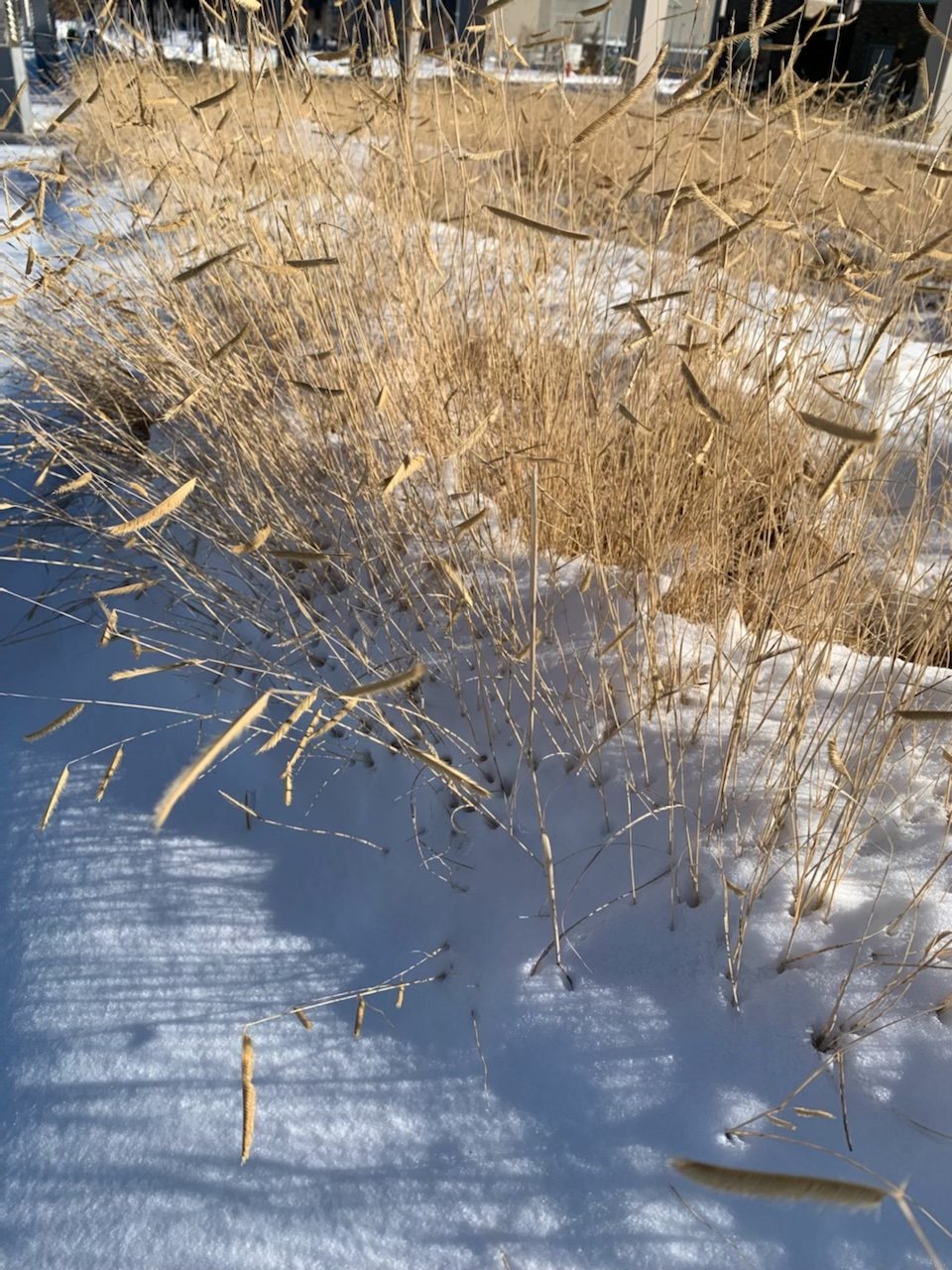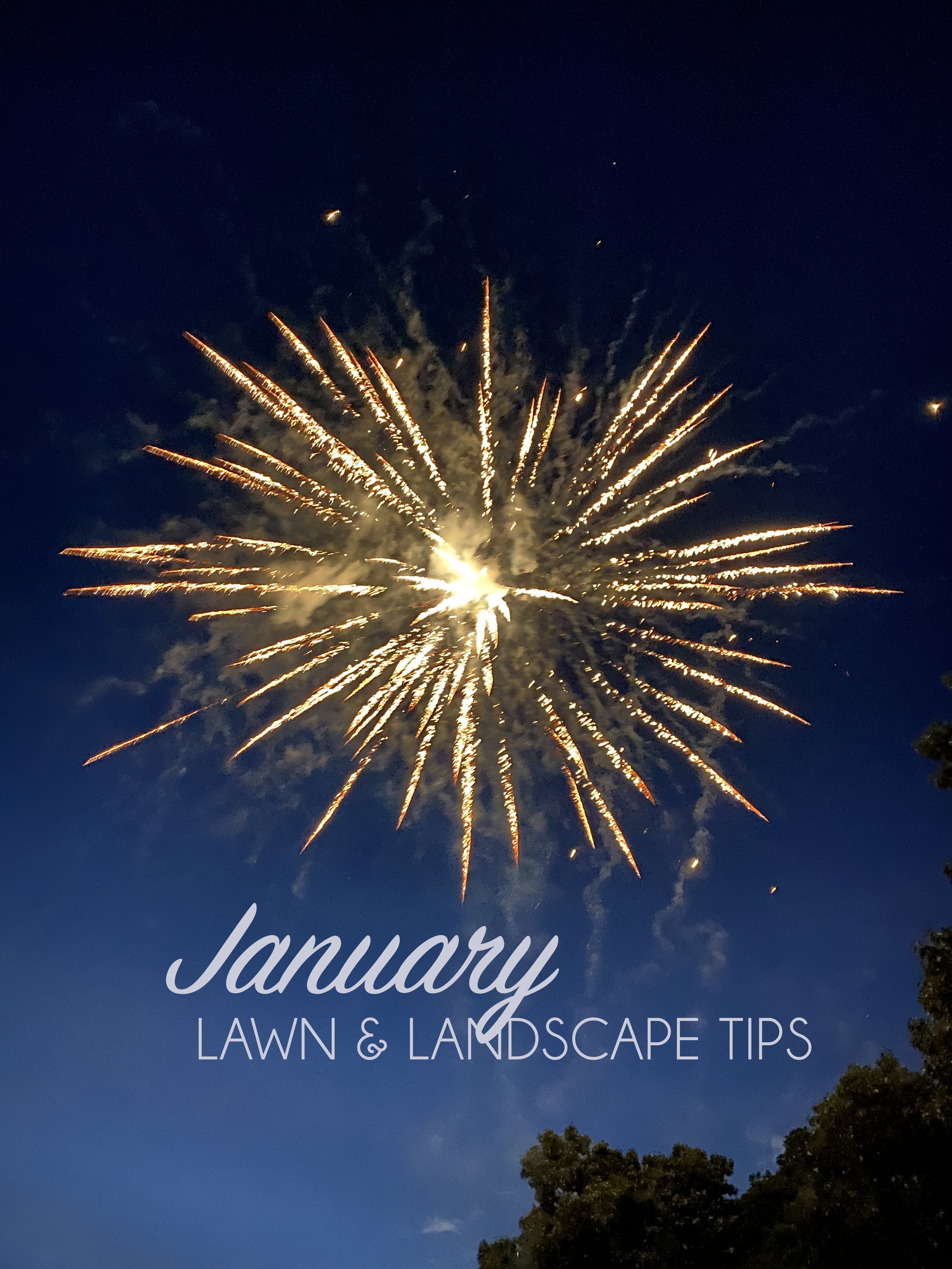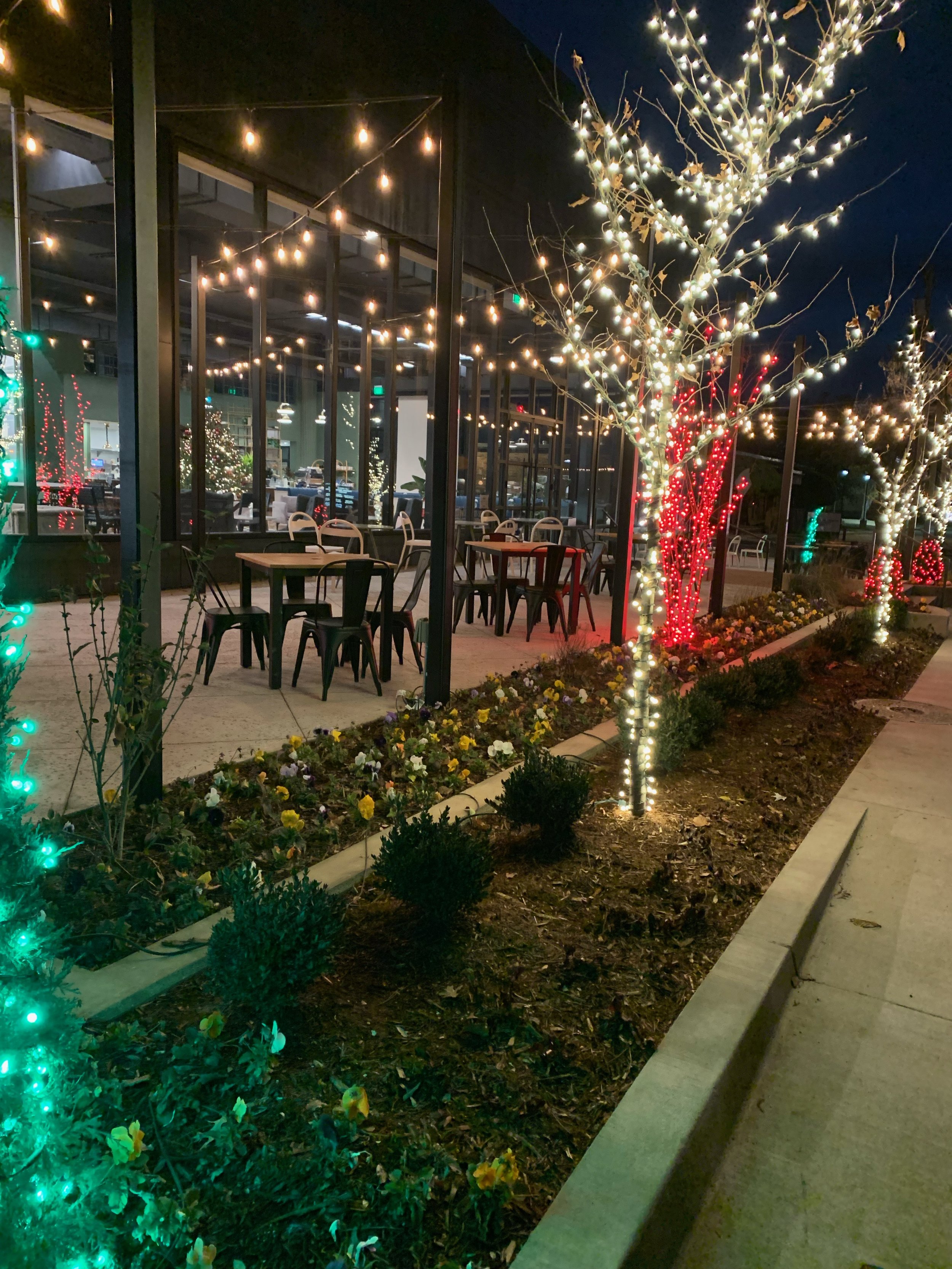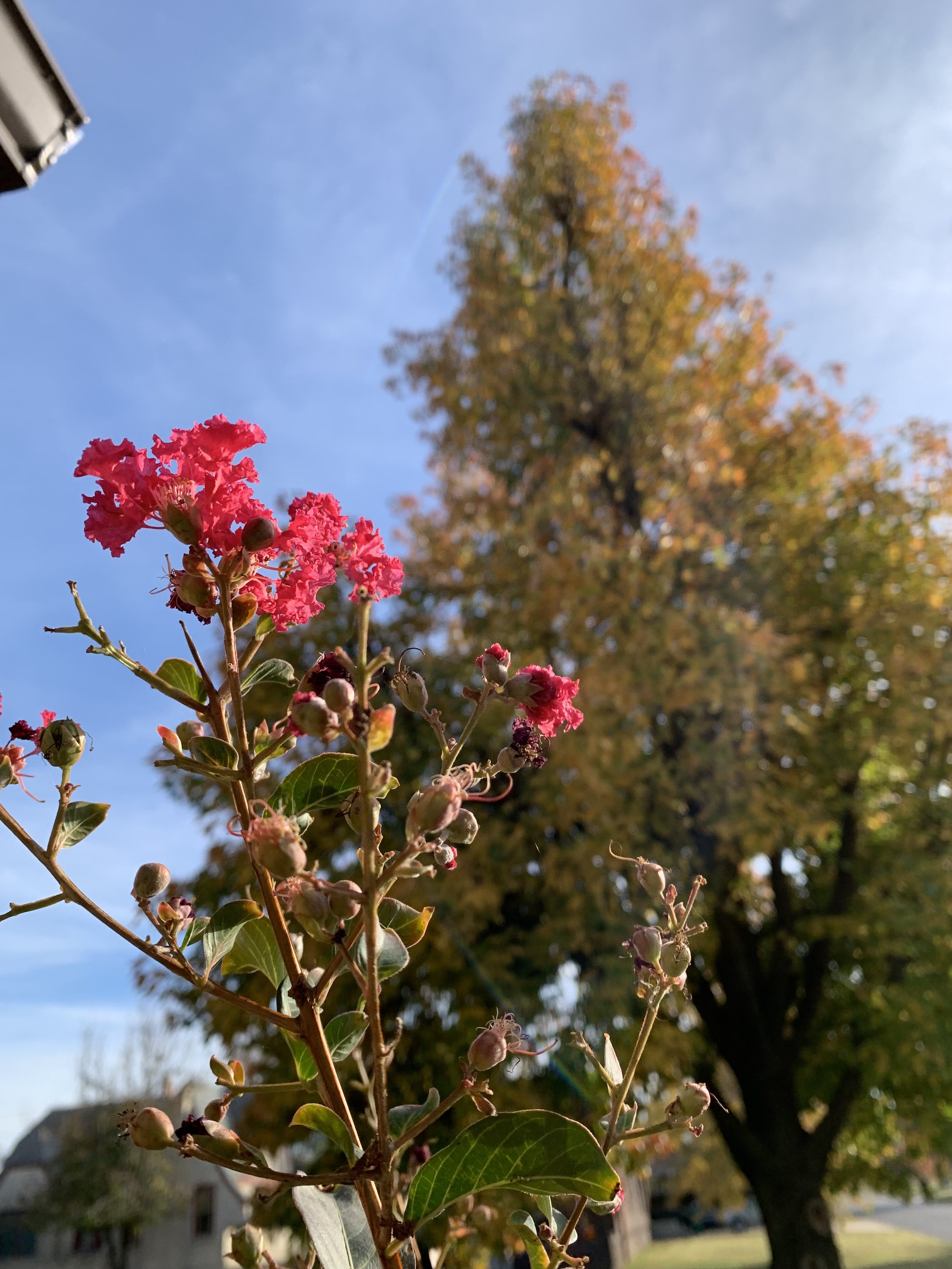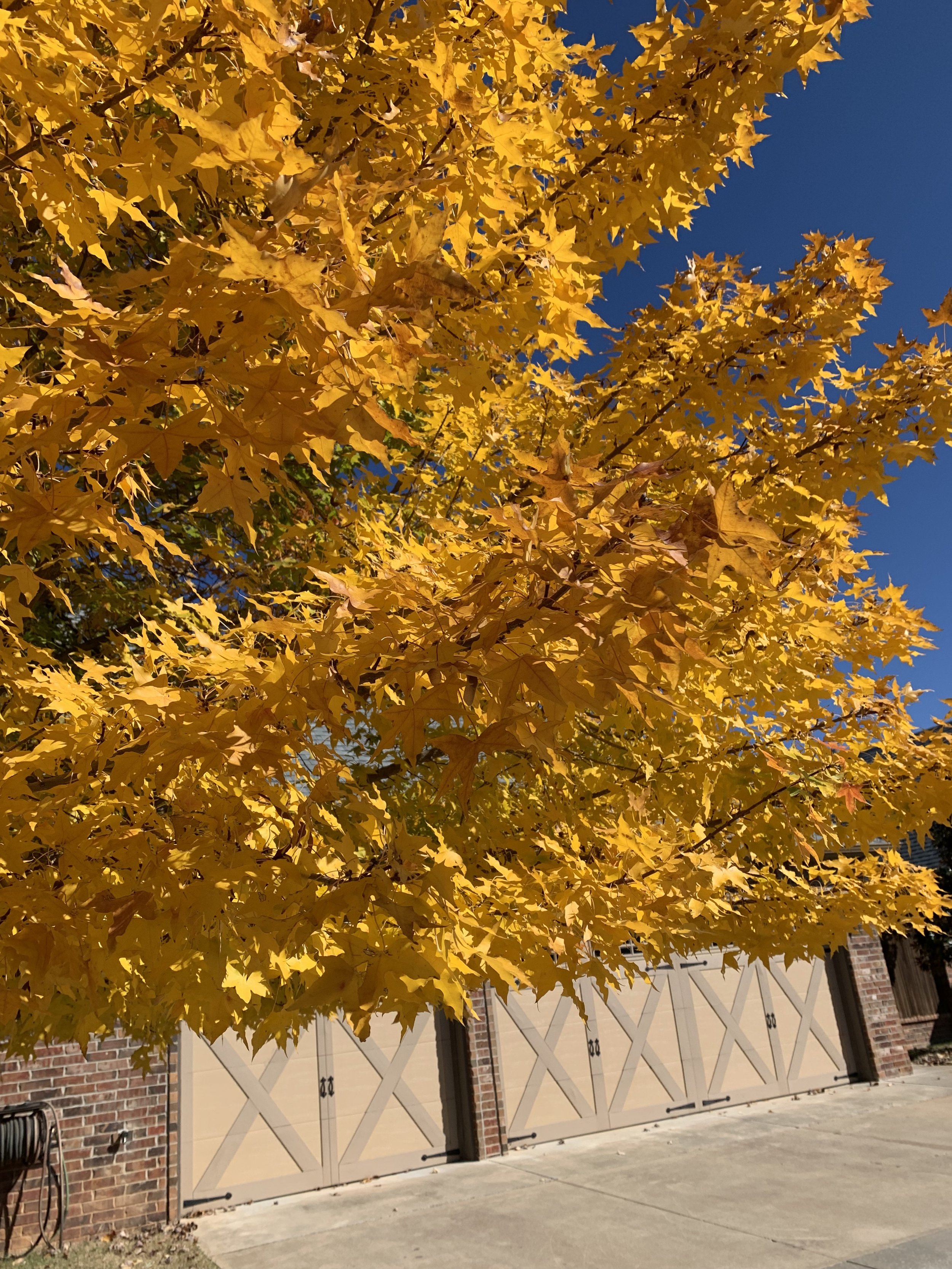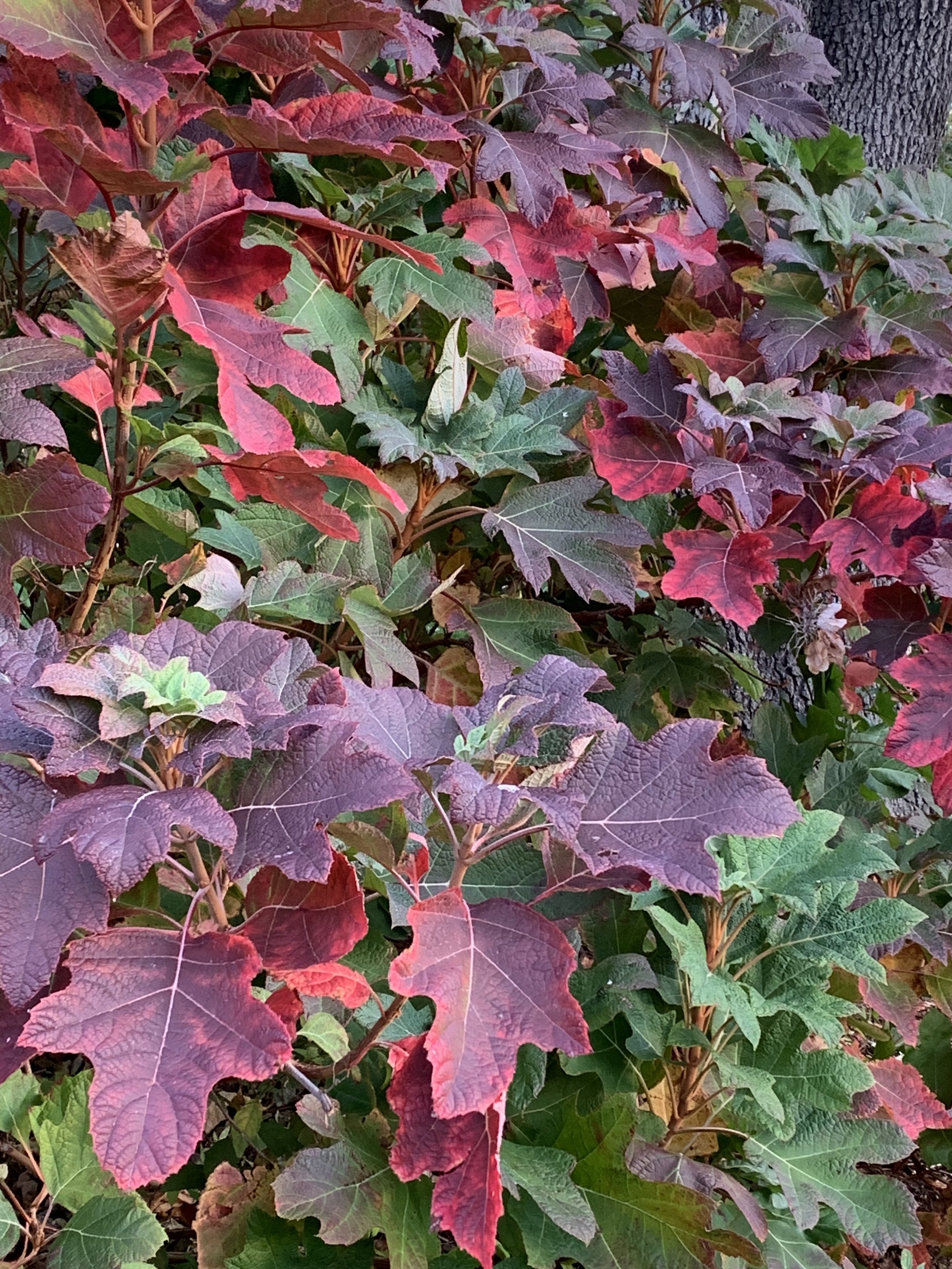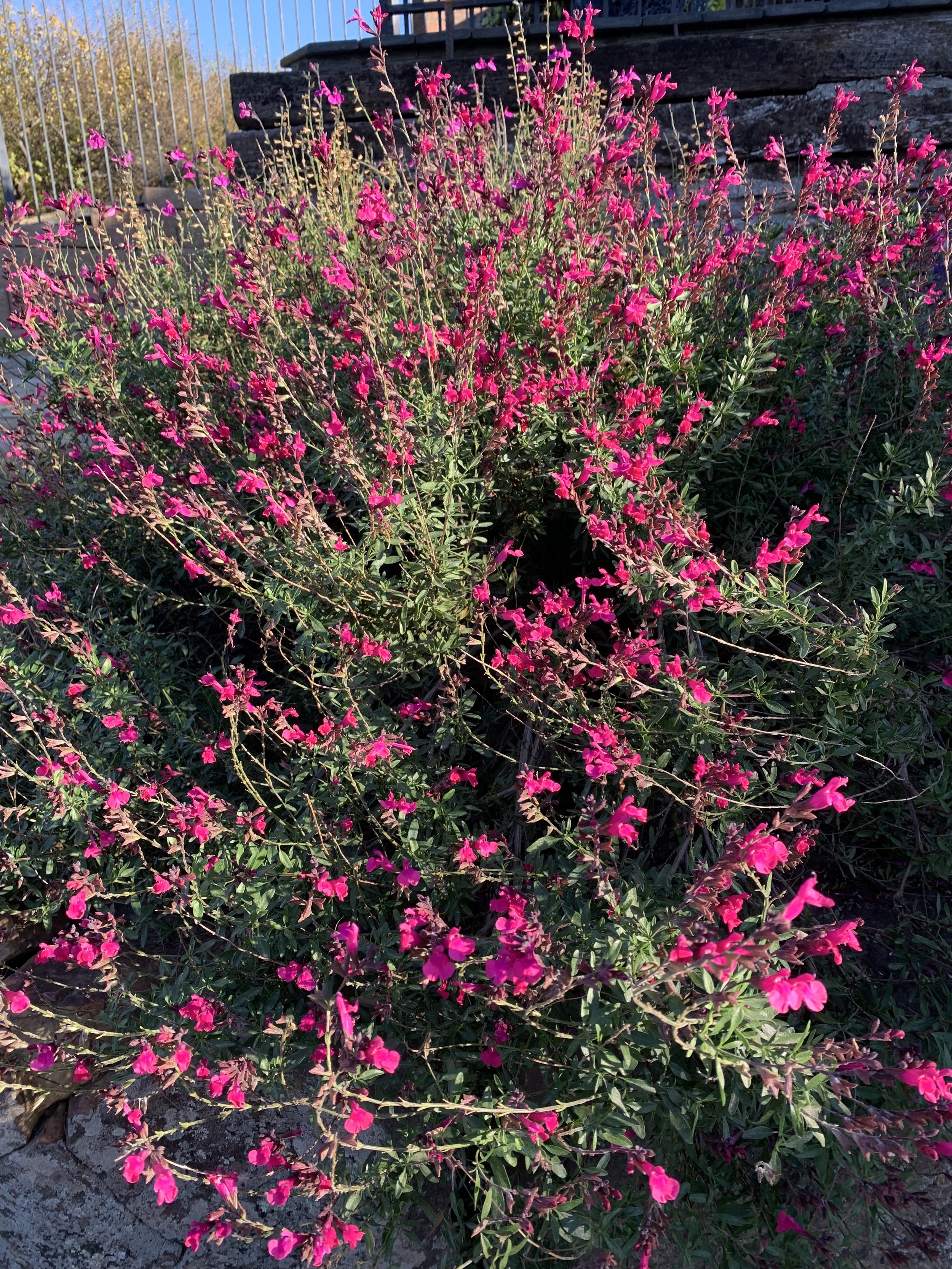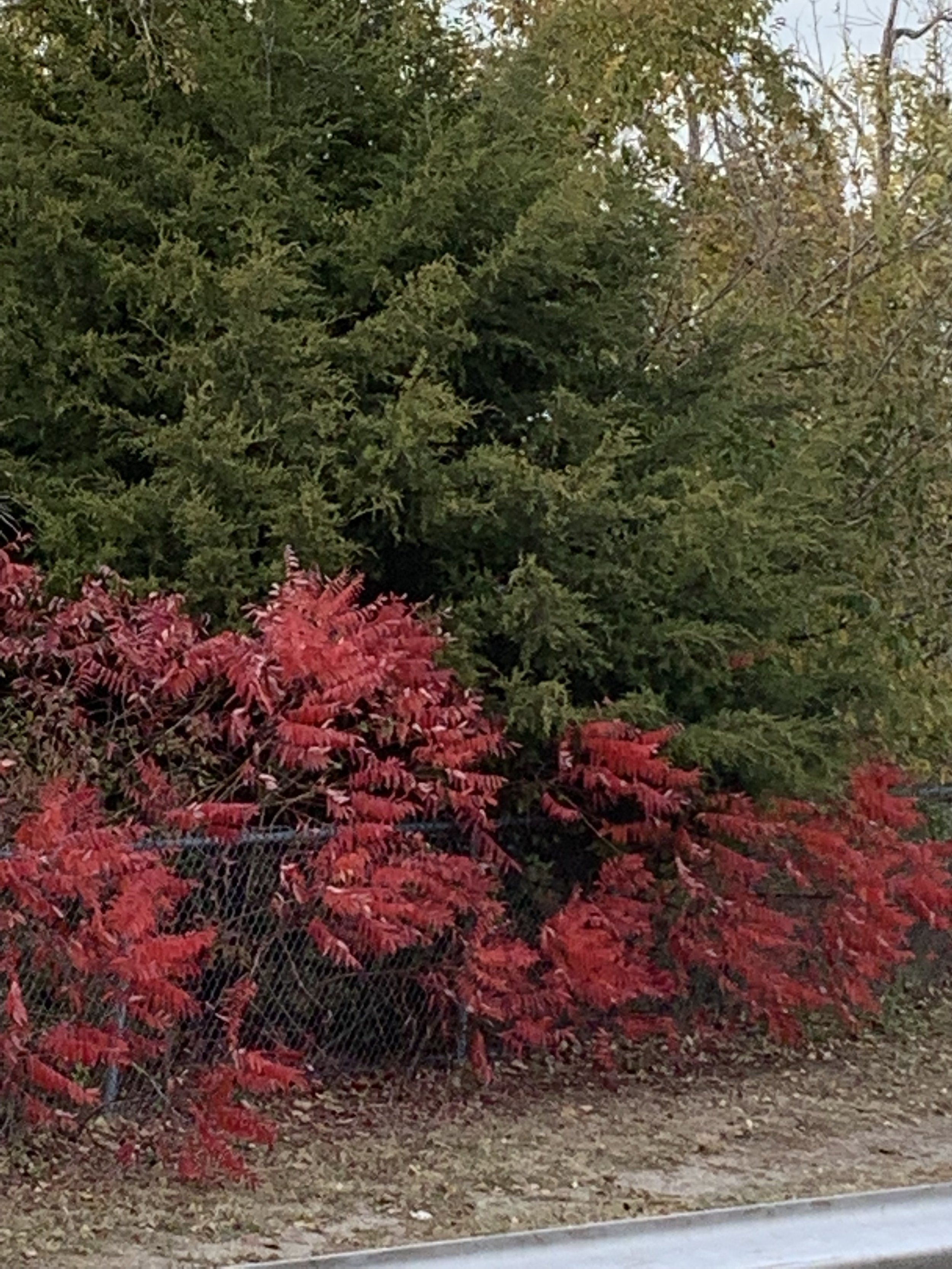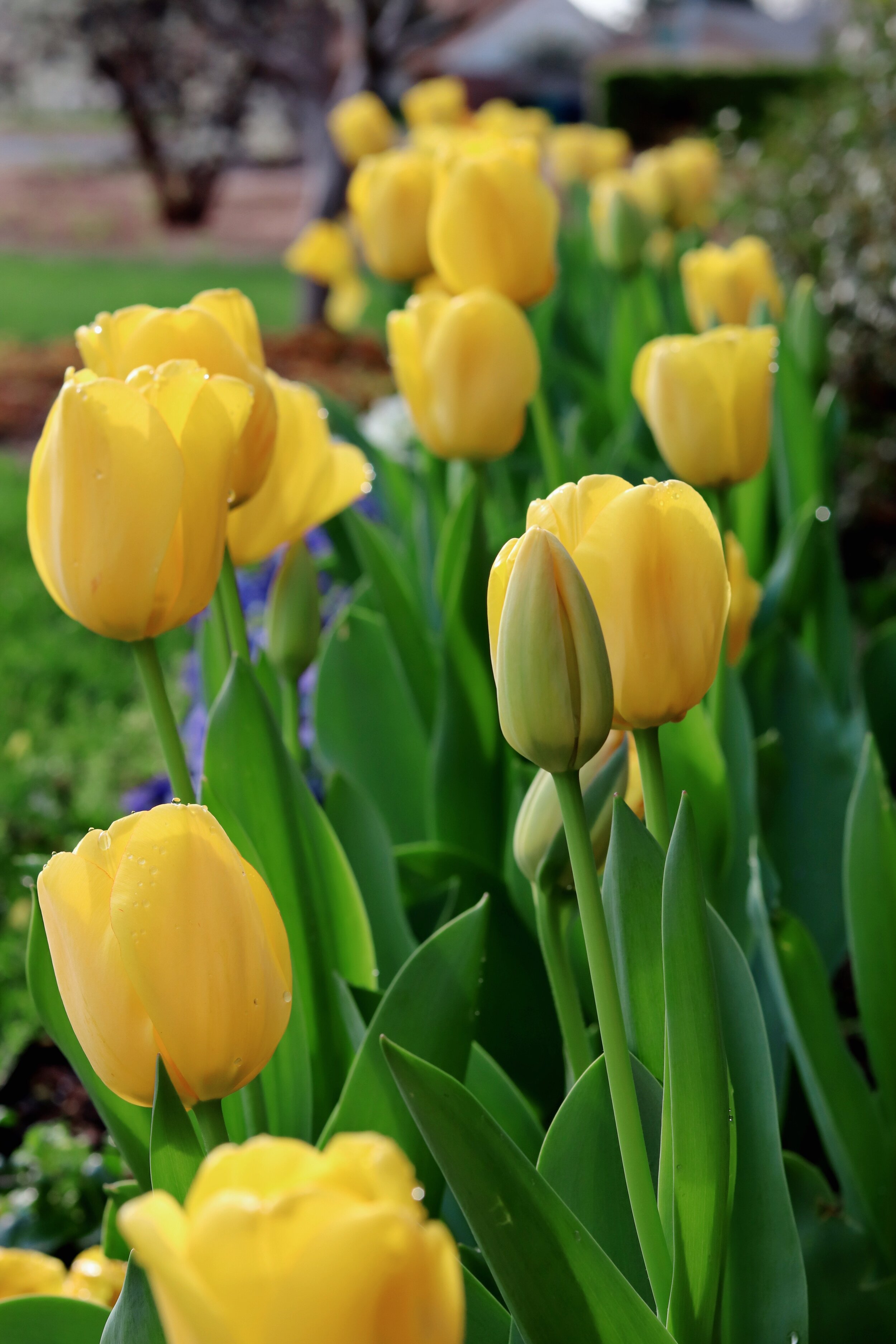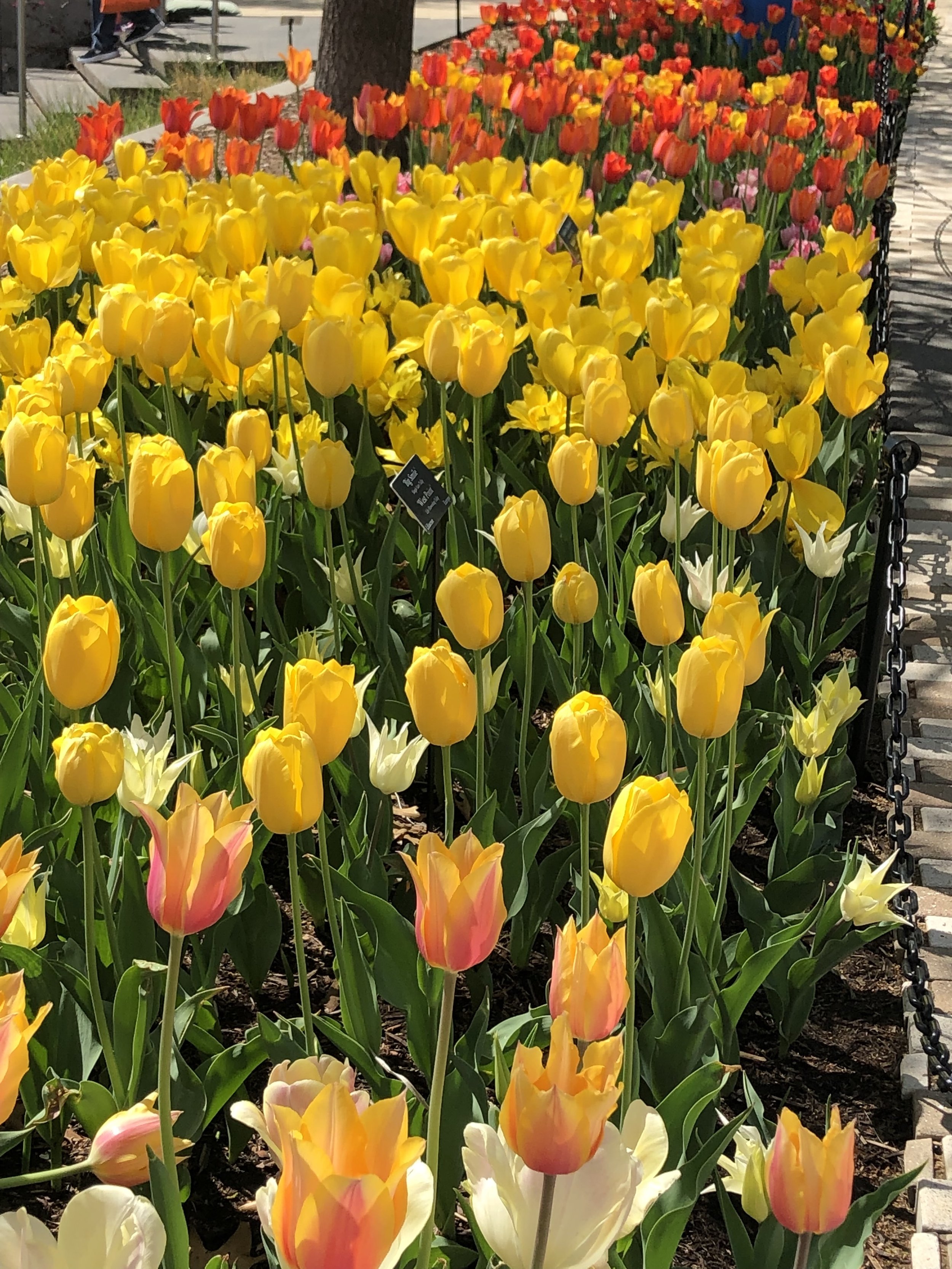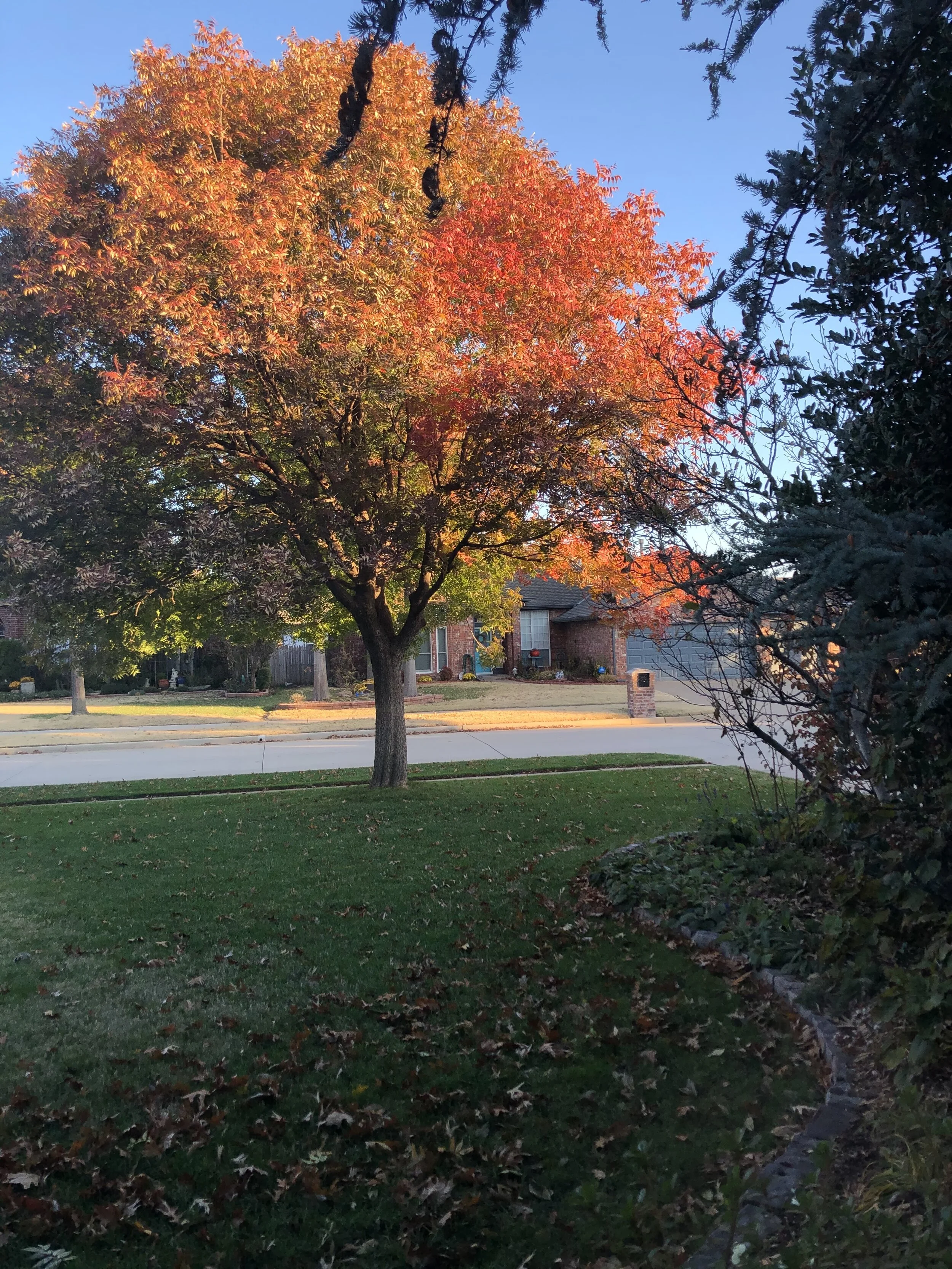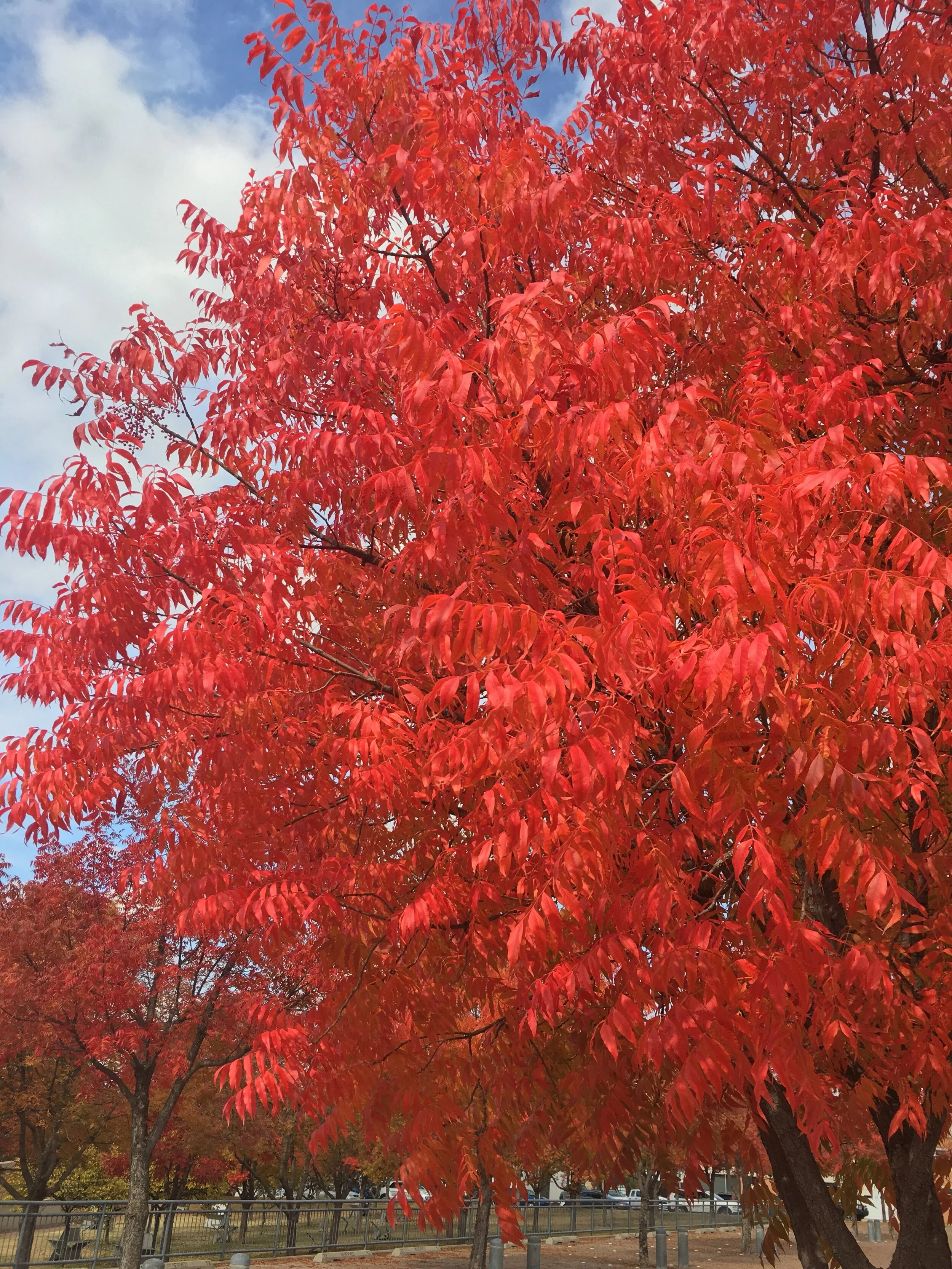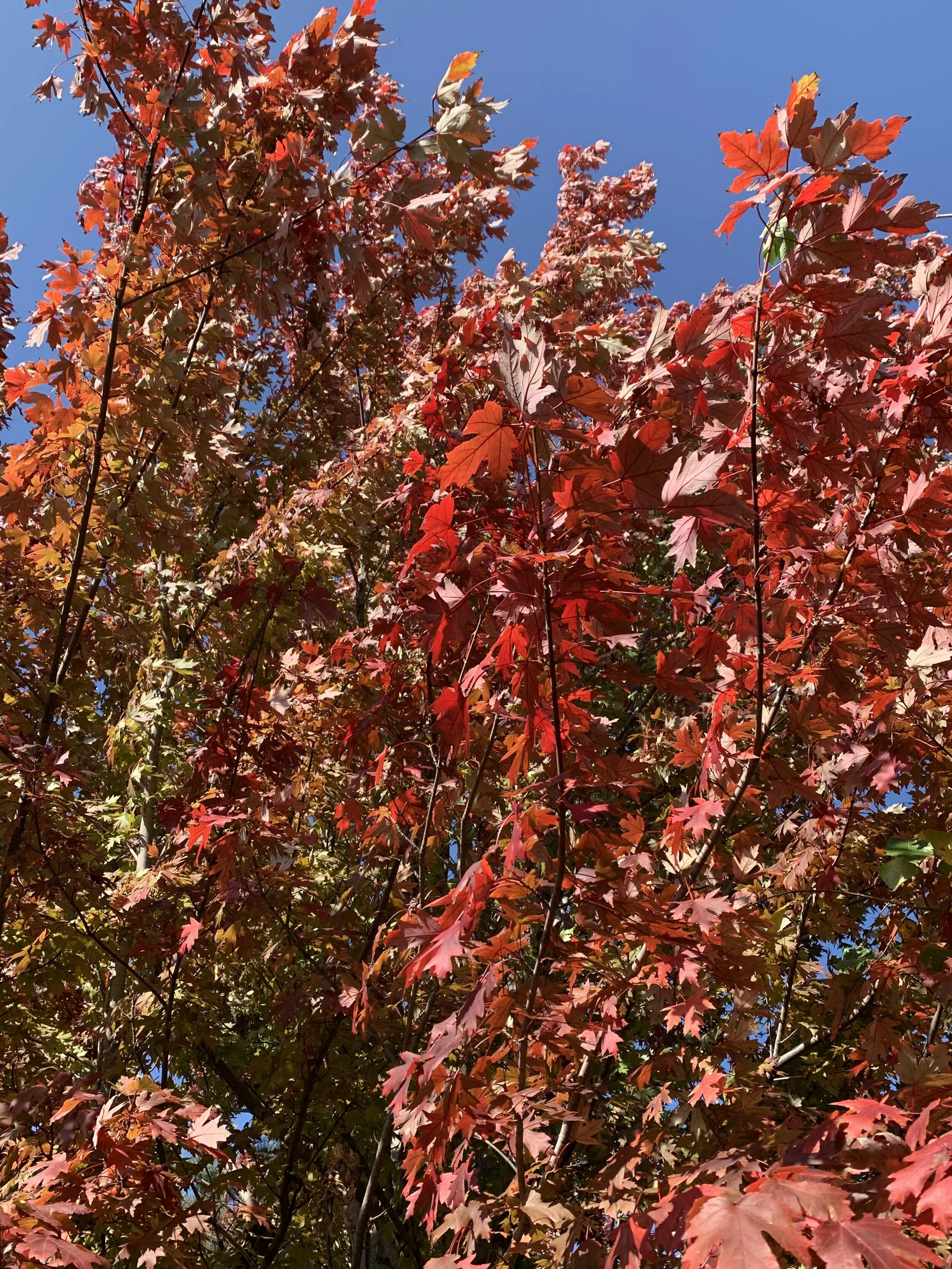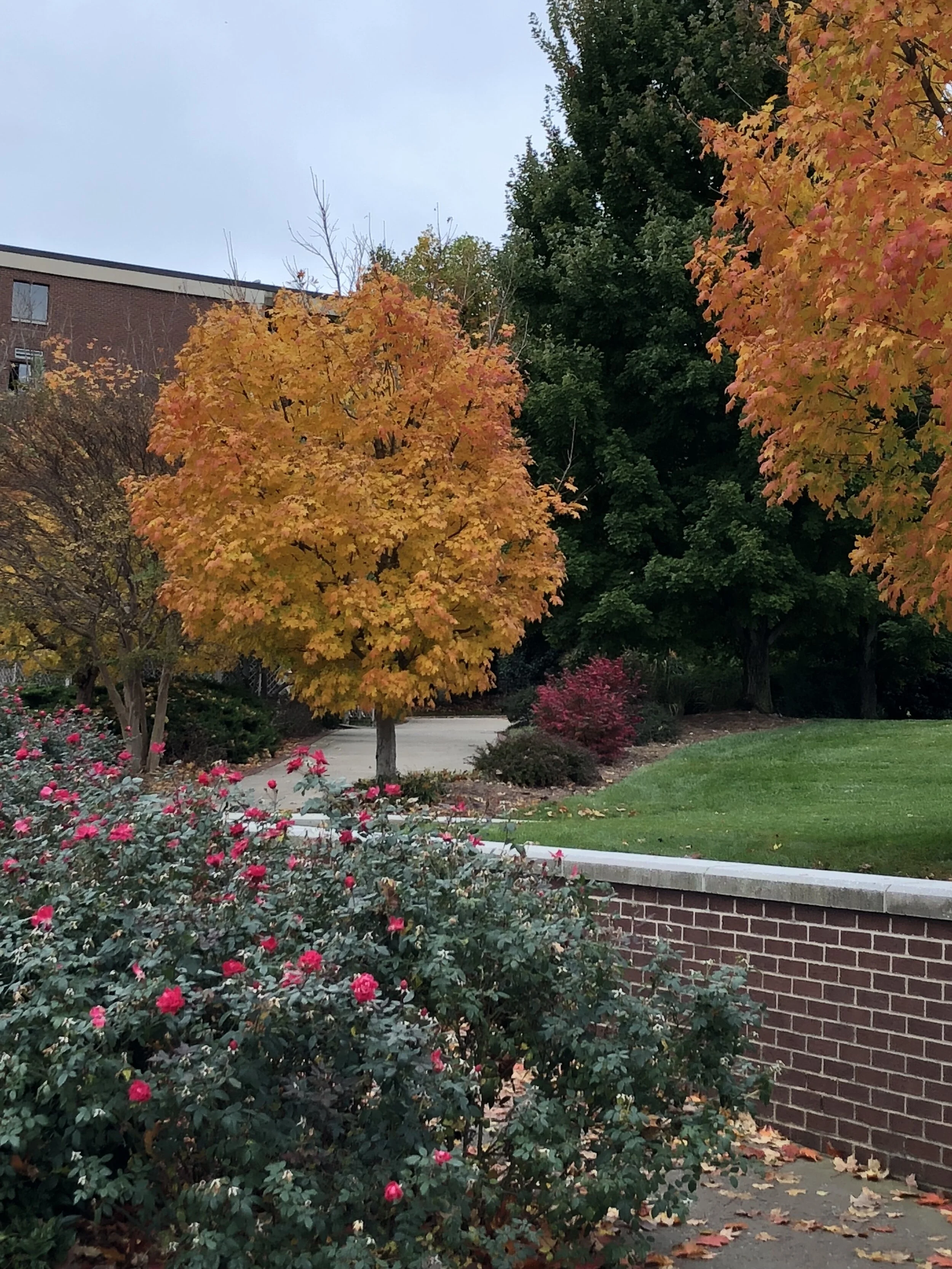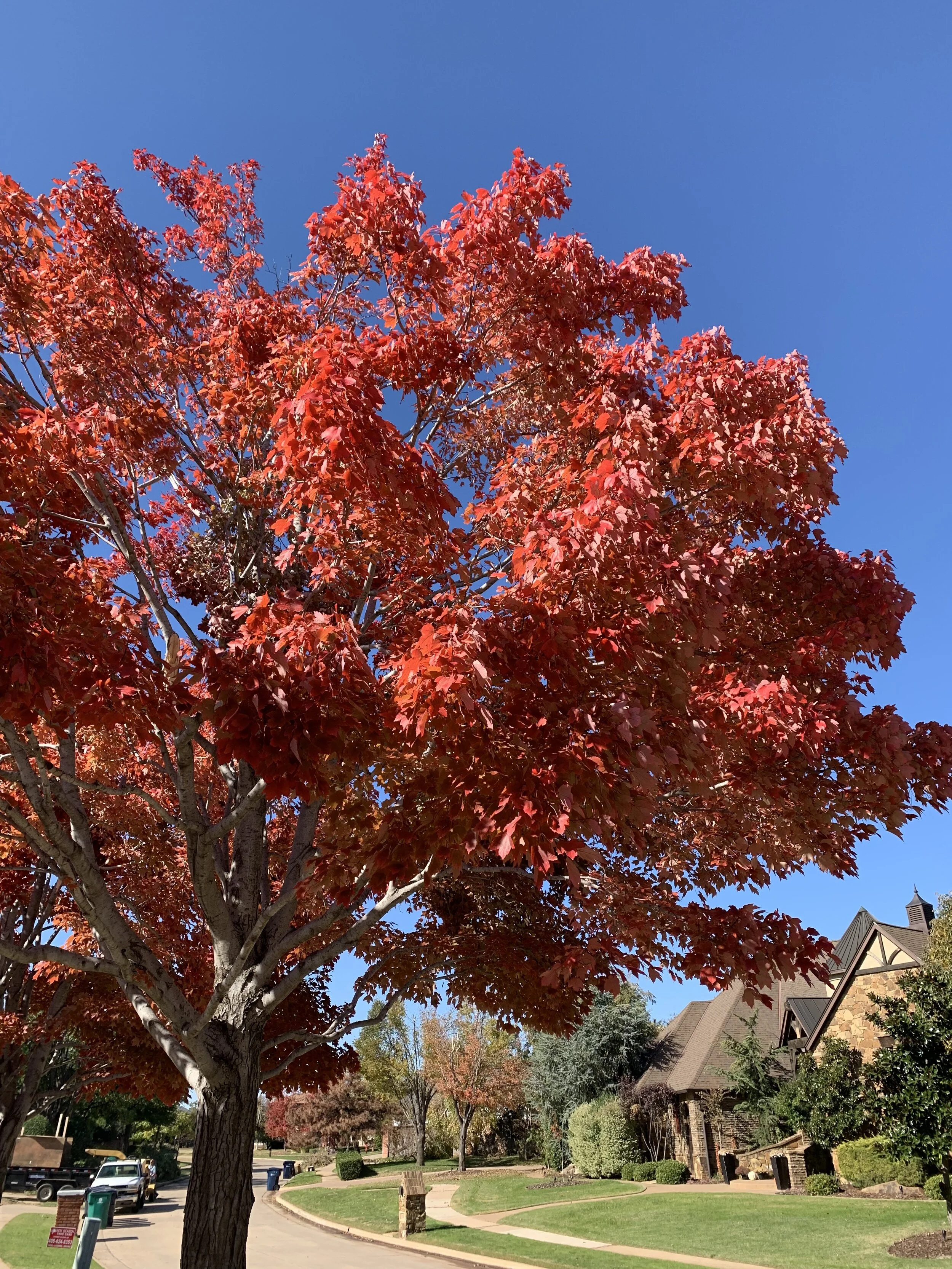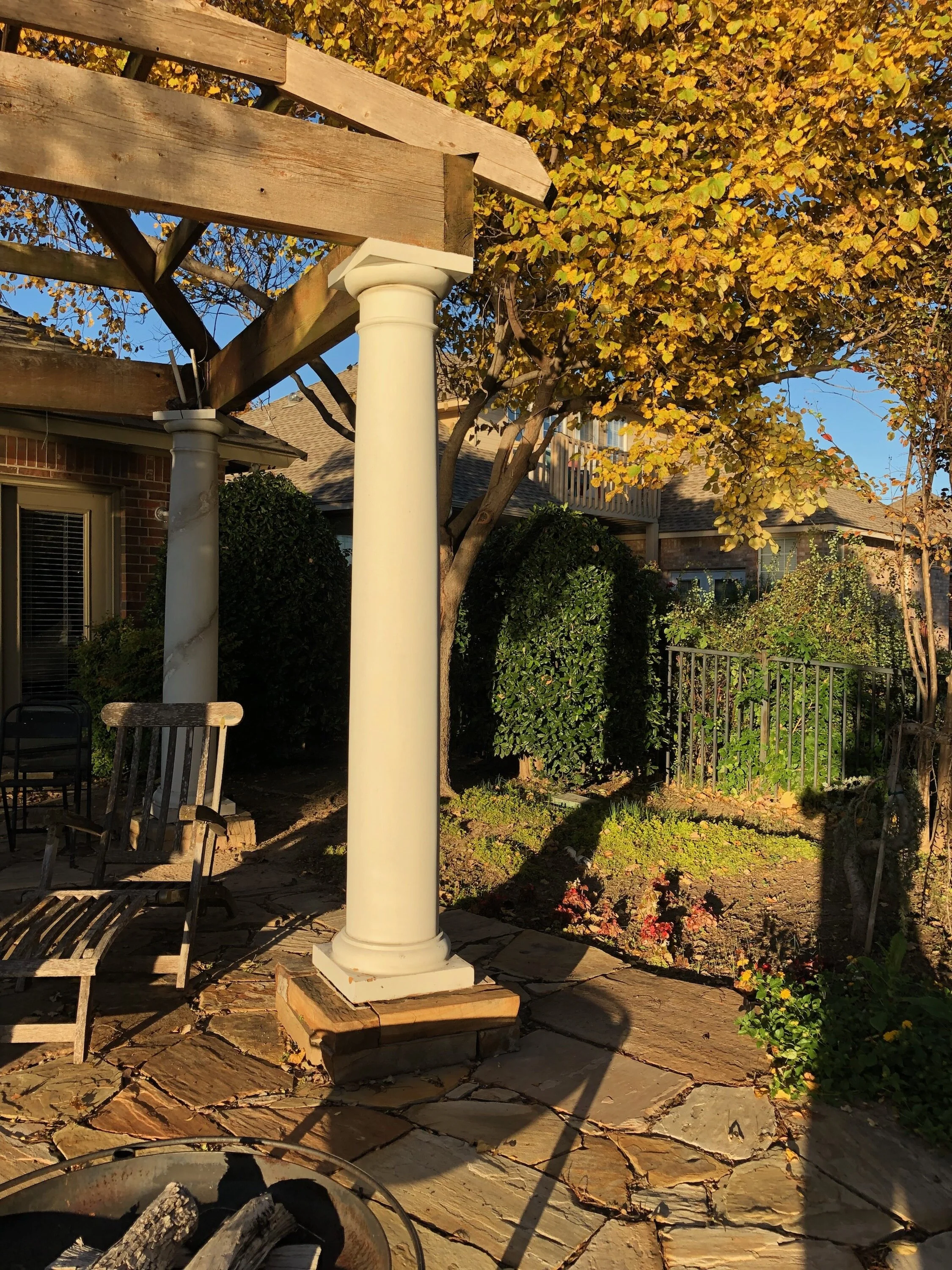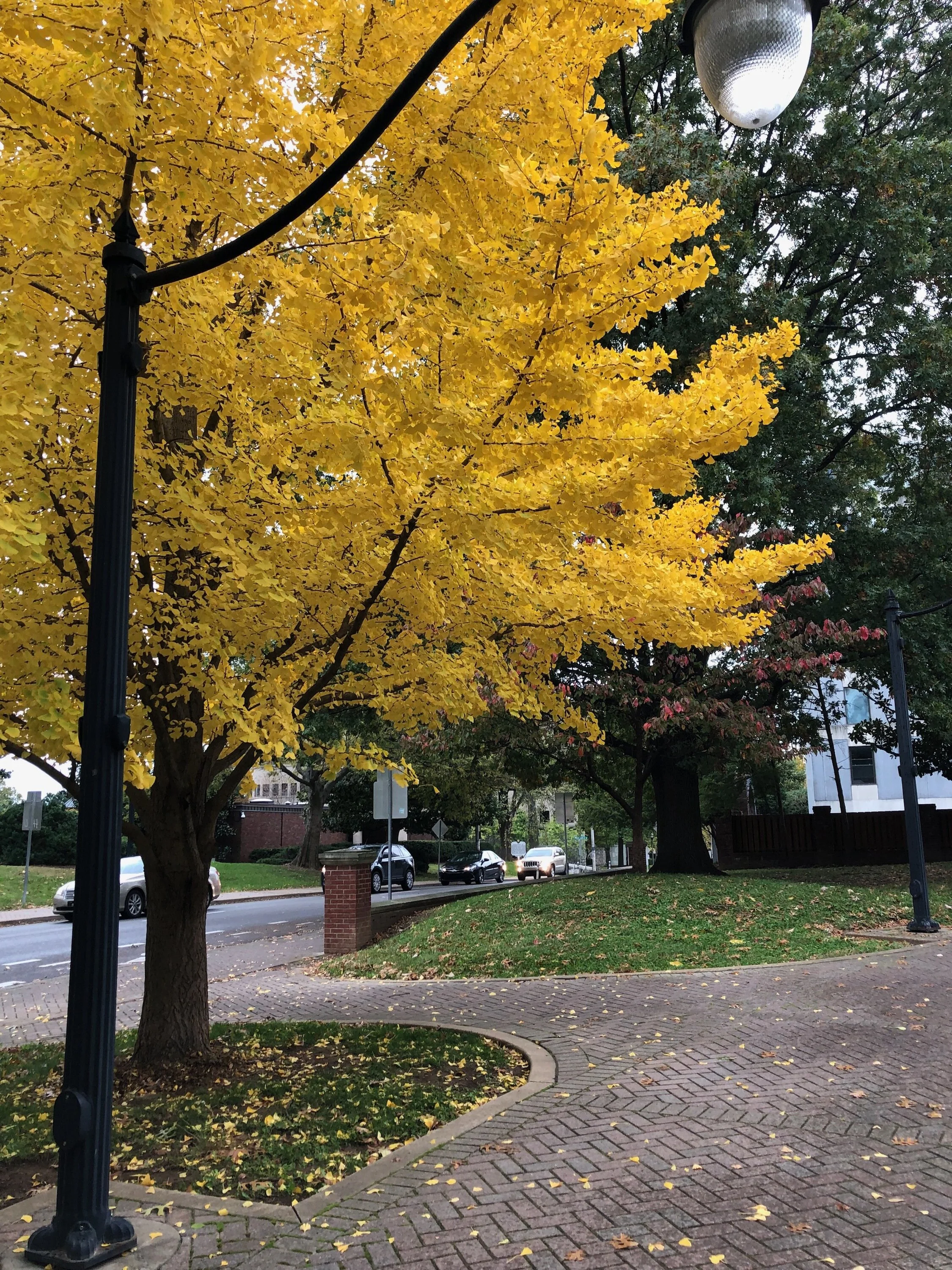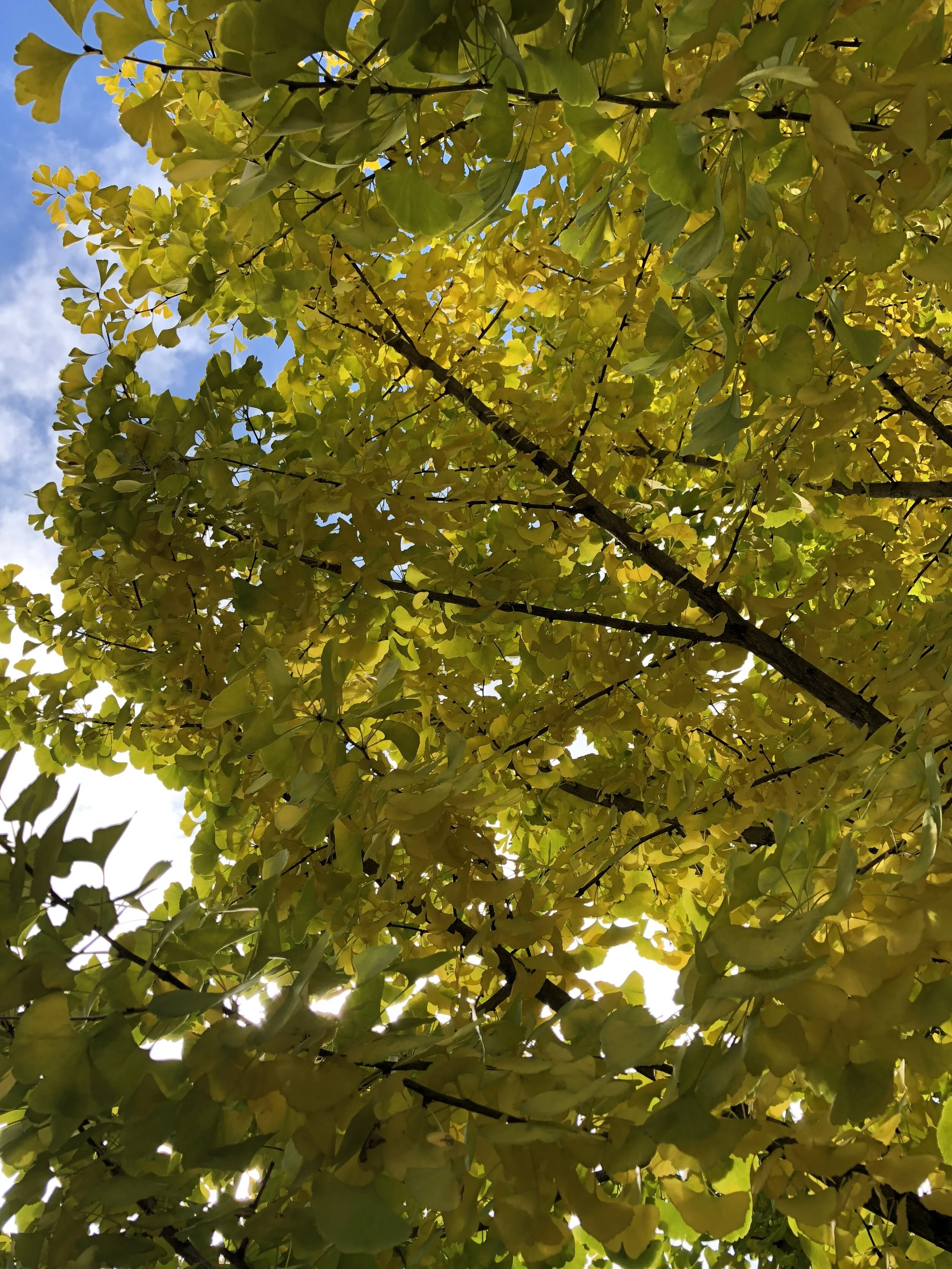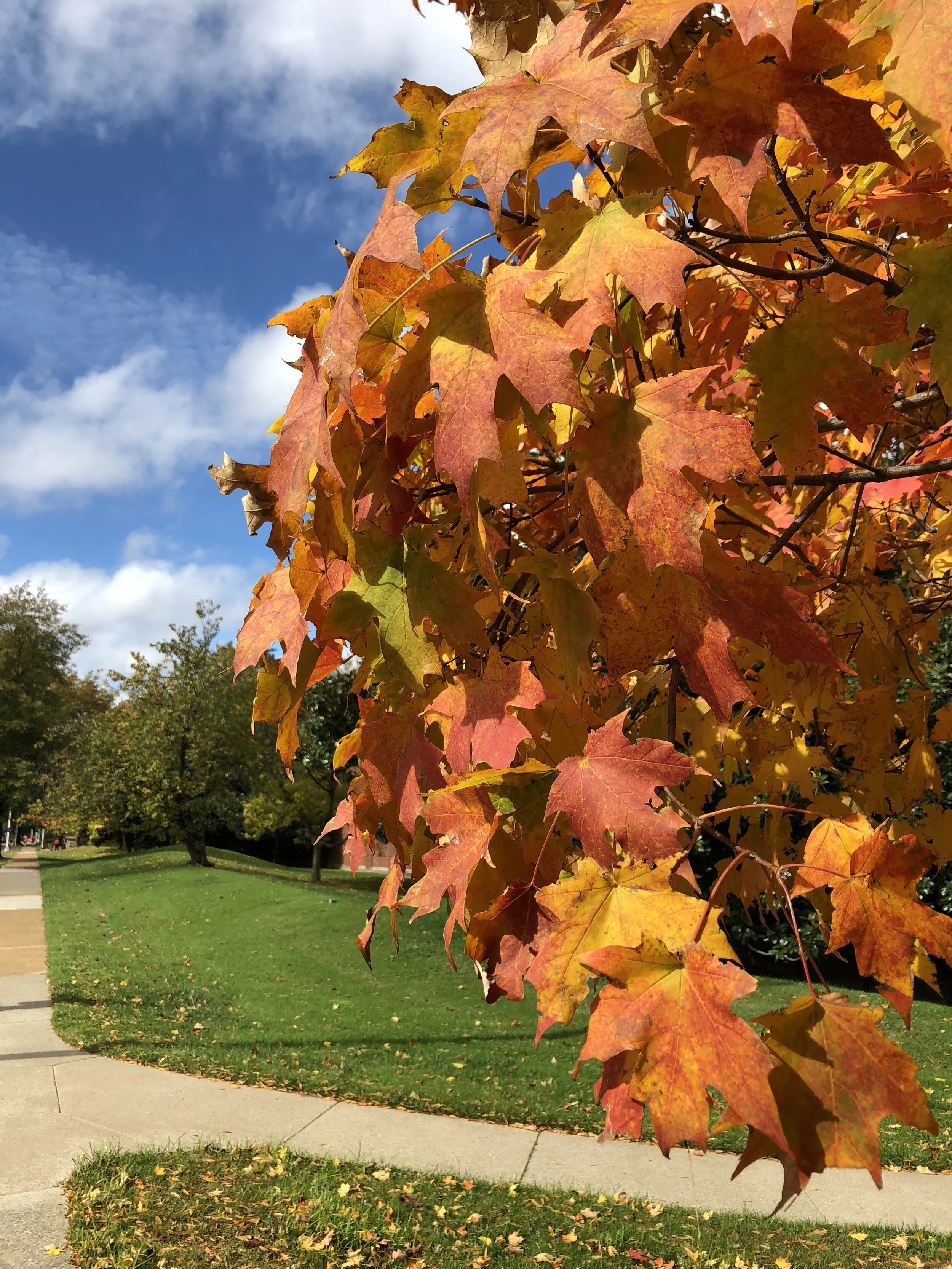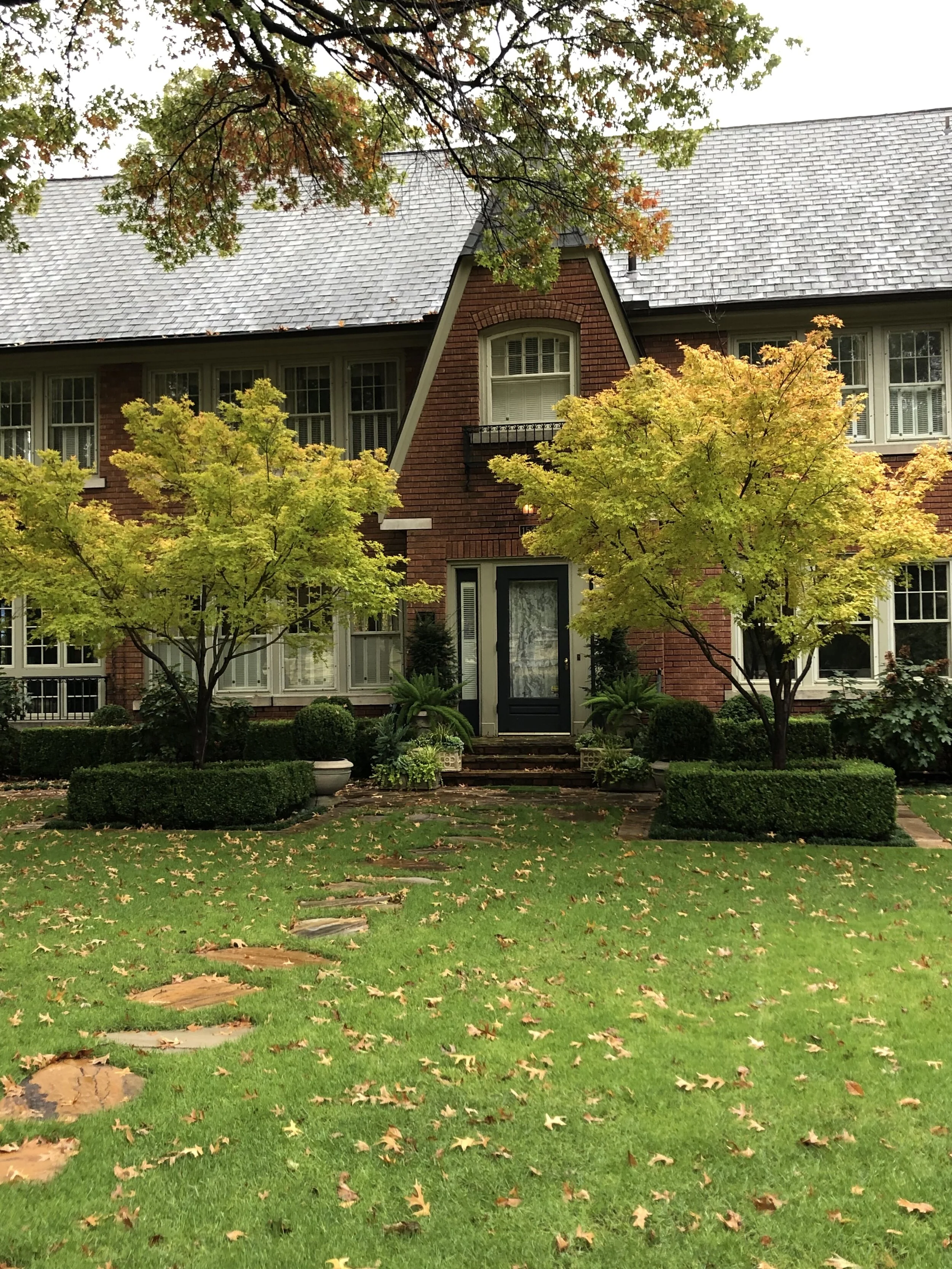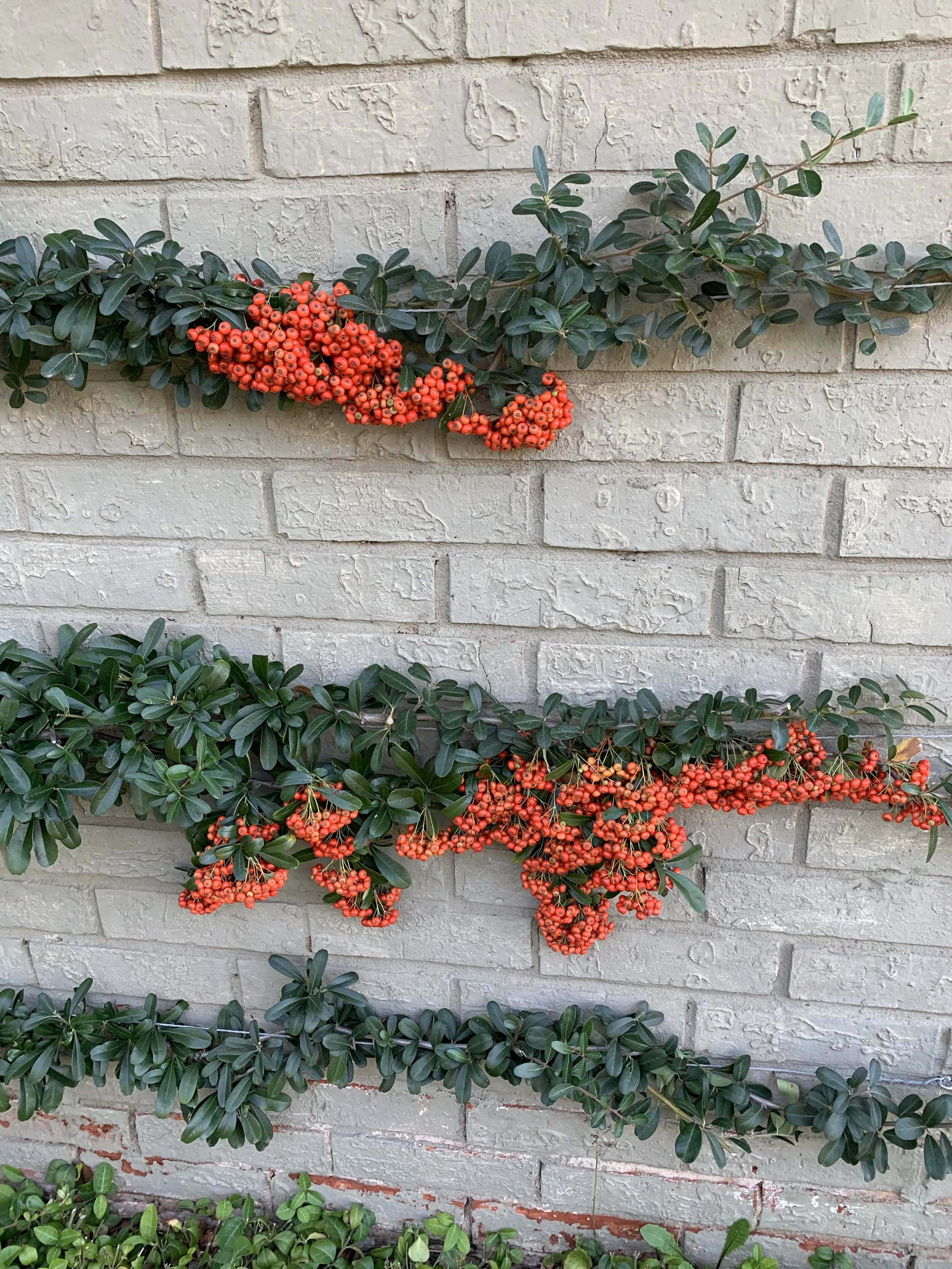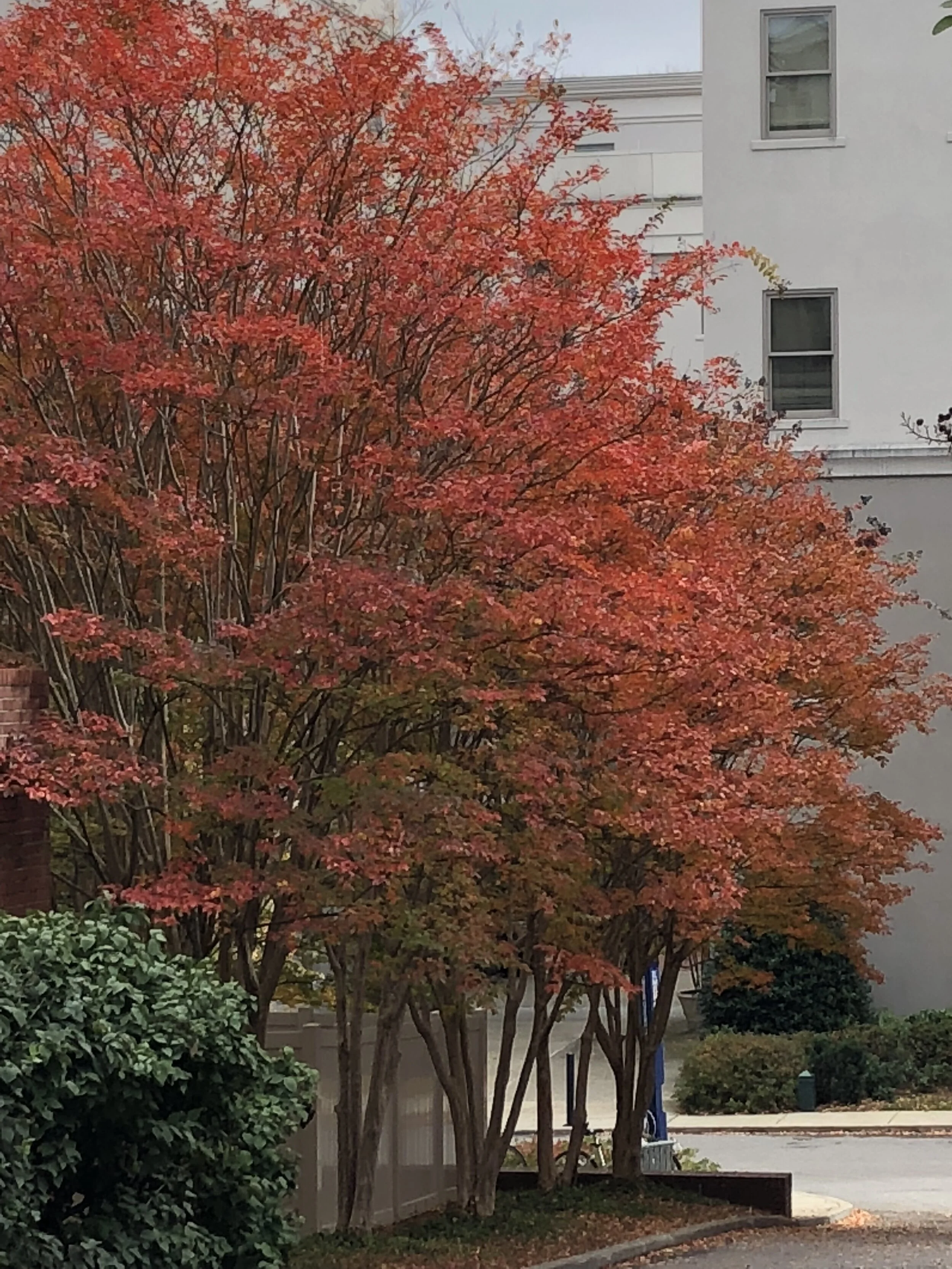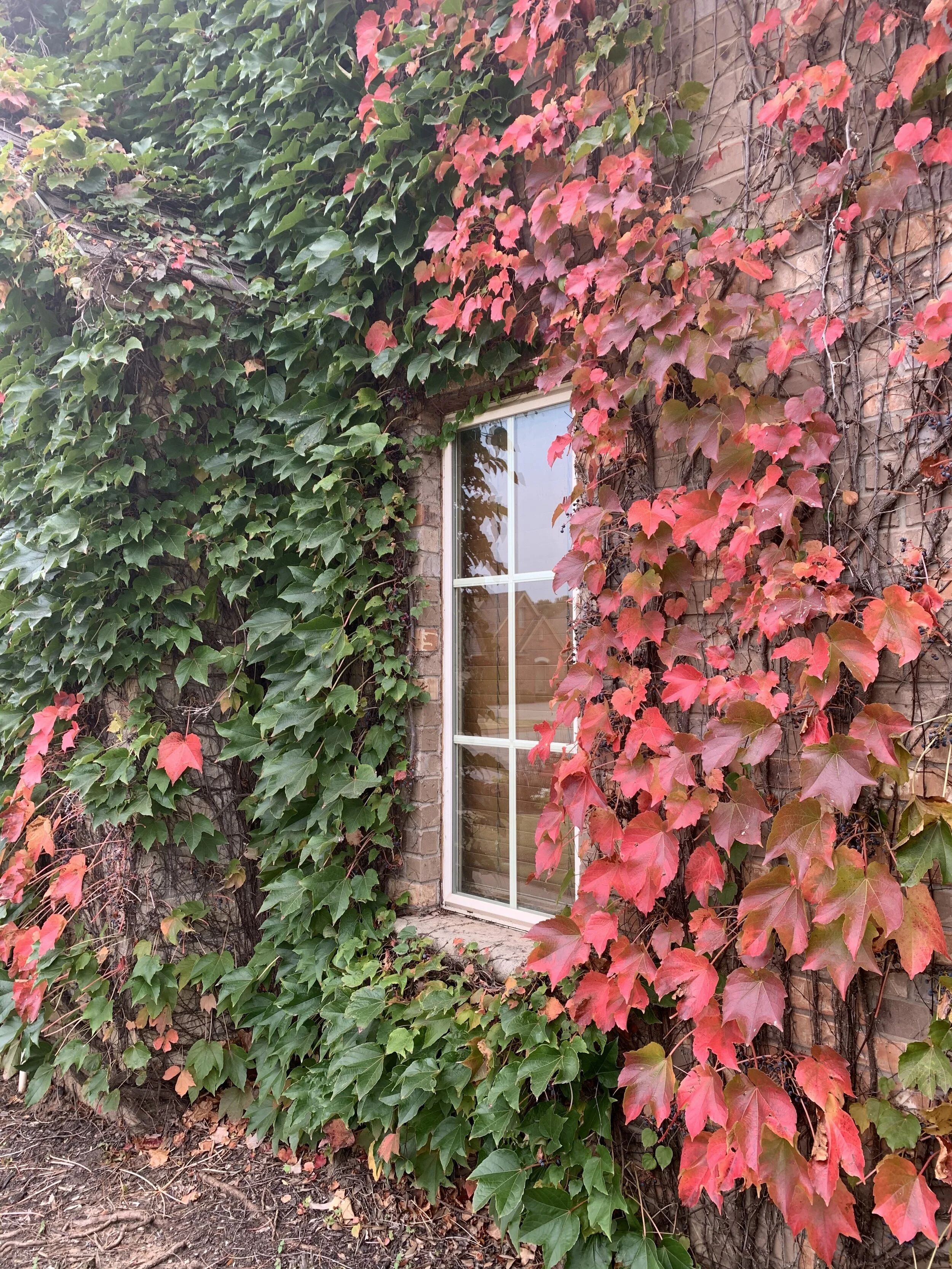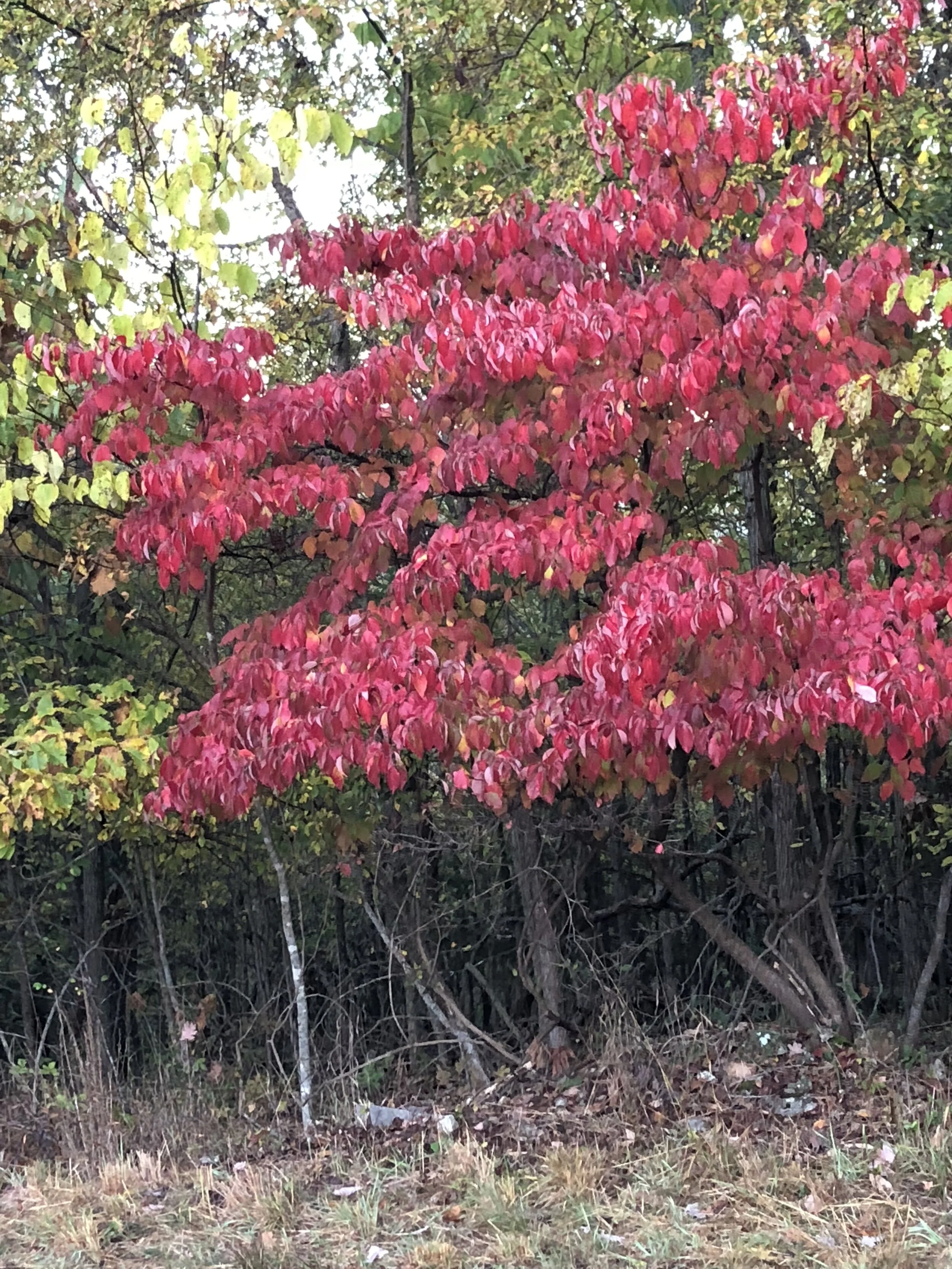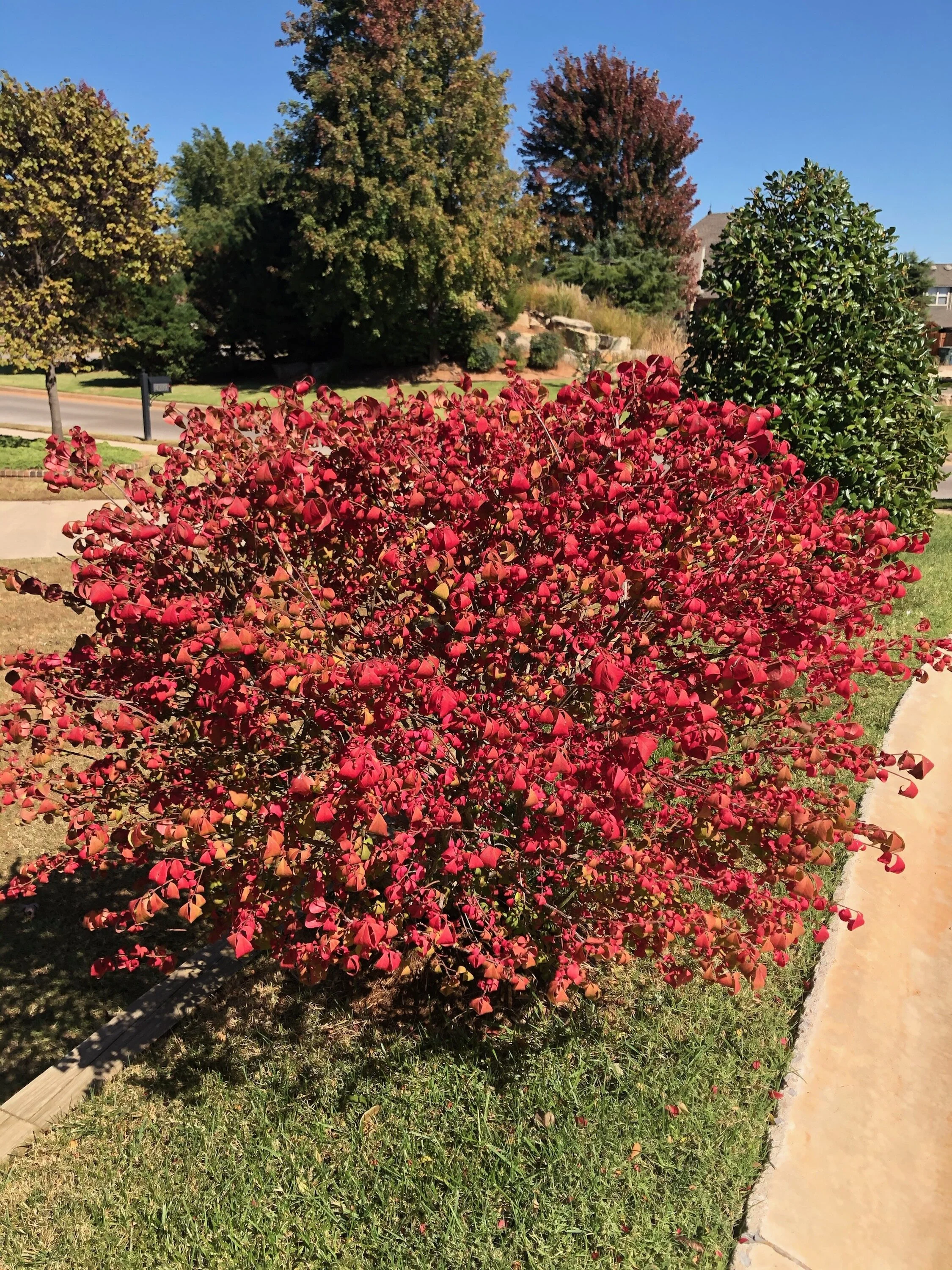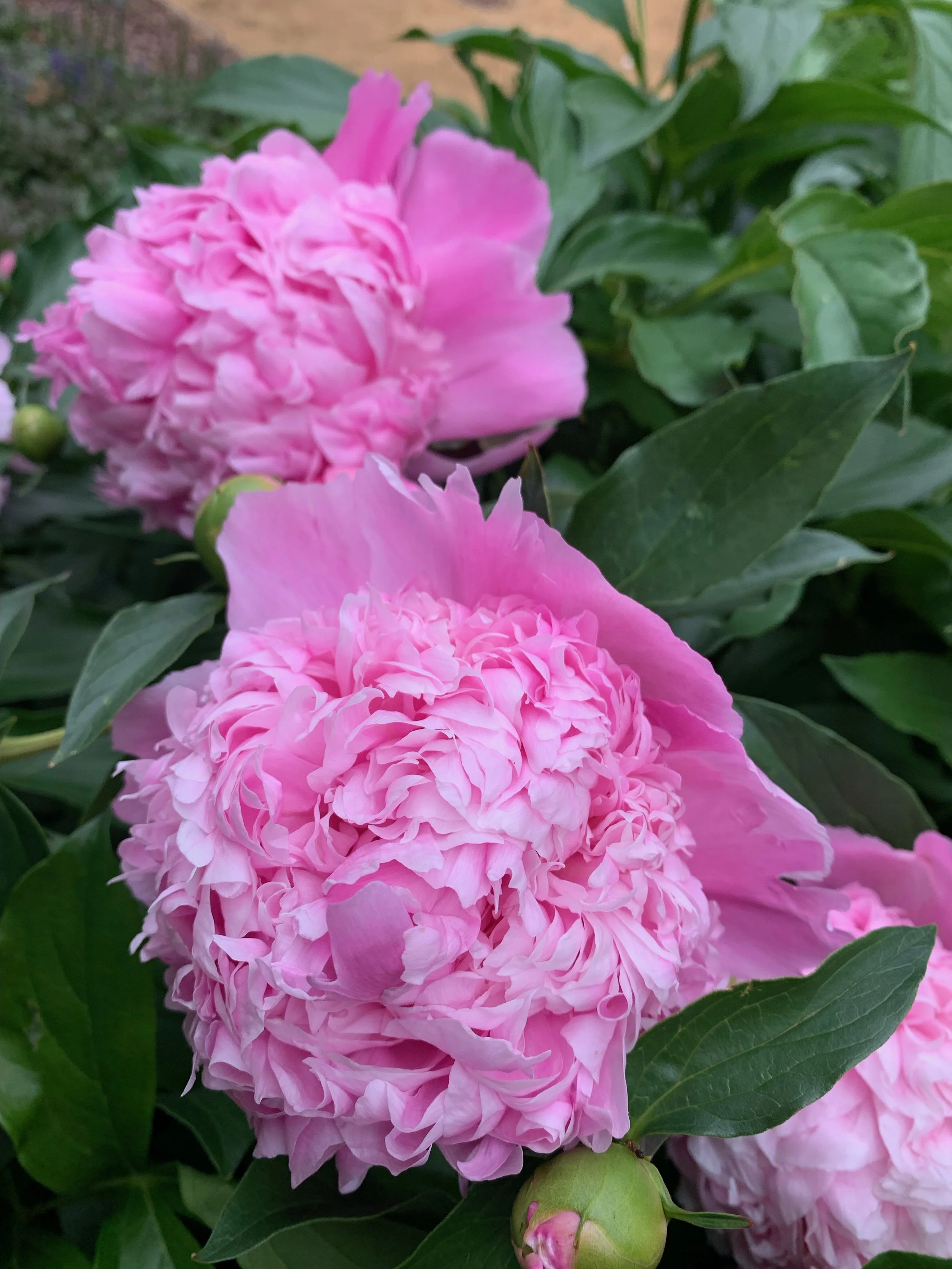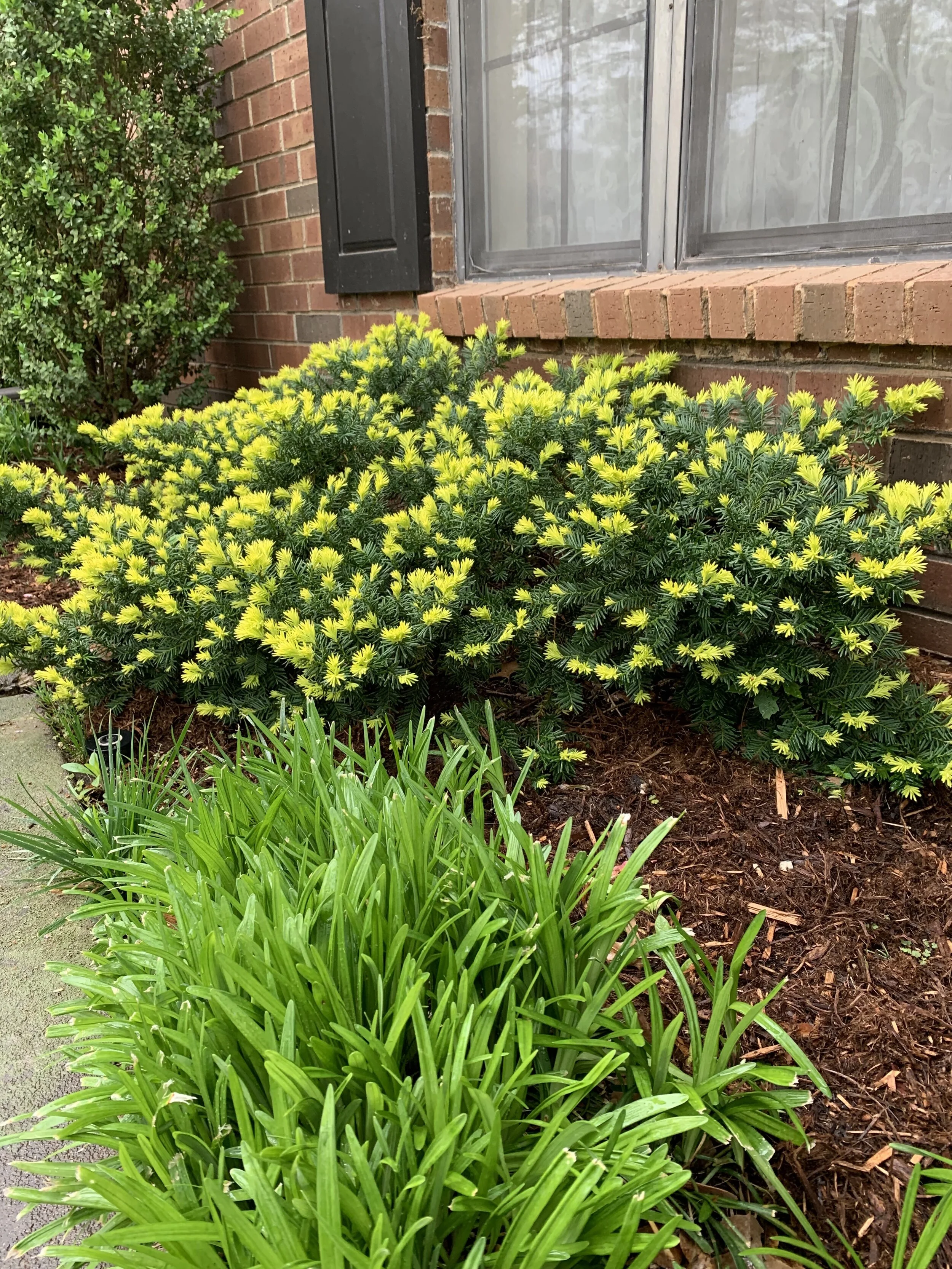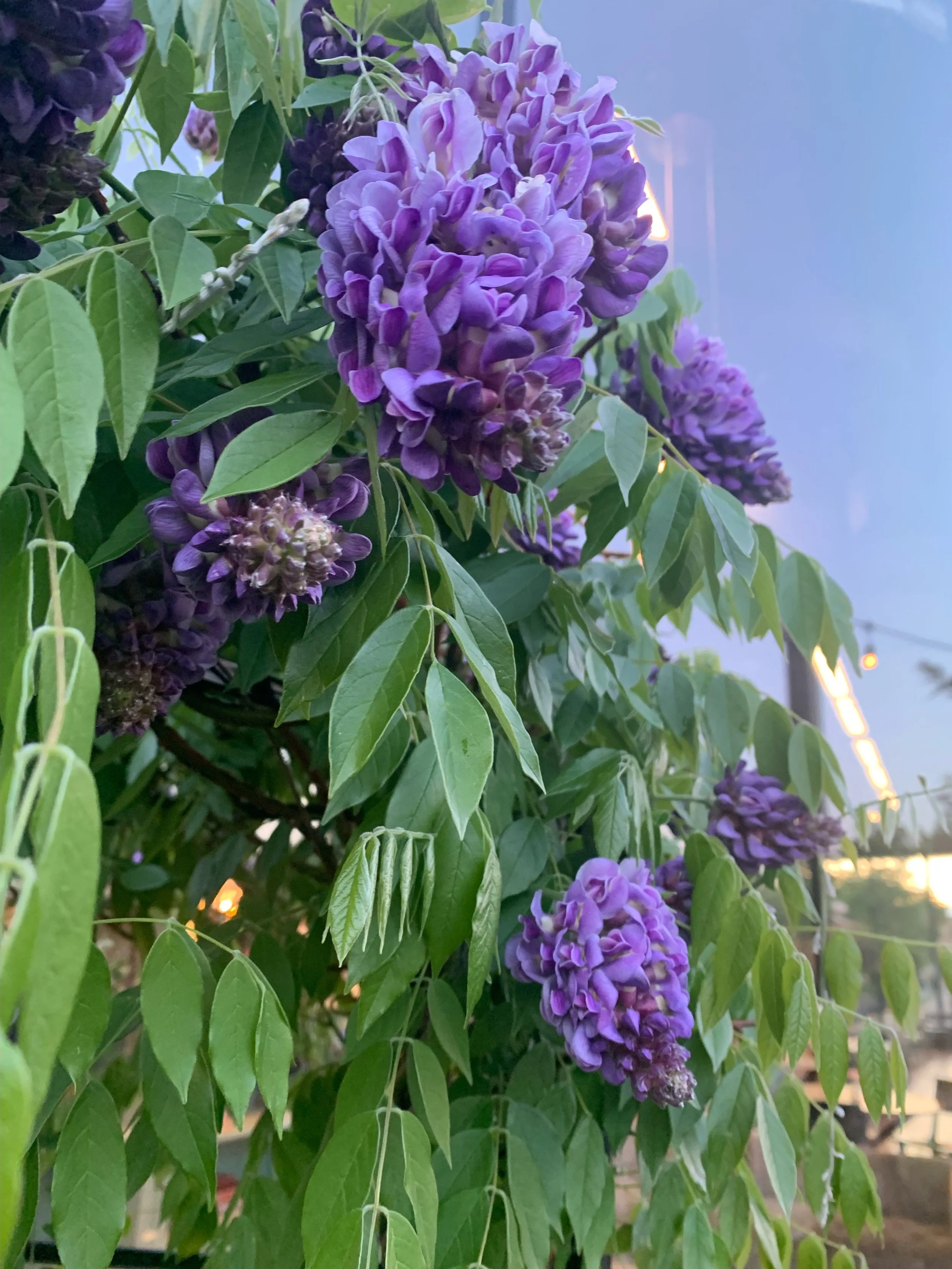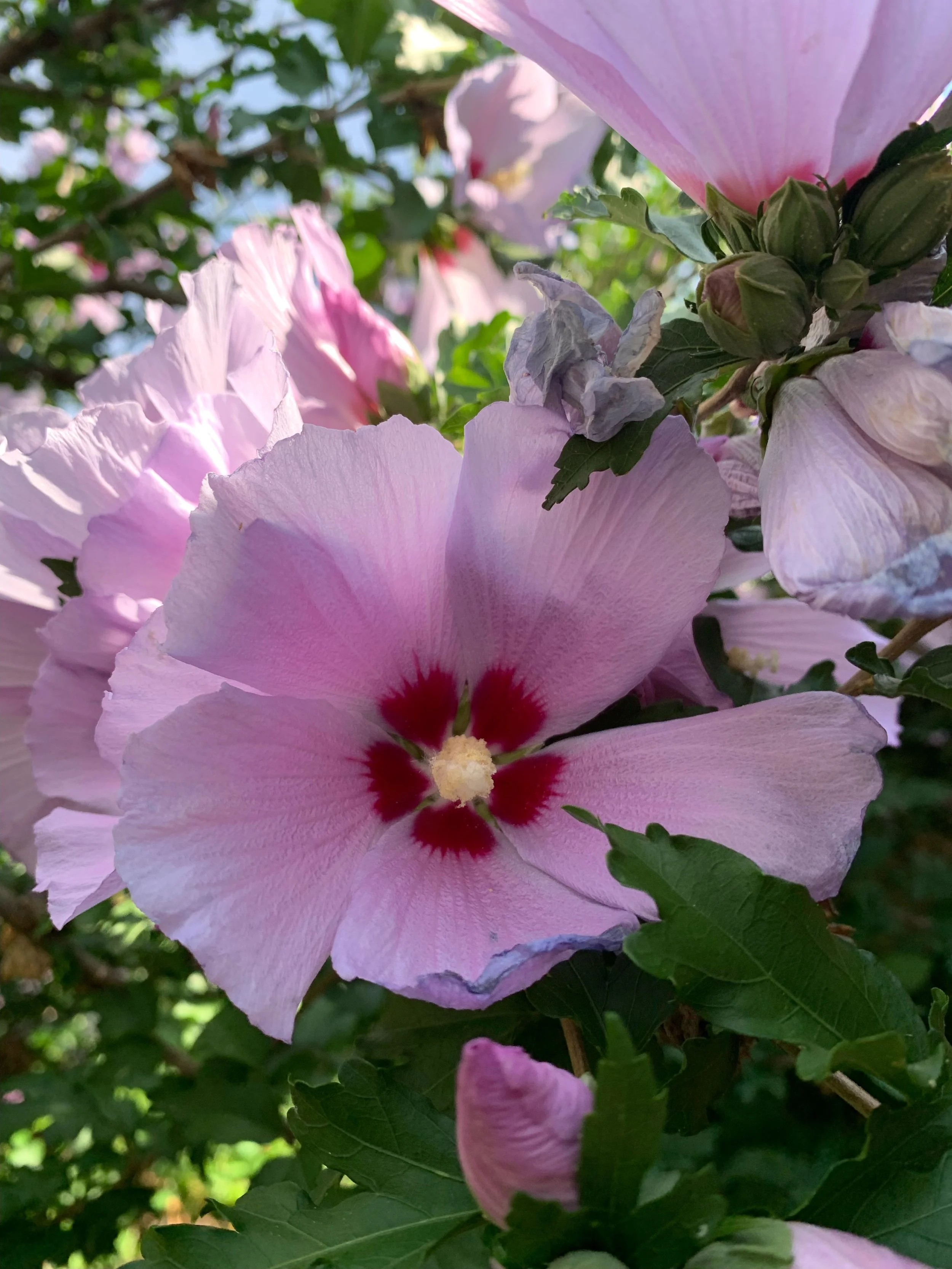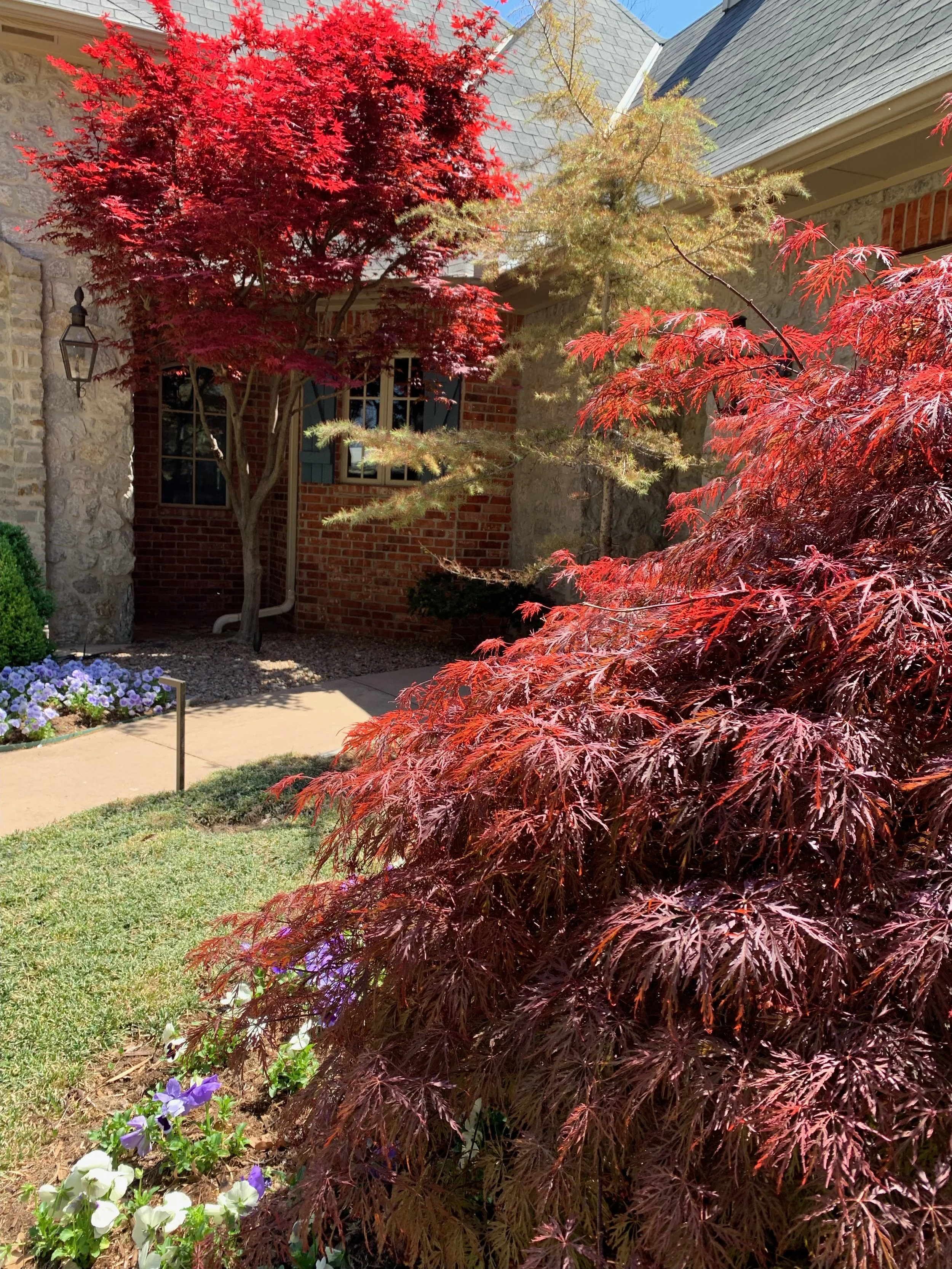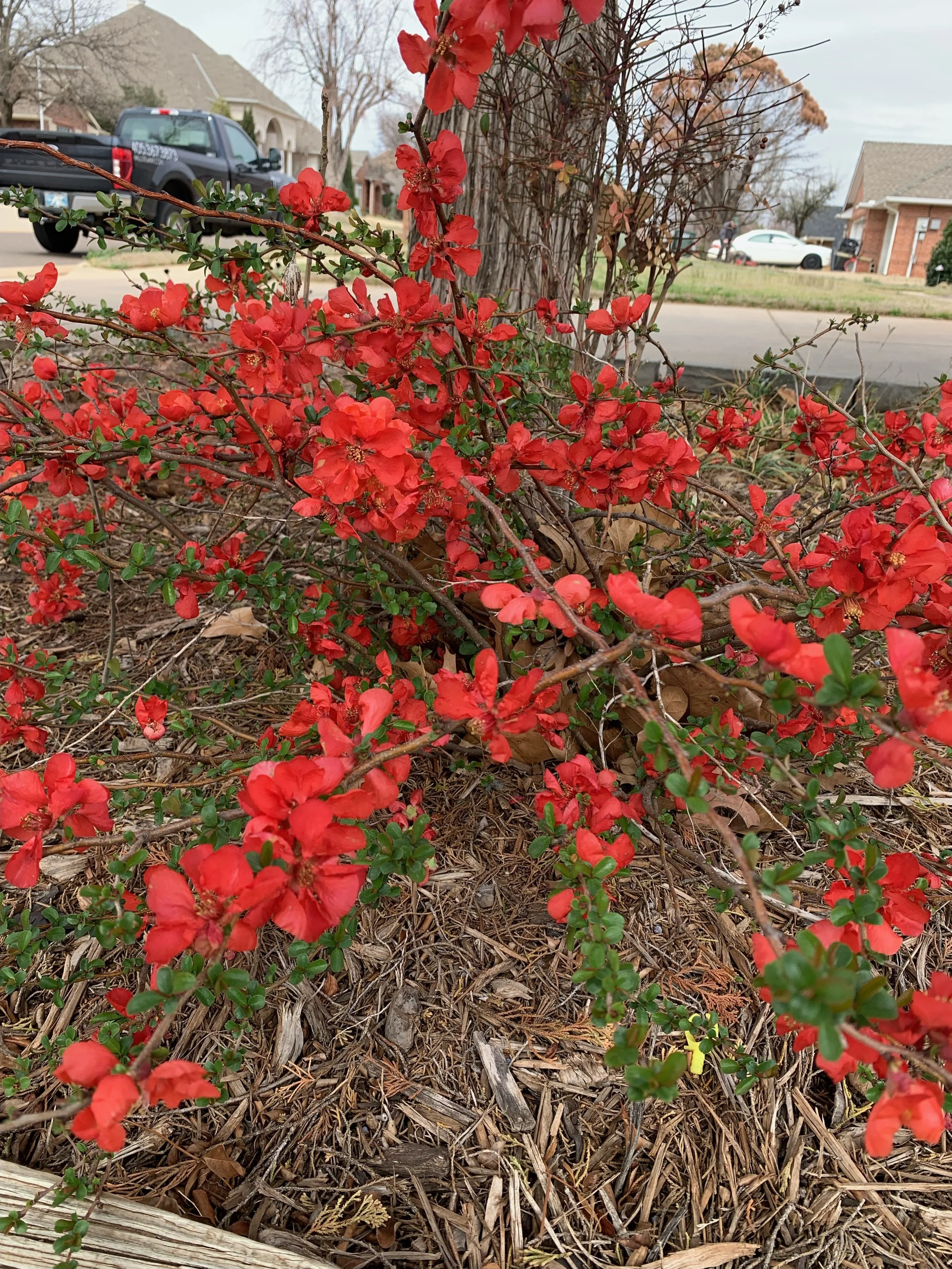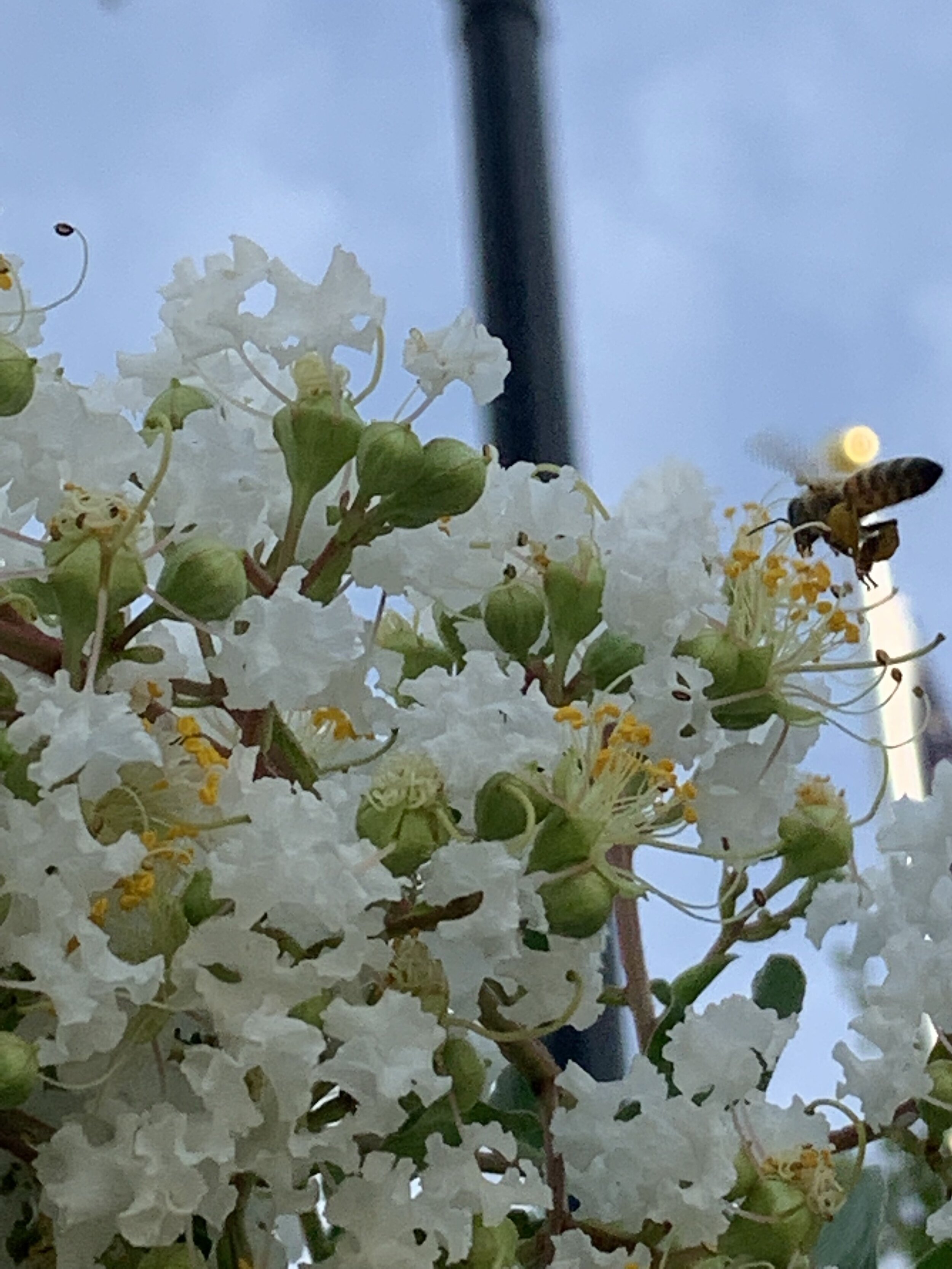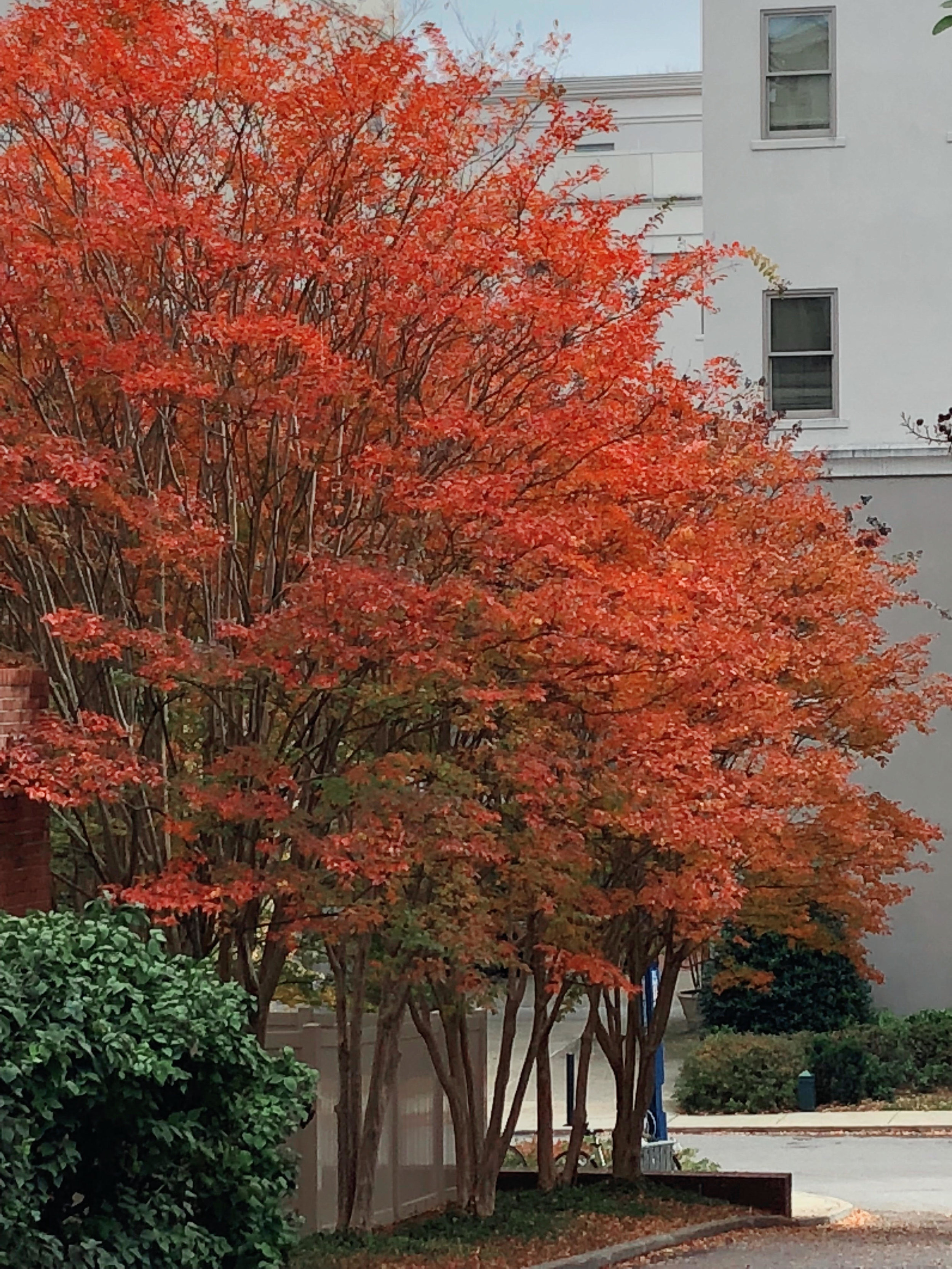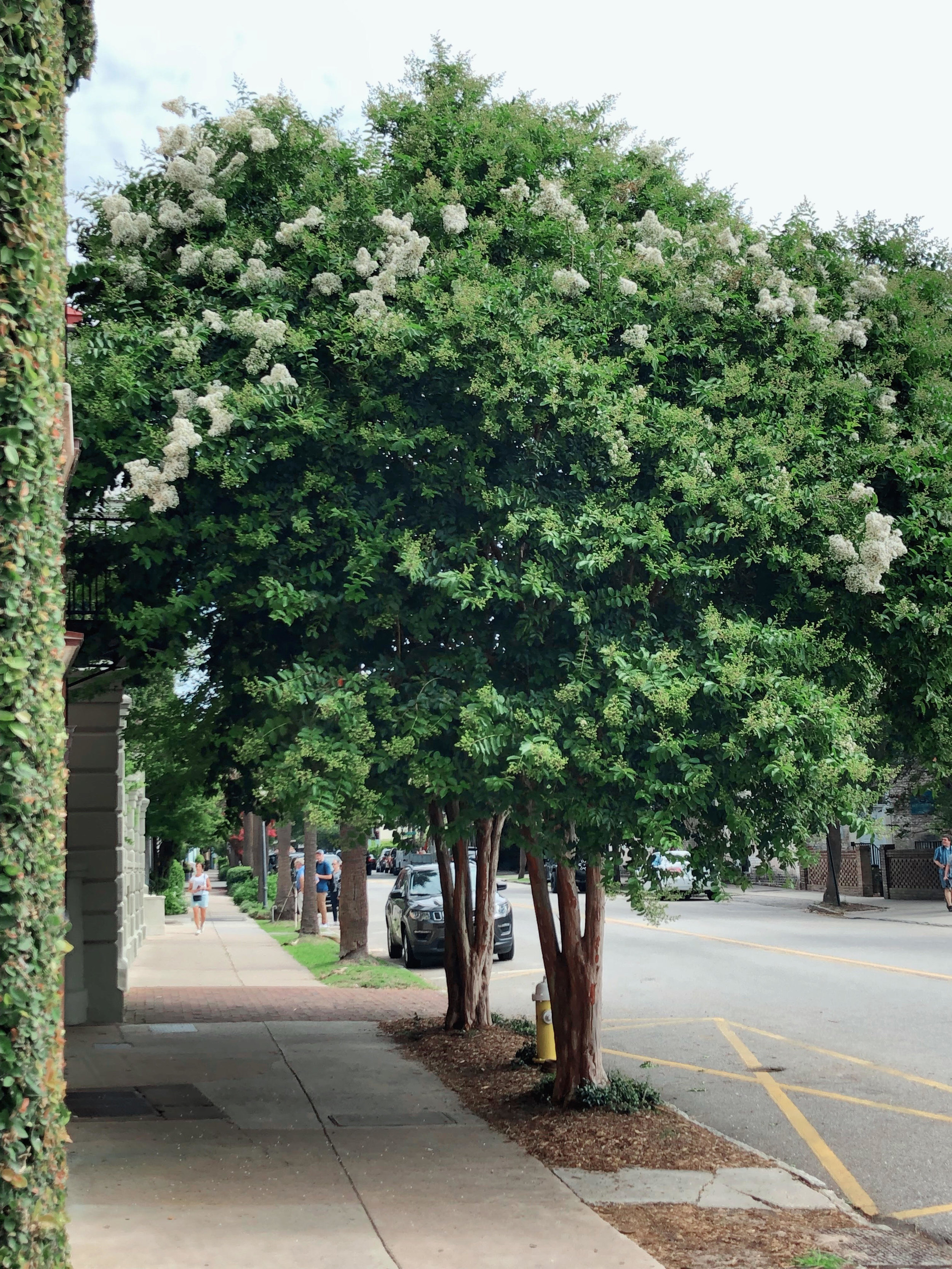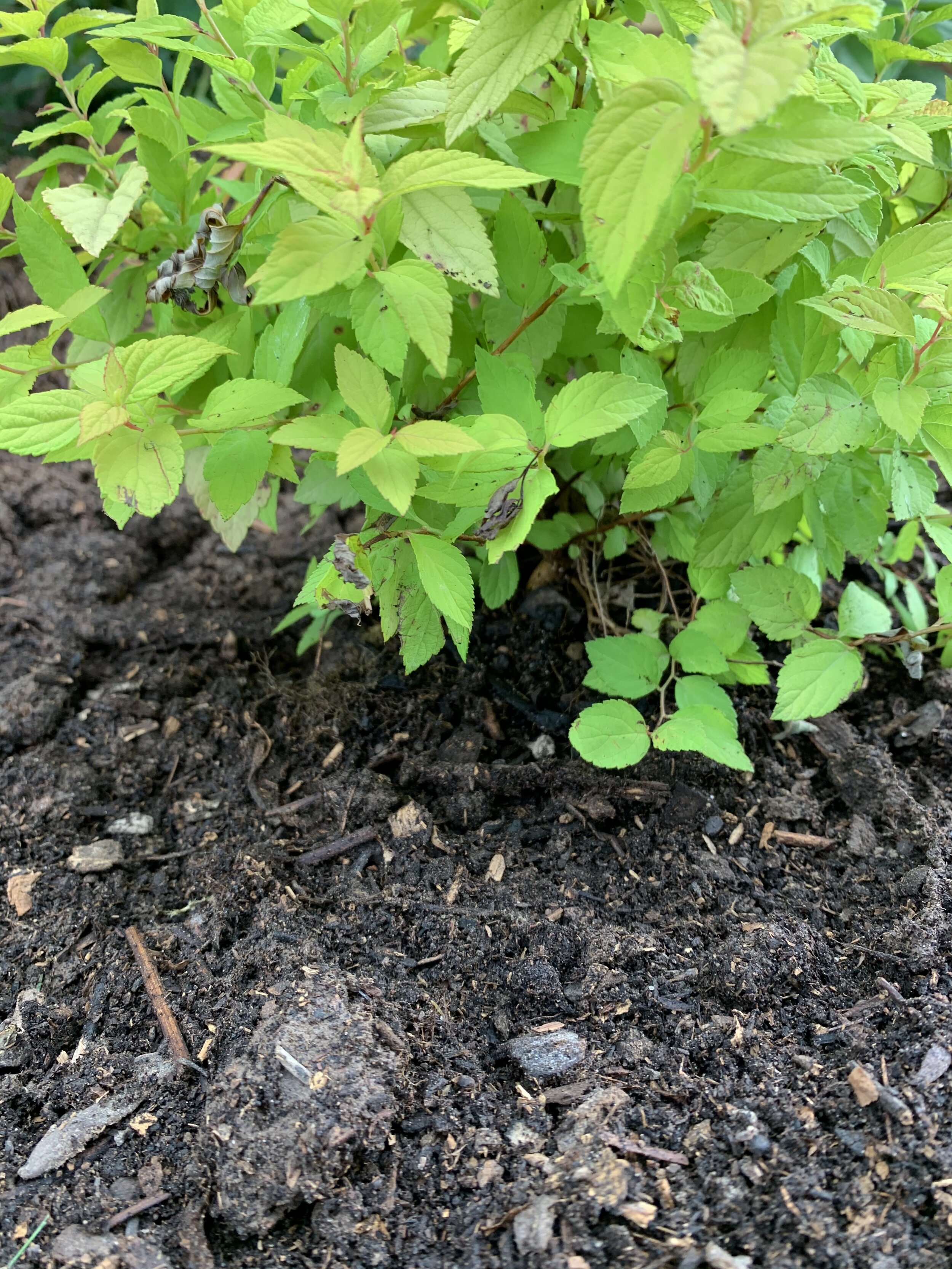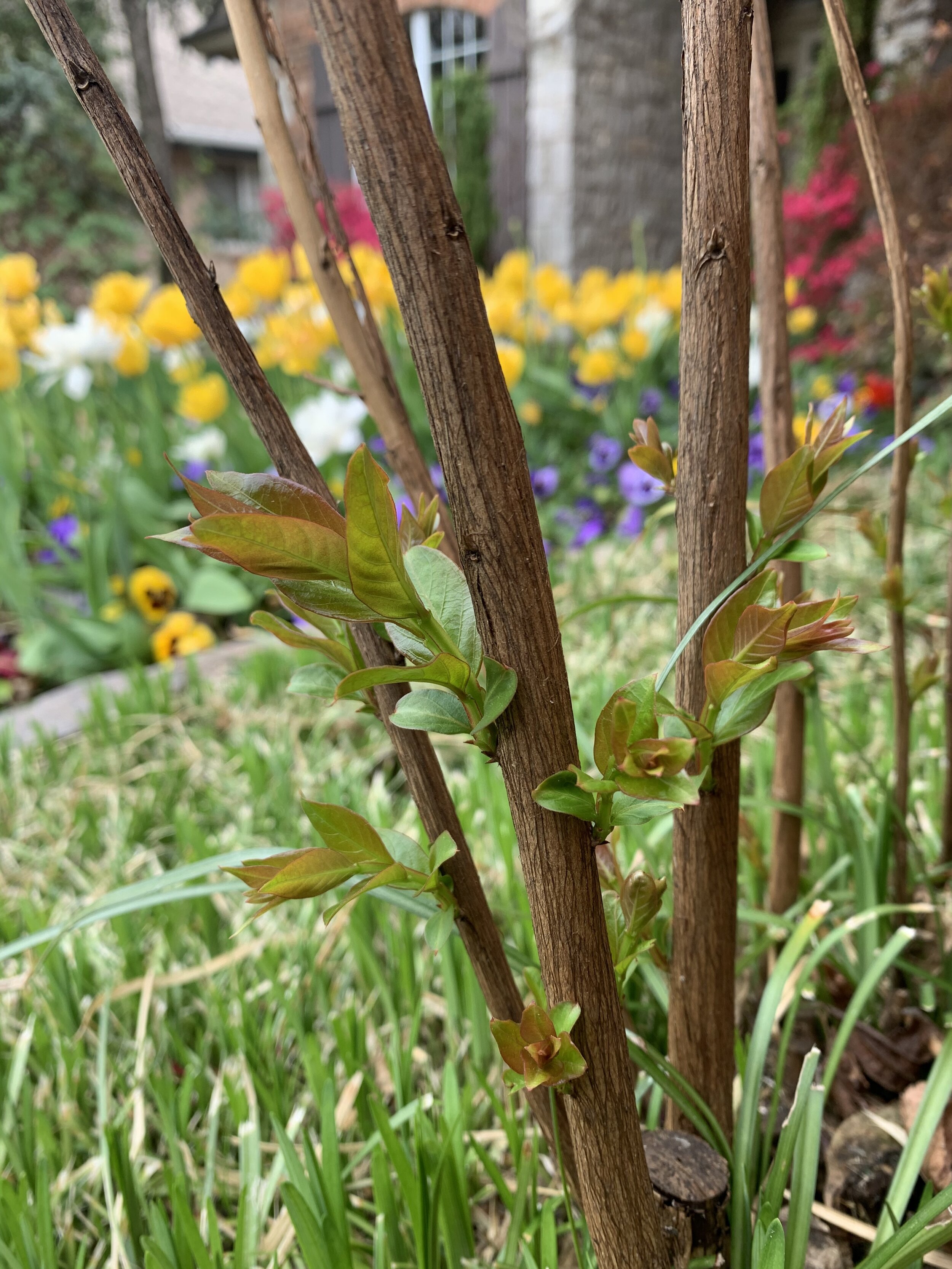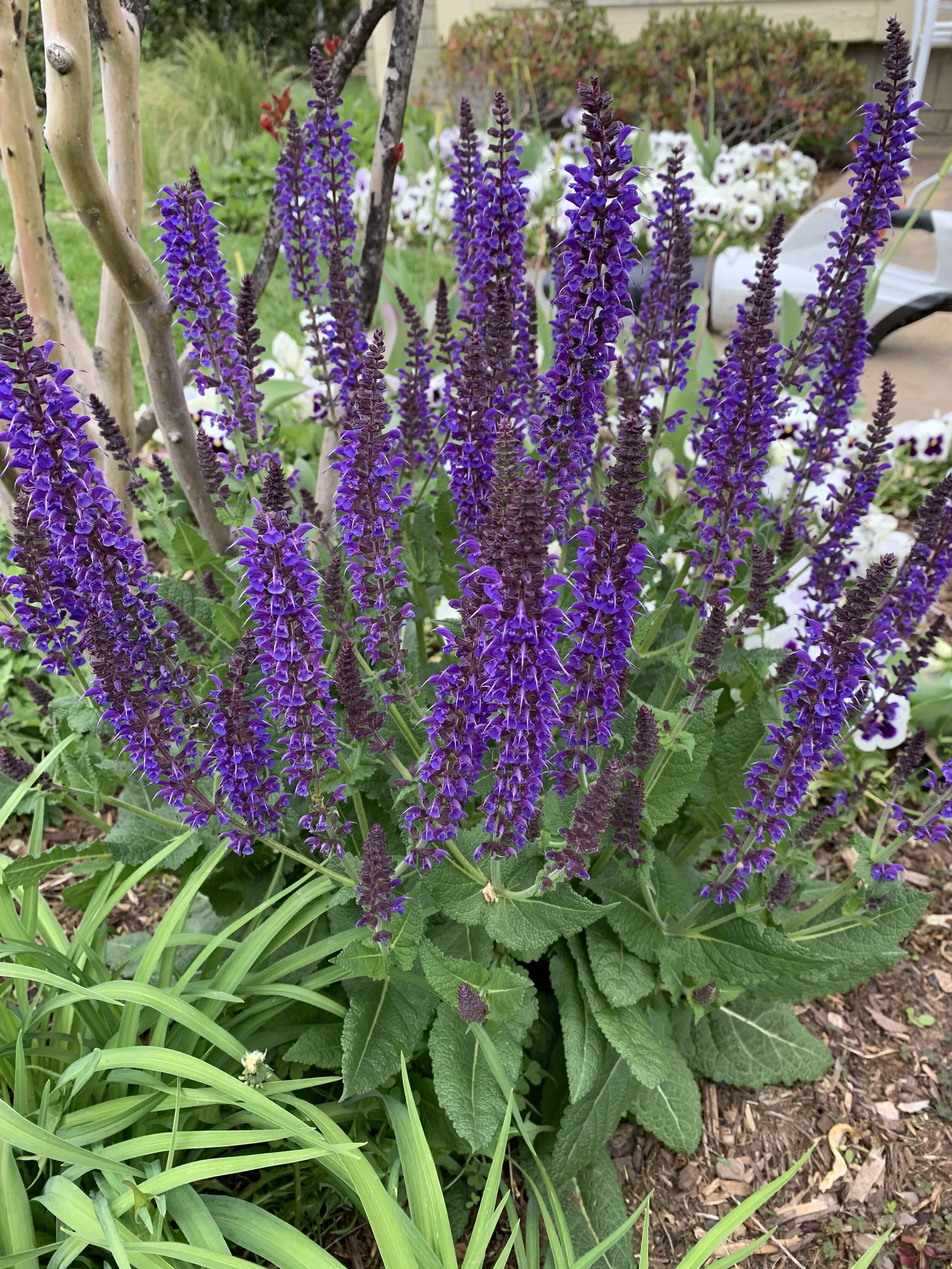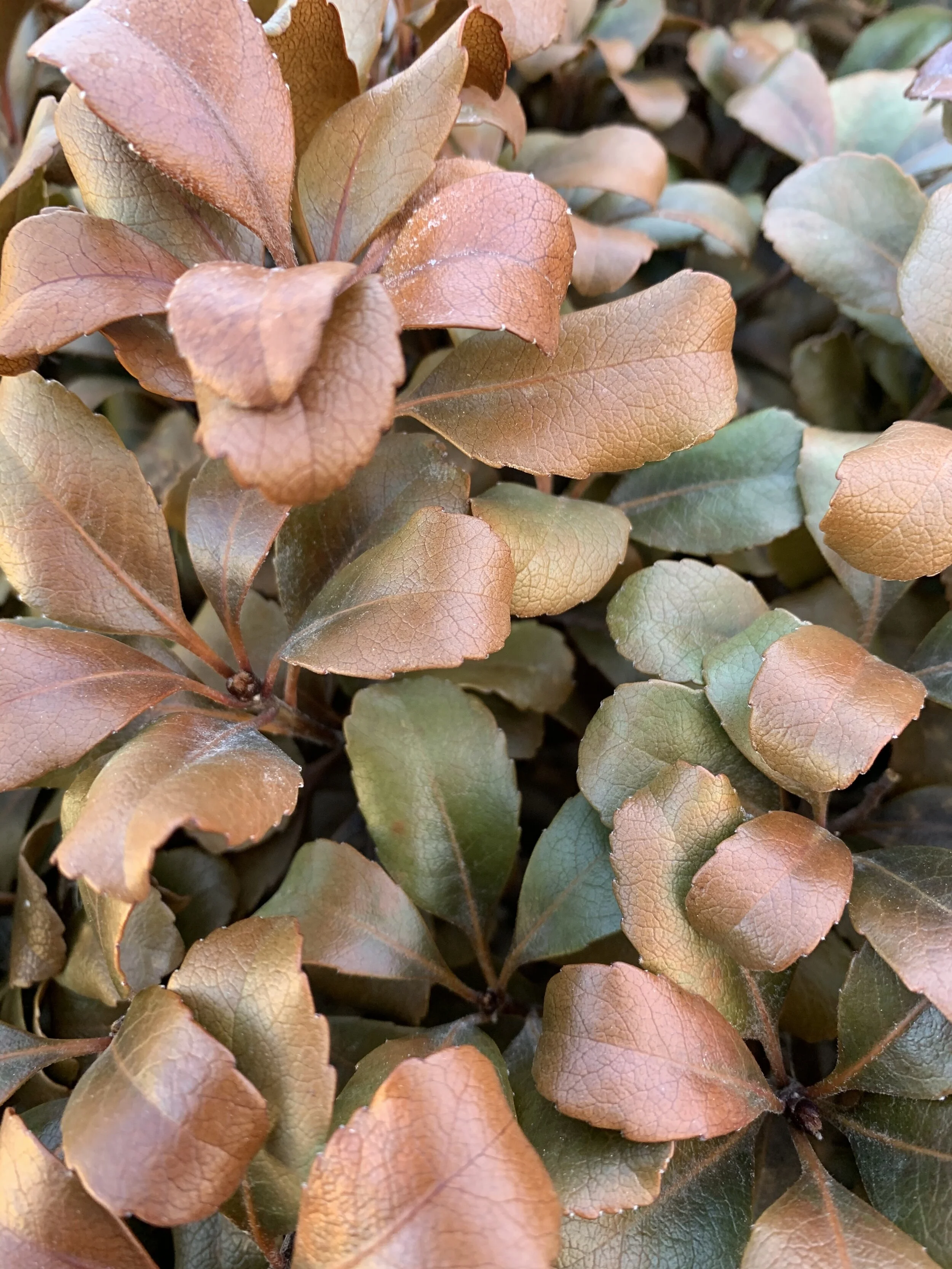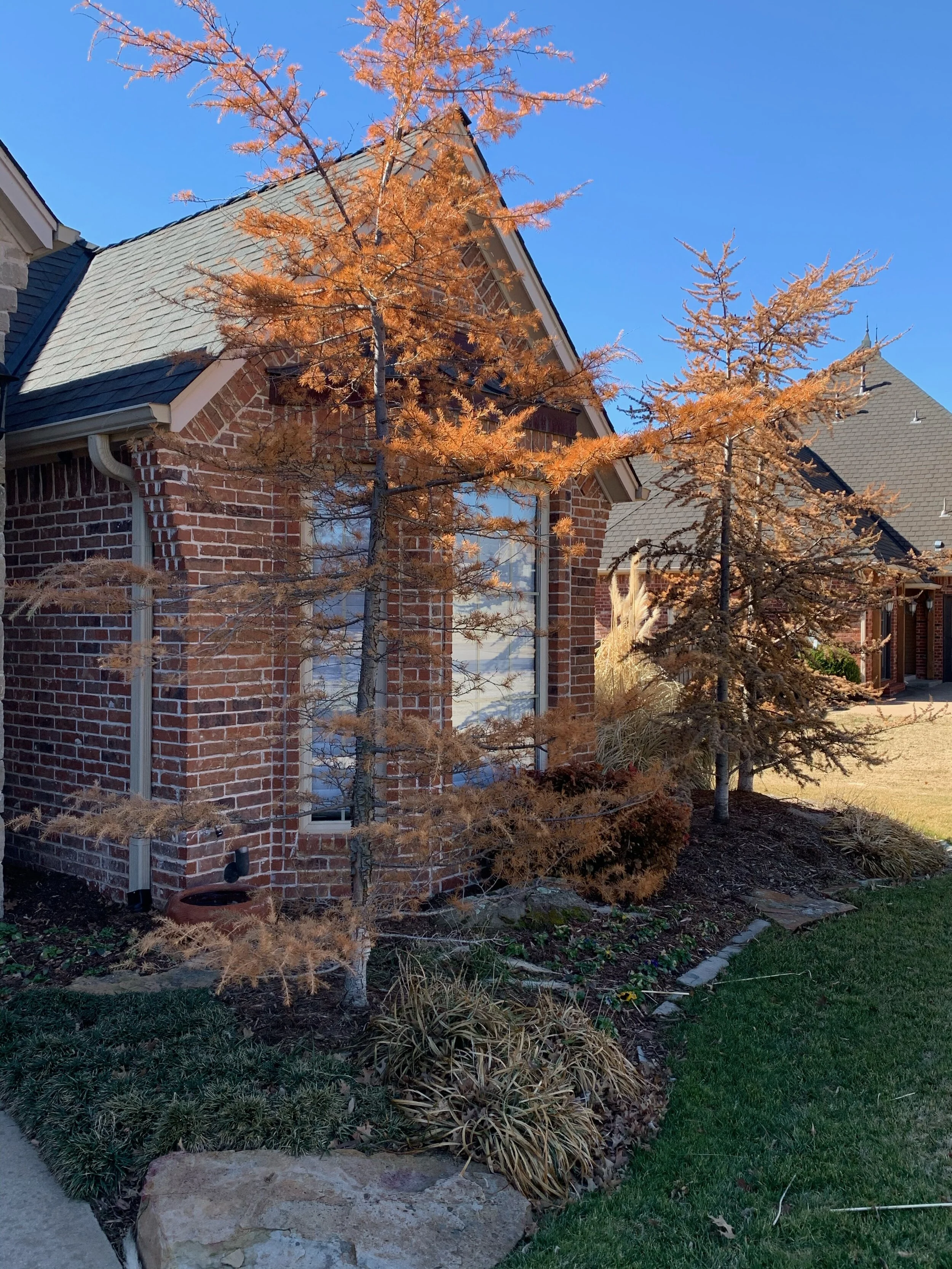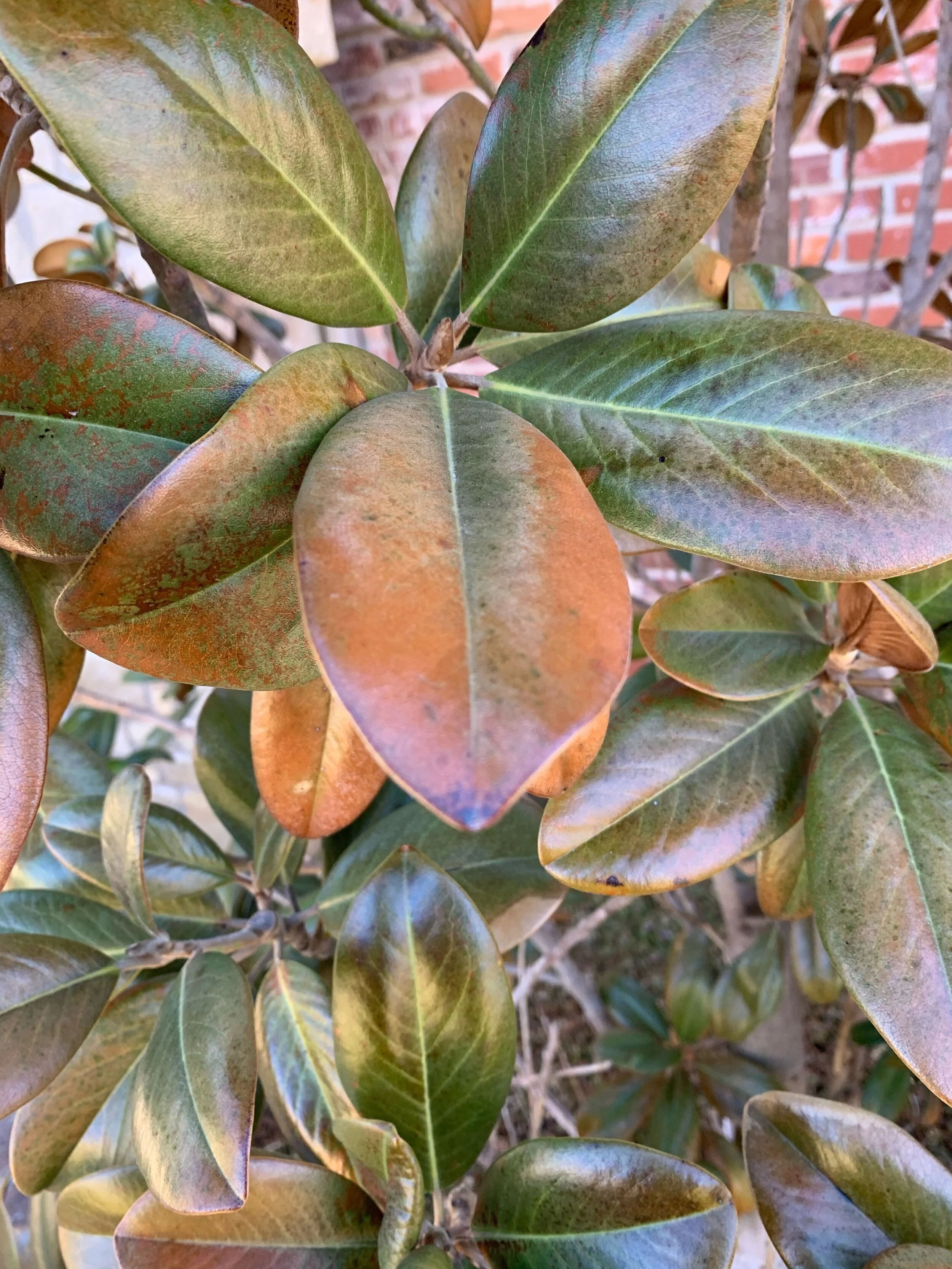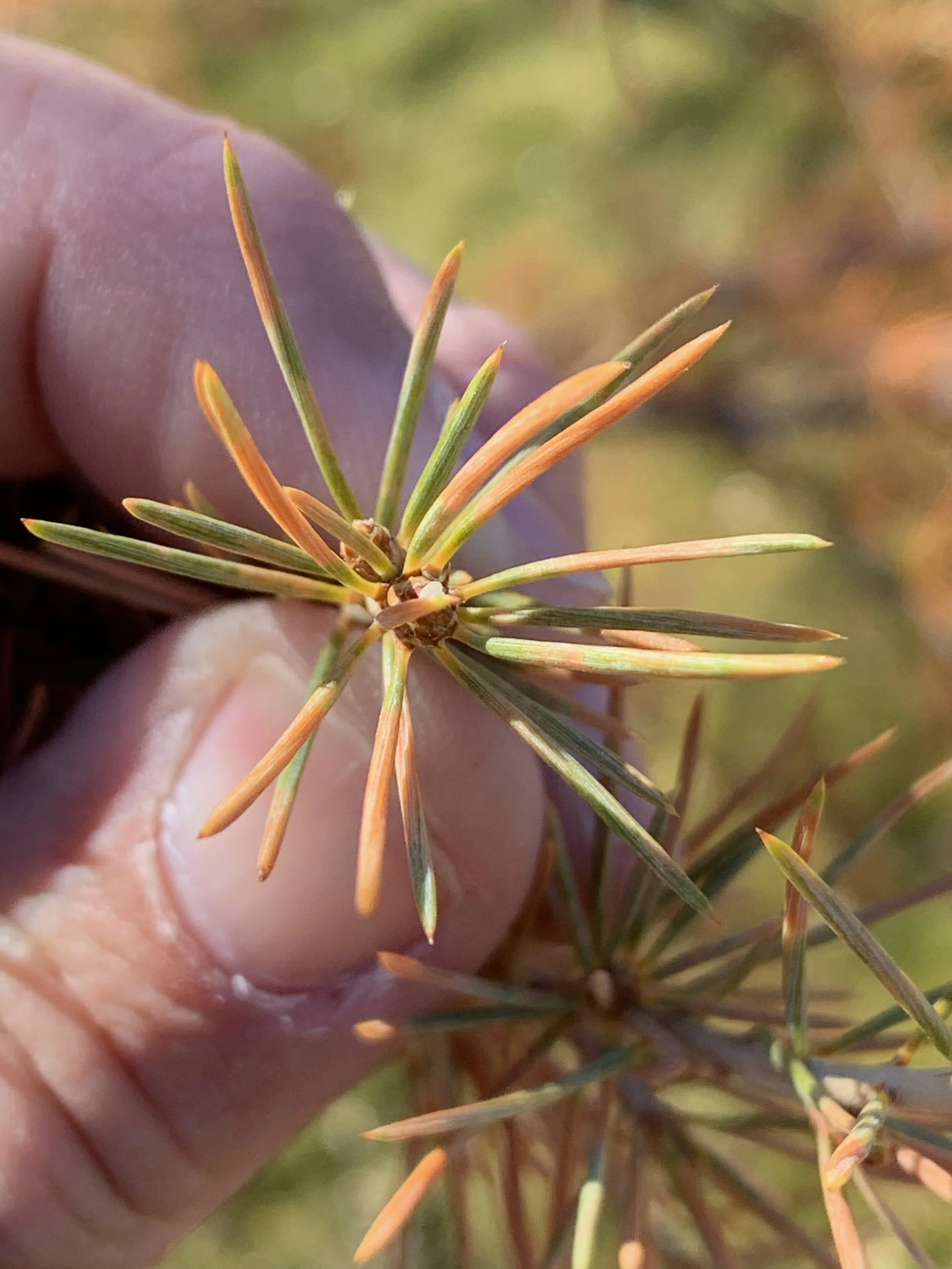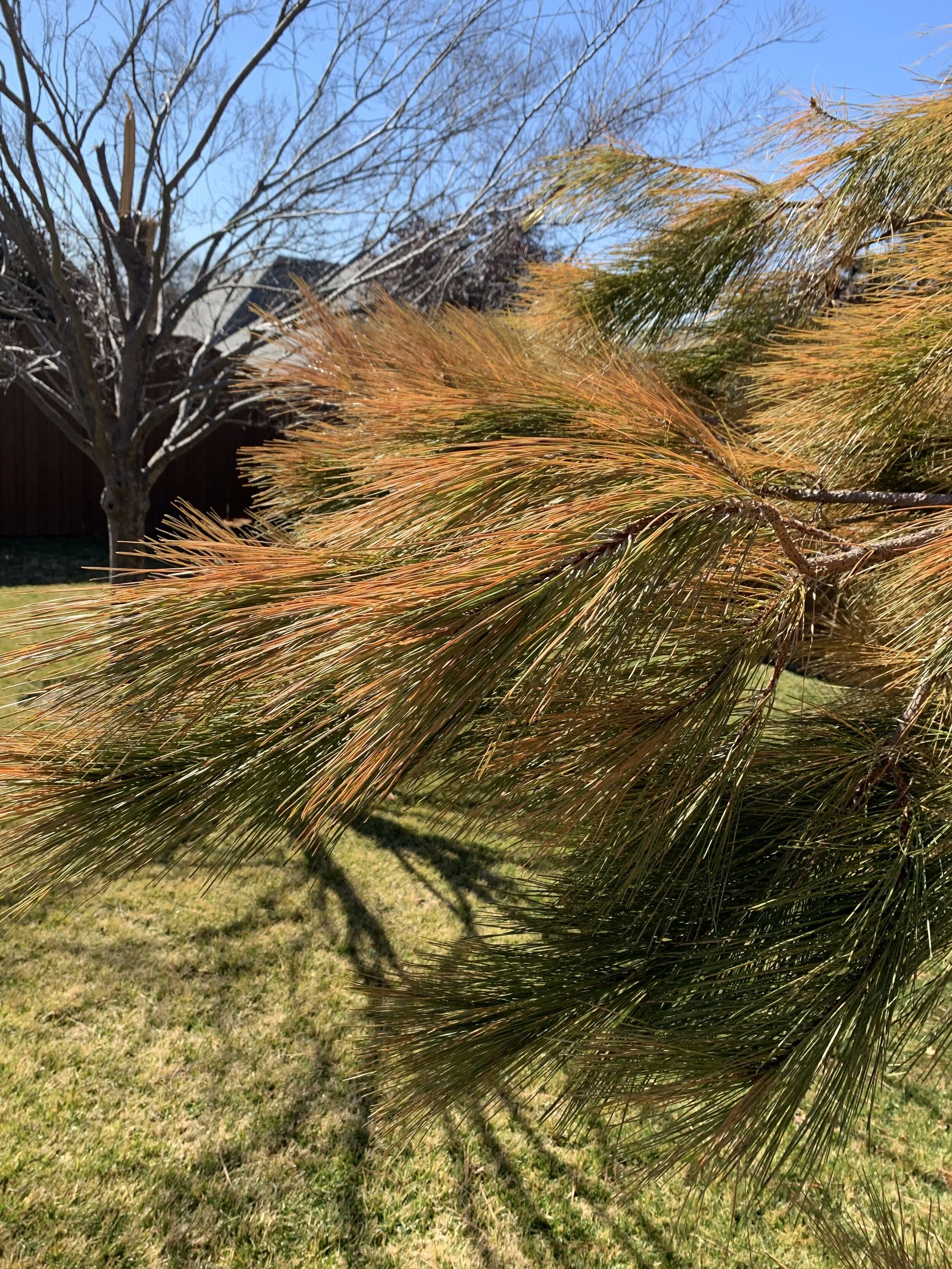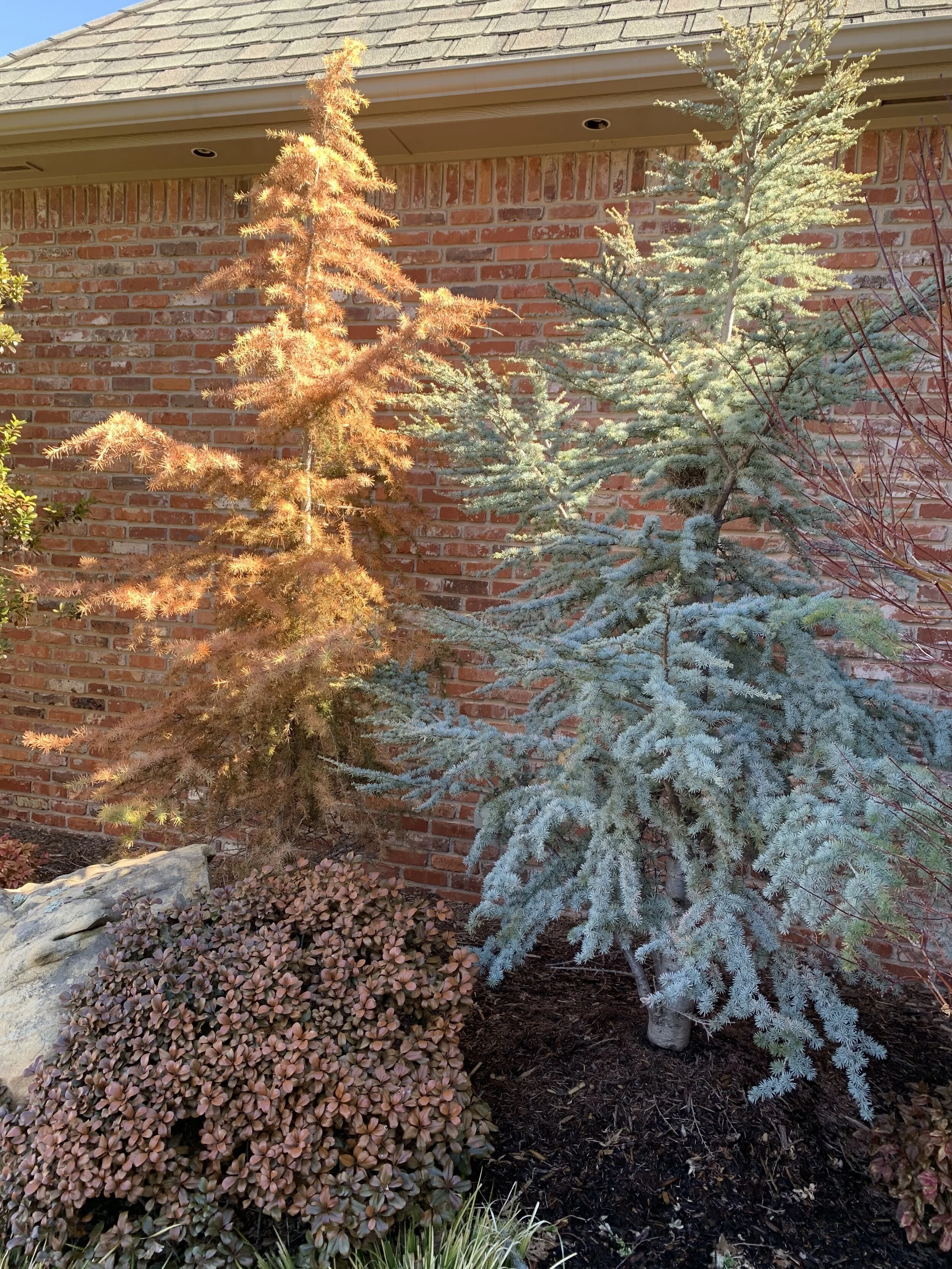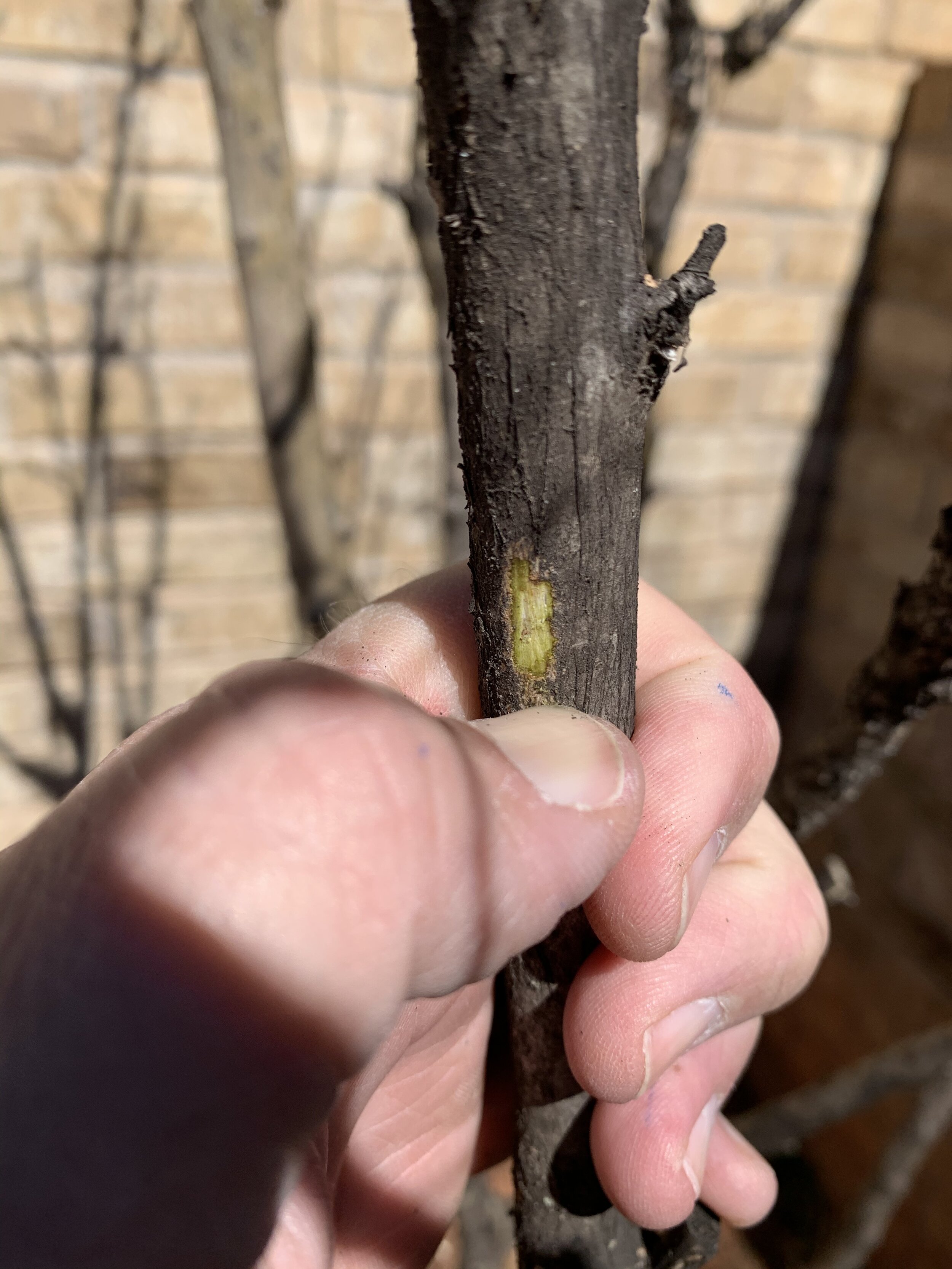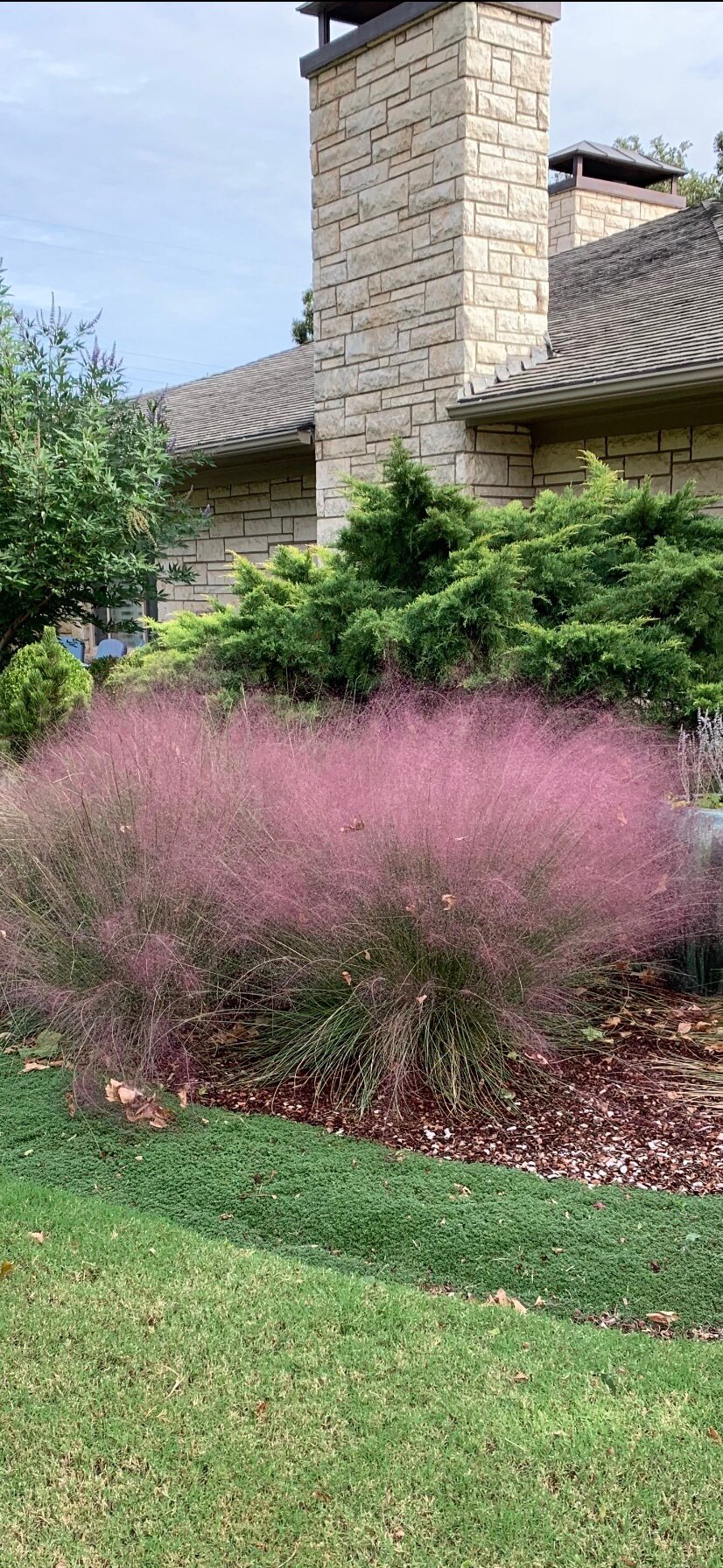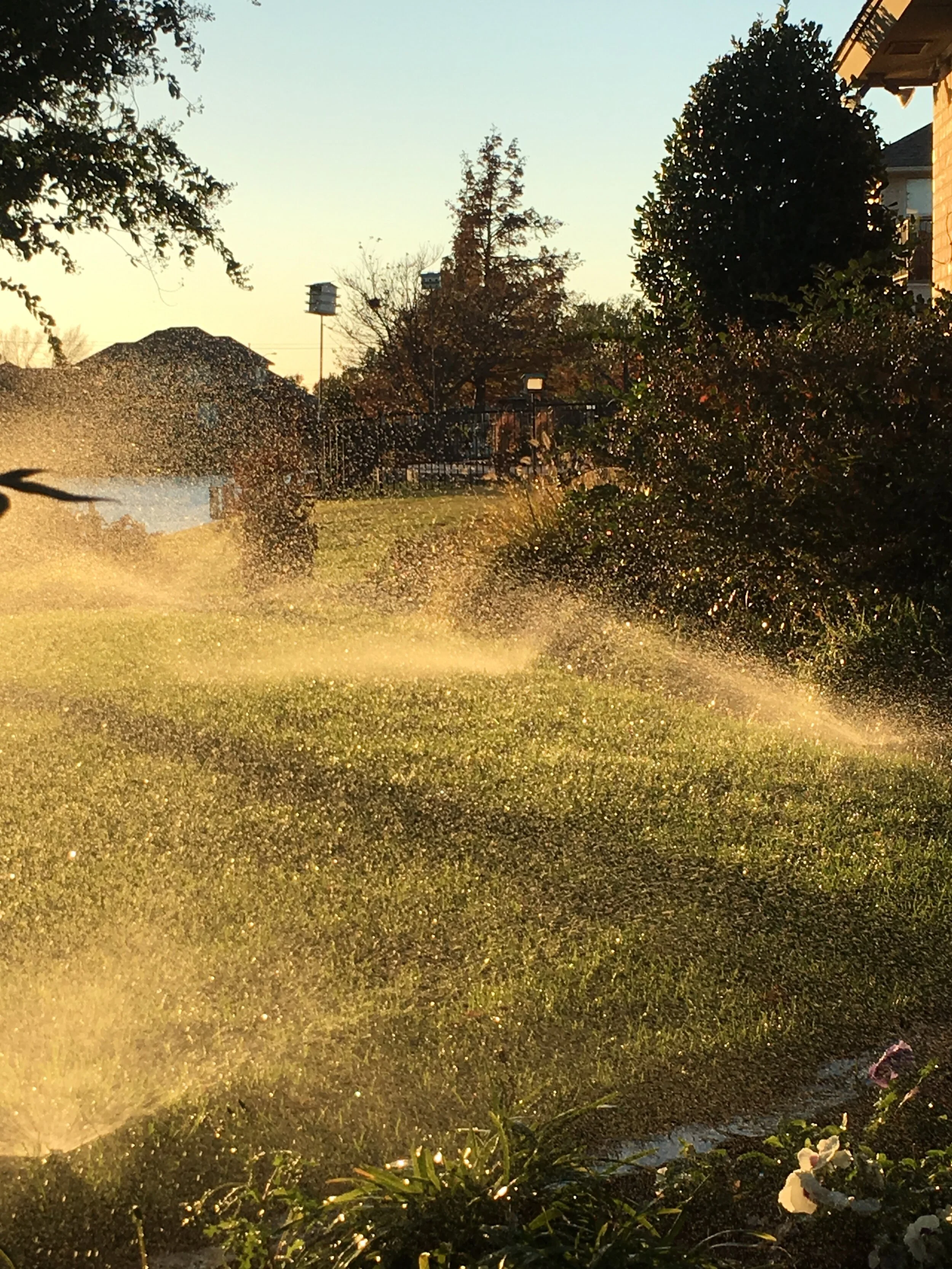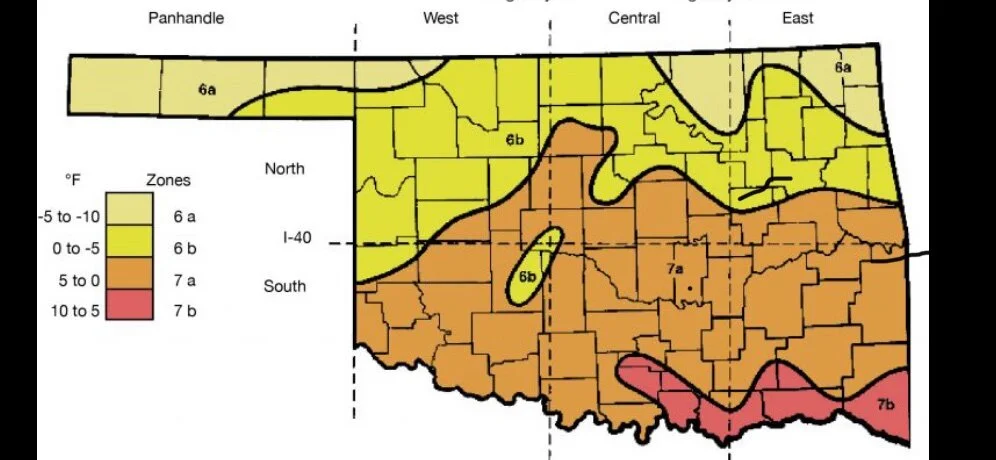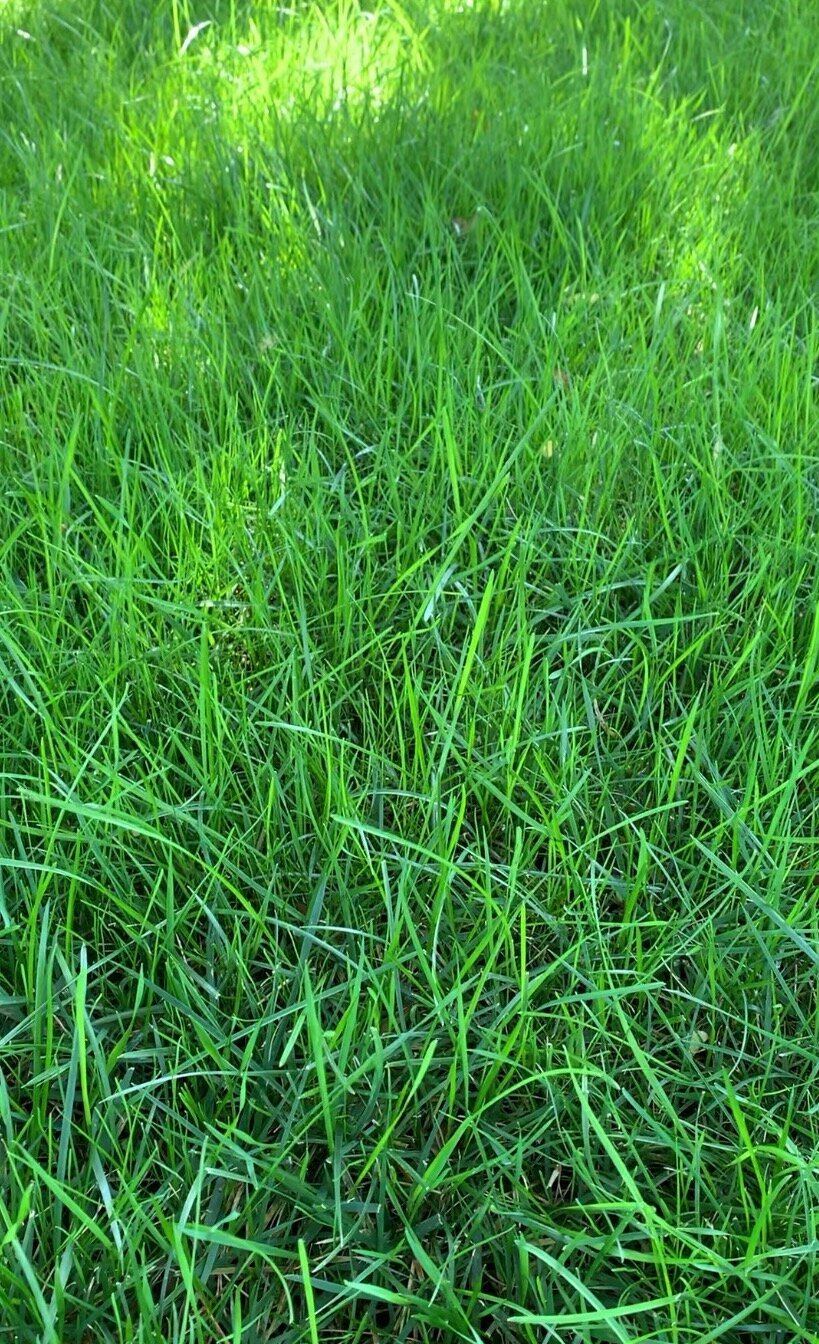
Snow & Your Landscape
Are you a snow lover?
Or, are you one that hopes we make it through the winter snow-free?
If your lawn and landscape have a vote, they are voting for a snow!
Much of our landscape, particularly fescue lawns, groundcovers, and pansies, has a freeze-dried look this winter. It started on December 19th with a 13-degree night when we had gone 45 days without any rain. It continued with a couple of 11-degree and an 8-degree night in January. All without any moisture.
Thankfully, this week’s cold temperatures came with protection for your lawn and landscape.
That’s correct…protection.
Fresh snow is like a warm blanket on a cold night to your landscape!
Snowfall is nature’s way of insulating your valuable landscape from cold temperatures. A fresh snow cover of more than 2” is very beneficial to the landscape by trapping soil warmth below the snow.
Without snow, soil temperatures fluctuate more, dipping deeper during call spells. An example from this winter: When our low hit 8 degrees on January 21st, soil temperatures at 2” below the surface dipped to 37 degrees. But, this week with Friday morning’s low at 10 degrees in the Oklahoma City area and with a 6” snow cover, the 2” soil temperature was 44 degrees.
Your landscape is thankful for the blanket of snow that trapped the warm soil temperatures around its roots and kept the cold windy temperatures at bay.
Snowfall is moisture!
If we get a ½” rainfall, there is a lot of runoff. But, when the snow melts, it slowly soaks in. Nearly every single drop benefits the roots of your turf, flowers, shrubs, and trees.
On average, 10” snow equals a 1” rainfall. With a wet snow, your landscape may receive 1” of moisture for every 5” of snow. But, it takes a 15” snowfall to equal 1” when the snow is dry. My guess is this week’s 6-7” snowfall will gain us 1/3” to ½” of moisture as it melts. We will take every drop we can squeeze out of the white powder! It has been a very dry winter with only ½” of rain in the last 90 days.
The Old Farmer’s Almanac calls snow a “poor man’s fertilizer.”
Snow is full of nitrogen. As snow falls it collects nitrogen that is naturally in the air and distributes it evenly over your lawn and landscape.
Even though spring green-up is a few weeks away, don’t be surprised if our landscapes look a little more alive next week as the snow melts away. We may find the freeze-dried look to have faded just a bit thanks to a good blanket of snow.
So, which are you? Snow lover? Snow hater?
I know where your lawn and landscape stand on the snow issue!
Lorne Hall
Hall | Stewart Lawn + Landscape
(405)367-3873
January Lawn + Landscape Tips
Happy New Year!
After a couple of weeks of holidays, family, fun and leisure, we are ready to get back to talking lawn and landscapes.
And you are thinking…
“Woah! It’s too early to start thinking about lawn work. It’s January!”
Just because your lawn and landscape are taking a winter break, it doesn’t mean you are totally off the hook.
The list of things to do outdoors isn’t long, but there are a few critical things that will make a big difference in the success of your lawn and landscape this year.
Happy New Year!
I’m ready to push the restart button on a new year!
How about you?
I know your lawn and landscape are definitely ready for a new year. They found the weather patterns and environment of 2021 very challenging. Record cold last February left most landscapes scared and began a pattern of unusual weather that continued through the entire year. Bermuda lawns found the cooler than normal first half of the growing season difficult while fescue lawns looked better than ever. Then came the second half of the summer and the march of the armyworms. Overnight nearly perfect fescue lawns were devastated. The warmth of September resulted in Bermuda lawns looking their best at the time of the year when they are normally slowing down. To finish the year….the Oklahoma City area has gone over 60 days without any moisture.
Here’s to hoping for a return to normal, as normal as possible, weather patterns in 2022!
The list of things to do outdoors in January isn’t long, but there are a few critical things that will make a big difference in the success of your lawn and landscape in 2022.
Lawn Pre-Emergent – Your best chance to have a weed free lawn this year is to apply a pre-emergent between now and the end of February. The purpose of a pre-emergent is to prevent weed seeds from germinating. The next weeds to germinate in your lawn will be the ones that haunt you all summer. Spring and summer weeds will start growing as soon as soil temperatures start to warm in early March.
Nonselective herbicides can be used while the turf is completely dormant to control any weeds that are actively growing.
If you are a subscriber to a Hall | Stewart’s Lawn Care Program,
we will be visiting your lawn very soon to apply the critical
first application of the year to prevent spring and summer weeds.
Lawn Post-Emergent – If you have a warm-season lawn (Bermuda and Zoyia), now that we have received freezing temperatures it is one of the best times to gain control of troublesome grassy and broadleaf weeds. Nonselective weed control (herbicides that control anything that is actively growing) can be used while the turf is completely dormant. Now is also a good time to control broadleaf weeds growing in fescue, but do not use a nonselective herbicide on fescue. Always read the labels, know your turf type, and only apply herbicides labeled for your turf type.
Moisture – Pay close attention to plant and lawn moisture over the winter. Fortunately, we received a critical 1/3” to 3/4” rainfall in the metro area as the cold temperatures arrived this weekend. Through the winter keep an eye on rainfall and soil moisture. If we go over 7 days without any moisture, rain, or snow, be prepared to water. Evergreen plants, both needle and broadleaf, are most susceptible to winter damage when we have a dry winter. Don’t forget to inspect containers, raised plantings, and plantings under the eaves of your house are the first to become too dry.
Tree Trim – During winter dormancy, tree trimming is a great practice. Most trees are in need of restorative tree pruning this winter to correct damage from last year’s ice storm. With the leaves off the trees, it is much easier to see damage and branching problems. Remove low hanging branches, crossing branches, and branches growing into the interior of the tree. Also, remove branches that may compete with the central leader.
For more information on tree trimming, visit our post from December 19, Winter Tree Pruning – Improve Your Landscape Investment.
Dormant Oil – During January and February one of the best things you can do to prepare your landscape plants for the season is to treat them with a dormant oil. Dormant oils smoother overwintering insects (aphids, scale, mites, etc.) that often are some of the most difficult to control.
Crape myrtle bark scale activity has increased over the past few seasons. Scale is a white insect with a hard shell that appears on the bark. Dormant oils applied in January-February is the first step for controlling the pest. If your landscape includes crape myrtles, you need a dormant oil application every year.
When leaves accumulate in the corners of your lawn during the winter they become a collecting place for insects and disease.
Leaf Clean-up – Keep your lawn and landscape clear of leaves through the winter. If you allow leaves to collect on your fescue lawn, in the corners and around objects, you will find the fescue thinner in the spring. Also, leaves are a collecting place for insects and disease over the winter.
Soil Test – If your lawn, shrubs, or trees struggled this year, now would be a great time to check the soil pH and nutrients. Fill a quart sized plastic bag with soil from at least 6 spots in the area of concern. Take soil from just below the surface. Remove roots from the soil. Use a separate bag for soil from your lawn and landscape areas. Take the soil sample to your local Oklahoma State University County Extension Office. They will test the soil and send you a report for a nominal fee. The Oklahoma County office is located at 2500 NE 63rd St., Oklahoma City, OK 73111. Or, give us a call and we will gather a sample and take it to the lab for you.
Mower Maintenance – During the mowing off season take your lawn equipment in for annual winter service. Most lawn equipment stores offer specials during January on oil changes, lubrication, blade sharpening, and repairs. Annual preventive maintenance often keeps you from experiencing the frustration and hassle of repair issues during the growing season and extends your mower life.
If have any questions, or if you need help making 2022 your best lawn and landscape year, please give us a call.
One last thought – Avoid walking on fescue lawns when temperatures are below freezing or there is a frost as it will cause damage that will last into the spring.
Lorne Hall
Hall | Stewart Lawn + Landscape
(405)367-3873.
Merry Christmas!
"Who can add to Christmas? The perfect motive is that God so loved the world. The perfect gift is that He gave His only Son. The only requirement is to believe in Him. The reward of faith is that you shall have everlasting life." — Corrie Ten Boom
While we try to add to the joyous season of Christmas, we hope you & your family are reminded of the perfect gift we’ve received — the birth of Jesus Christ.
“For to us a child is born, to us a son is given; and the government shall be upon his shoulder, and his name shall be called Wonderful Counselor, Mighty God, Everlasting Father, Prince of Peace.” – Isaiah 9:6
We hope you & your family have a great Christmas celebrating the birth of our Prince of Peace!
Merry Christmas from your friends at Hall | Stewart Lawn + Landscape!
BRADY
Lawn Care Technician
Edmond Area
BAILEY
Lawn Care Technician
West Metro Area
LEONEL
Special Projects Team Member
TOM
Co-founder & Partner
JOHN
Lawn Care Technician
Northwest Oklahoma City Area
RIGOBERTO
Special Projects Crew Leader
PAULA
Office Administrator
LORNE
Co-founder & Partner
Your Lawn & Landscape Still Needs Moisture… Even During The Off Season!
The tendency this time of year is to turn the irrigation off and roll up the hoses, but if your lawn and landscape could talk, they would be encouraging you to not cut off the water just yet and be prepared to give them a drink from time to time through the winter.
Sure, your lawn, trees, shrubs, and flowers don’t need as much water from through the winter, but they do need some.
Your landscape needs at least ½” of moisture every two weeks through the winter.
It has been 3 weeks since most of the Oklahoma City metro has received a ¼” rainfall.
Soil moisture is dwindling and there isn’t a strong chance of a good rainfall for several days.
Throughout the winter take advantage of nice, warm, light wind days and give your lawn and landscape a good soaking.
Pansies need moisture through the winter to survive and make a strong spring show.
Winter watering is particularly critical for evergreen shrubs and trees. Windy days zap the moisture stored in their leaves making them sensitive to winter injury when we receive a harsh cold snap when they are dry.
Evergreens and fescue require more water attention during the winter.
Japanese maples have shallow roots that are susceptible to drying out during the winter.
Fescue and rye lawns will retain more color over the winter if the soil is moist went temperatures below 30 degrees.
Newly sodded lawns will experience winter damage if they are not kept consistently moist at this time of year.
Finally, all newer landscapes, those installed in the last two years require a little more watering attention over the winter.
If your irrigation system has an insulated cover and heat tape protecting the backflow, or if your system is an older system with an inground backflow, or if your backflow is inside your house, winterizing your system is not required during most Oklahoma winters. Even last year during the extreme cold, we saw little freeze damage to systems with protected backflows.
Pansies are a great winter annual as long as they aren’t bone dry when a cold front arrives.
Picture of the week: Discovered a Crape Myrtle in a customer’s landscape putting on new blooms in November while it’s leaves are changing colors. The last 12 months has been very confusing for our landscapes.
Shallow rooted plants, such as: azalea and Japanese maple are also prone to winter injury when they do not receive regular moisture during dormancy.
Plants with shallow root systems, such as Japanese Maples and Azaleas, respond best if they receive at least 1/2” of moisture every 7-10 days throughout the winter.
If you have perennials or winter annuals such as pansies or kale, winter moisture is critical to their performance going into the spring.
Evergreens need moisture during to winter to keep their foliage healthy.
Set your azaleas up for a successful spring by making sure they have enough moisture this winter.
Fescue lawns will retain more color in the winter and rebound quicker in the spring if they are not allowed to become bone dry during the winter.
A snow cover can be very helpful when temps go below freezing because warmer soil temperatures are trapped in.
Current Watering Recommendation - Continue to water one to two times per week until we receive an extended cold spell.
Watering Through the Winter - Monitor the weather. Pay attention to the amount of rainfall we are receiving. Anytime we go a week or two without a good rain or snow cover, pick a warm day and run your system through a cycle. If you don’t have an irrigation system, pick an enjoyable day, stretch out the hoses and make sure all plant material receives a good soaking.
Consider Upgrading Your System – If your system doesn’t have a rain/freeze sensor, add one. A rain/freeze sensor allows you the ability to set the controller to run once per week and leave it. If the temperature is below freezing, or if there has been a recent rain, the sensor will interrupt the scheduled cycle. The benefit is you won’t have to remember to turn your system off when it is too cold, or it has rained.
Another Upgrade to Consider – Install a Rainbird WiFi Link controller and let us control your system for you. We will monitor the weather and adjust the system through the winter based on the amount of moisture the area has received.
Remember – Most winter plant injury occurs when we receive a harsh cold spell while plant root systems are dry.
Give us a call, or respond to this email, if we can help you with irrigation solutions.
Lorne Hall
Hall | Stewart Lawn + Landscape
(405)367-3873
Fall 2021’s Top 5 Most Colorful Landscape Plants
Four weeks ago, before trees and shrubs started their fall color change, we wrote about all the reasons we love fall.
This week is why we love fall!
The explosion of color in the Oklahoma City area this week was amazing.
Peak color is typically the last week of October continuing into the first week of November. Just like most of the landscape events of the year, peak color trended 10-14 days behind normal. I was to the point of giving up on a spectacular color show this year, but this week exceeded my expectations. Every day, every neighborhood, every corner I turned, brought another burst of fall color.
I hope you found some outdoor time this week.
I hope all the color has inspired you and your landscape dreams.
These are 5 of the most spectacular landscape plants I experienced this week:
1. Burning Bush
Also known as Winged Euonymus, it has possibly put on its best show this fall. Because it is often over pruned, it doesn’t reach its full potential. When it is left to grow to its natural shape and height, and it has received sufficient moisture through the summer, the fall color is intense and more consistent than any other plant. It is a great planted as a single specimen, in a grouping, or as a natural hedge. For smaller landscapes, plant the ‘Compactus’ variety.
Burning Bush is a great compliment to the grayish hues of the juniper.
Burning Bush looks its best when is left to grow naturally and makes a great hedge.
Burning Bush looks great on groupings or as a single specimen.
The dynamic reds of Burning Bush have be excellent this fall.
2. Chinese Pistache
No other tree produces such a vibrant, broad range of fall color. It is a dependable, pest free tree that is tolerant of a wide range of soils, drought, and heat. Considered a medium sized tree, reaching 30-35’ with an oval top.
The vibrant wide range of fall color from a Chinese Pistache is hard to beat.
Chinese Pistache is a dependable medium sized tree that is tolerate of a wide range of planting locations.
3. Maples
One of the first trees to show color in the fall. There are many varieties, these three have put on a show this fall:
Autumn Blaze – A fast grower that can reach 50-60’ with an upright, uniform branching habit. It is one of the first to turn with an excellent red color.
Autumn Blaze Maple is a fast growing tree that is one of the first to turn red each fall.
October Glory – A moderate grower that reaches 40-50’ with a rounded top. Color starts to turn a little later than the Autumn Blaze with an orange-red to red color. Of the two, October Glory is my favorite.
October Glory Maple adds orange-red to red color to the landscape just a little latter than the Autumn Blaze Maple.
Shantung – A smaller maple that is perfect for small to medium landscapes. It has a spreading, rounded canopy that only reaches 20-25’. Leaves have five points and turn a golden yellow to orange color.
Shantung Maple is a smaller tree with brilliant golden yellow to orange fall color.
4. Sweetgum
If it weren’t for the spiny, 1-1.5” seed balls that litter a lawn, this tree would be on every landscape enthusiast’s wish list. When you see a sweetgum in the fall, it immediately gets your attention because of the multicolored leaves. The star-shaped leaves turn shades of yellow, orange, red, and purple often persisting late into the fall. The tree performs well in both wet and dry soils and reaches 50-60’. The Slender Silhouette variety is a columnar shaped Sweetgum that reaches 40-50’ but is only 4’ wide. It is great for tight spaces, small gardens, and anyplace you want to create a striking vertical accent. Just like the full sized tree, it is common for there to be several rich colors on the same tree.
Sweetgum may be the most perfect tree with star-shaped dark green leaves that turn wonderful shades of yellow, orange, red, and purple lasting late into the fall. (Perfect except for those annoying spiky seed balls that litter your lawn.)
Slender Sihouette Sweetgum is columnar shaped and great for tight spaces and crest a wonderful vertical accent.
5. Oakleaf Hydrangea
One of the most underutilized, showy plants available. Known for magnificent white flowers in the early summer, but it is often overlooked for the rich burgundy color of the large, lobed leaves in the fall. It prefers moist, rich, well-drained soil and best planted in shade to partial shade.
Oakleaf Hydrangea are know for their white flowers in early summer, but with their large burgundy colored leaves also put on a great fall show.
One of the best surprises of the strange weather patterns of this year is the performance of hydrangea. Not too often do you get to enjoy the bright pinks of an Endless Summer Hydrangea nest to the yellow of a Slender Silhouette Sweetgum in November.
5.1 Pink Muhly Grass
An upright, slightly arching ornamental grass that produces a soft, airy pink to purple bloom in late September to early November. Great planted as a single specimen or as a mass planting.
We don’t think of an ornamental grass when thinking of fall color, but with the airy pink to purple fall plumes of Pink Muhly Grass, we should.
5.2 Autumn Sage
A showy perennial that adds prolific hot pink color to the fall landscape. Great for hot, sunny locations.
A great perennial for fall color is the Autumn Sage with its hot pink flowers.
5.3 Sumac
Used as a large shrub or a specimen small tree with great tolerance for dry, poor soils. Sumac has a bright red fall color. It is most commonly known for the bright red color it adds to the native landscape, but it deserves to be planted in more landscapes as an understory accent.
Sumac is a welcome sight along roadsides around the state in the fall with its splashes of red.
Sumac also adds interest to the fall landscape as an understory plant.
There are several varieties of Sumac each with their own dynamic fall color.
5.4 Crape Myrtle
Our longest blooming landscape plant is too often overlooked for the orange to red fall colors it brings to the landscape. Incorrectly, Crape Myrtle are pruned into large shrubs, and we rarely get to experience their splendor in the fall as a tree. When allowed to grow naturally, you find their addition to the fall landscape stunning.
This allee of single trunk Crape Myrtles at the Myriad Gardens is a great example of the fall color Crape Myrtles add to the landscape when we allow them grow to their natural size as trees instead of excessively pruning them every spring into large shrubs.
Oh, you noticed that was more than five? Sorry, I just couldn’t help myself.
Get out this weekend, get out this coming week, and take in the beauty of our fall landscape.
Take pictures.
Make list.
Ask questions.
And make a plan to add a plant with brilliant fall color to your landscape soon.
Lorne Hall
Hall | Stewart Lawn + Landscape
(405)367-3873
Plan now. Plant next month. Enjoy next spring!
What requires planning now, planting next month, but you don’t get to enjoy until next spring?
Spring Flowering Bulbs!
Instant gratification is a part of our everyday world.
A common belief is that if you want it now, you can have it now.
You can order something online this evening with a good chance it will be on your doorstep tomorrow evening.
Does delayed gratification still exist?
There may not be a better example of delayed gratification than spring-blooming bulbs.
If you don’t plan for and plant spring-flowering bulbs this fall, Amazon can’t fix it for you next spring!
The wonderful blooms of tulips, daffodils, and hyacinth cannot be added to the landscape in the spring on a whim.
The most vibrant colors you will enjoy next spring require planning now and action next month to experience them.
Let’s answer a few questions so you can have dynamic color next spring:
When to plant? Spring blooming bulbs need to be planted from early November through mid-December. They are best planted after the first freeze, which in central Oklahoma is typically between October 28 and November 3. And, because spring bulbs require winter chilling for successful blooming, it is best to plant them within the first 6 weeks after the first freeze. Planting later may greatly diminish your success.
Tulips at the Myriad Gardens in Spring 2019
Daffodils are a spring blooming bulb that is very forgiving of our tight clay soils and are perennials in our area (meaning they will come back year after year).
Where to plant? Bulbs require well-drained, rich, organic soil. They do not perform well in the native, tight clay soils that dominate central Oklahoma. All spring blooming bulbs prefer full sun, but because they grow and bloom while trees are mostly dormant, you can have success planting under trees. Tulips perform best as far south as USDA Hardiness Zone 6. If you live in southern Oklahoma, daffodils and hyacinths are a better choice for spring blooming bulbs.
How to plant? Bulbs should be planted at a depth of two to three times their height, or approximately 4-6”. Shallow planting exposes cool season bulbs to summer heat. Plant with the rounded end down and the pointed end up. Bulbs do not need to be fertilized when they are planted. But, if your soil is not rich in organic material, I recommend mixing in compost when planting.
Tulip colors are nearly limitless. A great local show of tulip colors is the Myriad Gardens. Pencil in a date on your calendar for next spring to check them out.
Spring bulbs have a dynamic impact when planted in mass.
Are spring blooming bulbs annuals or perennials? Tulips in central Oklahoma are best used as an annual - meaning you will want to replant them every fall. You will have some repeat blooming the first year or two, but they diminish in results each year. If you don’t replant every fall, plan on replanting at least every two to three years. Our tight soils and warm summer soils are not ideal for bulbs to act as perennials. Daffodils and hyacinths are much more forgiving of our soils and can perform well as perennials. One key to improving the perennial nature of bulbs is to never plant over the bulbs. This creates problems for me as I typically use bulbs in my annual color areas. I always treat bulbs as annuals and replant each year.
Can I dig and store bulbs over the summer? Yes. Lift the bulbs from the soil after the foliage has completely turned brown using a pitchfork. Dust off as much soil as possible. Store in a cool, dry place for the summer.
When do they bloom? Hyacinths will bloom first in late winter to early spring. Daffodils bloom next in early spring. Tulips come in three bloom periods – early, mid and late spring. Early spring tulips bloom the same time as daffodils. The danger with early spring bloomers is the chance their delicate pedals will be short lived due to a late freeze. Late blooming tulips also run the risk of a short bloom period because a few windy and warm days will put an early end to the show. I try to use mid-spring blooming varieties as much as possible, or if the area I am planting is large, I will plant tulips from each bloom period to extend the color show.
What colors are available? Hyacinth come in bluish-purple, white, buttery-yellow, soft blue and fuchsia. Daffodils are traditionally white and yellow, but you will find shades of orange, pink and cream. For tulips, the varieties and colors are nearly endless with new kinds arriving every year. I have tried many varieties and colors over the years, but I’m a traditionalist when it comes to tulips. It is really hard to beat a Darwin Hybrid tulip. Darwin Hybrids are mid-spring bloomers that come in many colors and are known for big blooms. They also are one of the best at returning in year two and three if you want to use them as a perennial.
A great site to view all the colors of hyacinths, daffodils, and tulips is www.colorblends.com. They are strictly a wholesale supplier, but their website is an endless source for bulb information, planting tips and design ideas.
Start planning now.
Be ready to plant in November.
Enjoy next spring!
I have never regretted planning ahead and planting spring-flowering bulbs!
Lorne Hall
Hall|Stewart Lawn + Landscape
405.367.3873
Fall is for being outdoors!
I love fall! Finally, it feels like it has arrived.
Who doesn’t love cool mornings followed by picture-perfect afternoons?
But is that why I love fall?
Maybe it is the incredible color show put on by trees and shrubs?
Fall color depends upon a few key elements. How will we score this fall?
Abundant moisture during the growing season. This year the growing season started with sufficient moisture and continued that way through mid-July, but August and September turned out dry. The dry end of summer may lessen the intensity of the color this fall.
No early freezes. So far this year we have been on the opposite end of the thermometer, hotter than normal. Remember last year? Who could forget? The last week of October three days of freezing rain put a premature end to most of the fall color. The average first freeze in Oklahoma City is November 5th. When it comes to the first fall freeze, I like it when we are way behind average.
Low winds during October and November. Once the leaves make the change to brilliant yellows, oranges, and reds, the last thing we want is a gusty day stripping the trees.
Fall is the time of year where I want to be outside everyday…all the time enjoying the color show!
Peak fall color for central Oklahoma is typically the last week of
October through the first week of November.
Plan a walk. Plan a hike. Jump on a bike. Take a drive.
Just get outside and enjoy the colors of fall!
What is your favorite fall tree or shrub?
What is mine? The one I just found! I love them all!
But here are a few that I always look forward to seeing in the fall landscape:
Chinese Pistache – A round top, medium sized tree, with incredible colors of yellow, orange, and red in the fall. The best Chinese Pistache are so electric you would think they are plugged in. The only downside to a Chinese Pistache is inconsistency. Not everyone will have dynamic color. We have a one in our front lawn, the color is good, but not as brilliant as others. On the campus of Bethany First Church of the Nazarene is one that puts on a show every fall. Downtown, the parking lot on the north side of the Federal Building along Harvey, is planted with Chinese Pistache with dynamic red color every fall.
Pick a sunny day this fall and make a visit to NW 18th and Shartel Ave. The Chinese Pistache are fire red!
Lacebark Elm – A large tree with mottled bark that is not as disease and pest prone as the traditional elms. You can expect bright yellow leaves for the fall. A favorite variety is the Allee with its vase shape.
Bald Cypress – Known for being the only deciduous needle tree, bald cypress has a brilliant rusty red color in the fall. It is a large tree, too large for most typical city yards, but if you have a large area, it will not disappoint in the fall. We have one planted near the water and we can count on it consistently putting on a good fall show.
Nandina is an old time plant that showers us with large berry clusters followed by bright orange, red leaves as the fall progresses.
Maples are one of the first trees to announce the arrival of fall color!
Autumn Blaze Maple – One of the first trees to start the show with bright orange to red foliage. Often the heat of late summer will leave Maples with tattered leaves and less fall color, which may be the case this year. Maples do best when they have protection from late evening, radiant heat.
Shantung Maple – Another smaller, 20-25’ Maple with yellow to orange to red color. This tree is ideal for planting near power lines.
I enjoy the view of our neighbor’s maple trees every fall and I’m so thankful they added them to their landscape!
October Glory Maple is similar to the Autumn Blaze in growth and color but puts on a color show a couple weeks after the Autumn Blaze
October Glory Maple – Another large Maple like the Autumn Blaze in growth and fall color. One difference is the October Glory’s peak color usually comes a couple of weeks later than the Autumn Blaze.
Shantung Maple – Another smaller, 20-25’ Maple with yellow to orange to red color. This tree is ideal for planting near power lines.
Caddo Maple – A large, 50-75’ Sugar Maple that has great orange to red fall color. Caddo Maple is a little more suited to our hot west sun than the Autumn Blaze and October Glory.
The reddish browns of Shumard Oak rarely disappoint.
Shumard Oak – There are so many great oaks, but this is my favorite. A large, 50-75’ tree with good red fall color. One advantage to the Shumard Oak is it’s more tolerant of our alkaline soils.
Redbud – A smaller tree, famous for being one of the first to flower in the spring, but often overlooked for its bright yellow fall color. The native Eastern Redbud has better fall color than the improved Oklahoma Redbud but can disappoint if the summer has left the leaves tattered.
Ginkgo – An underused, 40-60’ tree that does very well in street plantings. The Ginkgo has a distinct, fan shaped, irregularly notched leaf that could lay claim to the best yellow fall color.
Sweet Gum – A large tree that makes up for all its short comings when fall arrives. They are messy trees that drop large seed balls during the summer making lawn work less enjoyable. But, when fall arrives they burst with shades of yellow, orange, red and purple – sometimes all on the same tree.
Silhouette Sweetgum are a great tree for adding bright fall color to small spaces.
If you use one with the view of the Japanese maple in front, use this caption:
Silhouette Sweetgum and weeping Japanese Maple add yellow and reds to small spaces such as this 6’ wide landscape bed.
Slender Silhouette Sweetgum is a perfect tree for small yards, tight places and street plantings.
Not all Japanese Maples are red. There are many varieties, some with great yellow fall color.
Eye catching fall color isn’t limited to just turning leaves. It can also be found in the berries on evergreens, such as the fiery berries on pyracantha.
Crape Myrtles – We think of Crape Myrtles for their long bloom periods during the summer, but many varieties also have great fall color.
Boston Ivy is a deciduous vine that turns bright red in the fall.
Dogwoods – A rarely planted tree in central Oklahoma that makes a great understory tree in shady areas with dark red fall color. If you have mature trees in your landscape, consider adding a dogwood as an accent.
A Dogwood growing in a native area in eastern Oklahoma.
Euonymus Burning Bush – A medium to large shrub with bright red fall color. Like the Chinese Pistache, they can be inconsistent. I have had one in my landscape for 15 years and most years it has little to no fall color. Then, I see one on fire, and think, “I need to add a new Burning Bush to my landscape!”
Ornamental grasses can also add brilliant colors to the fall landscape. One of my favorites is Pink Muhly.
I could go on and on.
Every day I see another tree and proclaim, “Now that is the best tree, I have seen this fall!”
Get outside!
Don’t miss the fall show!
You won’t be disappointed!
Maybe you will find a tree or shrub you need to add to your landscape!
Lorne Hall
Hall | Stewart Lawn + Landscape
(405)367-3873
Four reasons fall is the best time to plant
Have you ever wondered when is the best time to plant new shrubs and trees?
Spring is the best time to plant, right?
Spring is when we all get the bug to add something new to our landscape.
Spring is when garden centers are loaded with colorful plants just begging us to take them home.
Pyracantha is an old fashioned shrub with bright orange to red berries in the fall and winter.
The belief that spring is the best time to add new shrubs and trees to your landscape is a myth.
Hardy Hibiscus is a large, shrub type perennial with large flowers through the heat of summer.
Limelight Hydrangeas brighten the late summer landscape with white blooms that fade to like green.
Four reasons why fall is the best time to plant:
1. Warm Soil Equals Root Growth
Soil temperatures remain warm well into the fall and early winter resulting in root development. Shrubs and trees put their energy into growing roots more in the fall than any other time of the year. Fall planted landscape materials have more time for the root system to become established before the onset of summer heat. Plants installed in the spring don’t have the root system needed for growth and spend the first summer just trying to survive.
Ebony Fire Red Crape Myrtle with intense, black foliage, is a fun twist on a traditional plant. Ebony and Ivory is a white blooming black leaf Crape Myrtle.
Peonies, a perennial, puts on a dynamic burst of color in mid spring with large blooms that are great for cut flowers.
3. Fall Weather Brings More Moisture
Spring and summer planted shrubs and trees require supplemental, deep soaking during the summer. During the summer newly planted trees and shrubs need at least 2” of moisture per week. But, during the fall and winter, when temperatures are cooler, plant materials require a lot less moisture, only ½ to 1” of moisture per week, which is much more likely to occur naturally. During the summer, chances are you will be spending time hand watering your new plants just trying to keep them alive.
Plant a Japanese Maple this fall and have more red in your landscape next spring when leaves emerge.
4. Head Start on Next Year
This is the biggest reason you should plant in the fall…. Fall planted materials can gain an entire year of development over spring and summer planted shrubs and trees. Fall plants will start developing roots soon after planting. Next spring and summer they will have a root system that will produce top growth. Spring and summer planted materials produce little growth until they develop roots in the fall. It has been my experience that a 3-gallon shrub planted in the fall will be the same size as a 5-gallon shrub planted in the spring after one season. Save money. Plant in the fall.
Crape Myrtles planted in the fall will bloom more their first season than ones planted in the spring or summer.
A great evergreen shrub for shady areas is the Japanese Yew.
Goldmound Spirea is very similar to Limemound only with yellow-gold foliage.
Wisteria produces showy clusters of fragrant purple flowers. Great for training on an arbor, trellis or fence.
Rose of Sharon is a blooming large shrub to small tree that adds a soft color to the summer landscape. Blooms range from white, pink, and purple shades.
Plant perennials in the fall for great early blooms next spring.
Limemound Spirea returned to my favorite list this year for their hardiness and the interest they add to the landscape with their soft pink blooms and light green color.
2. Cool Days Are Less Stressful
Warm days are hard on all plants and are particularly hard on the newly planted. New shrubs and trees have a limited root system that struggles to support plant leaves in the heat resulting in desiccated, burnt leaves.
When azalea are planted in the fall, they establish roots and bloom well next spring.
Japanese Maples add bright red leaves to the spring landscape.
Japanese Maple in the spring.Looking to add more spring color to your landscape? Add an Oklahoma Redbud to your landscape this fall or winter.
Planting creeping phlox this fall will give you a carpet of color in the spring.
Wisteria produces showy clusters of fragrant purple flowers. Great for training on an arbor, trellis or fence.
Big Blue Liriope with spikes of purple-blue flowers in the late summer is a good ground-cover for both shady and full sun landscapes.
Yes, with good care and extra attention most shrubs and trees can be planted year-round, and because they can, it is common to plant at any time.
Madame Galen Trumpet Vine produces bright flowers through the summer. Great for covering fences and climbing on arbors.
But the best time to add new plants to your landscape in Oklahoma is September through December. For deciduous trees the best time to plant is during winter dormancy, December through February.
Your landscape has a big impact on your property value and greatly impacts your curb appeal.
Plant something new this fall.
You won’t be disappointed.
Lorne Hall
Hall | Stewart Lawn + Landscape
(405)367-3873
Your lawn & landscape are thirsty!
The purpose of our weekly email is to share what we are seeing as we visit lawns and landscapes around Oklahoma City.
What are we currently seeing?
Very dry landscapes!
September is traditionally our 3rd wettest month but it is not living up to expectations this year. In the last 30 days, the metro area has averaged less than 1” of rainfall with many areas under a ½”. Soil moisture is low to nonexistent in the Oklahoma City area.
Many lawns were ravaged by armyworms in August and recovery has been slow due to our unseasonably high temperatures and lack of rainfall. Even though, lawns that have been receiving sufficient moisture have shown signs of recovery while lawns that are suffering drought stress are still showing the scars of August’s attack.
Fall moisture is critical for your lawn and landscape.
With the correct amount of moisture, 1” per week, fescue lawns can’t be beat in this time of the year.
One of the best gifts you can give your lawn and landscape is to take a moment to inspect it each week.
Just a few minutes looking and asking yourself if everything looks healthy.
Just a few minutes of being proactive instead of reactive.
But no matter the type of turf you have or the types of trees, shrubs, and flowers in your landscape, moisture is important through the fall. Here are a few watering tips to follow as we head into the fall and winter:
Water-Based on Need – The perfect situation would be to inspect your lawn every few days and make watering decisions based on need. Don’t just leave the system on automatic and forget it. And, don’t just turn it off for the season. For fescue, if the grass doesn’t spring back up after walking on it, it is time to water. When shrub and flower leaves start showing signs of wilt, it is time to water. Another easy test is to take a long screwdriver, if it slides easily into the soil you don’t need to water.
As fall approaches, the tendency is to completely stop watering, and if were receiving at least 1” of moisture per week, that would be fine. But, as long as we remain dry, watering is remains important. Watering isn’t a summertime activity only.
Pre-emergent herbicides need to be watered into the soil to be effective at stopping germination of annual weeds. Often, we can count on an occasional fall rain to handle this important step in the prevention of weeds. Not this year. Always follow watering instructions with lawn care applications!
For fescue lawns, fall is the most important time for turf development. With the correct amount of moisture and nutrients, fescue overcomes the stress of the summer and flourishes. With the cooler nights, fescue lawns that are receiving sufficient moisture have started to rebound. Dry fescue lawns are lagging.
Because of last month’s army worm damage, many water starved lawns are being mistakenly diagnosed as left over army worm damage. But, after turning on the irrigation system, it was discovered the problem was actually a broken irrigation head.
Fescue seeded 3 weeks ago that has been correctly watered. If you seeded this fall keep newly seeded areas tacky moist until the seed fully germinates, usually 14 days. The best technique is to water short cycles 3x per day: early morning, late morning, and late afternoon.
Water Based on Weather – It’s OK to turn your irrigation all the way off when we get into winter if you keep up with the weather. December through February, water anytime we have not received a good rainfall within the last 7-14 days. Dry plant roots during the cold of winter can be very damaging. A good source for local weather data is the Mesonet: https://mesonet.org/
Add A Rain/Freeze Sensor – A sensor will interrupt a run cycle when it rains and when it is too cold. If you have a rain/freeze system, set your controller to run one time per week during the winter.
Even with temperatures still hanging in the 90’s, new seeded fescue is coming up well this week. The secret is keeping the soil tacky moist until the seed fully germinates.
Water Less Often – Shorter days and cooler nights mean we are getting close to the time to water less. We just need a little rainfall, and we will be there. When the time comes to water less, don’t reduce the length of time each zone runs. Instead water less often. Set your irrigation to run every 4 days instead of every other day during the fall. Eventually, you can extend watering out to every 6 days.
Water Deep, Not Shallow – Deep watering is important in every season. Shallow, frequent watering promotes shallow roots, increases weed content, promotes diseases, and reduces cold hardiness. If you can get 1” of water on your lawn in a single watering without causes excessive runoff, water just one time per week. But, for most of our soils you should plan on watering ½” twice per week. It is best to saturate the soil each time you water and then allow it time to dry before watering again.
Many trees and shrubs are showing signs of drought stress. This maple’s leaves are wilted and dropping like it is fall. Protect your landscape investment. Inspect and water if you see signs of drought stress.
Add a Wi-Fi Link – Several of our customers have installed the Rainbird Wi-Fi Link and allow us the ability to monitor their irrigation systems. Daily we survey the Mesonet website for key weather data, make moisture need decisions and adjust systems. A rain sensor will stop a cycle, but with the Wi-Fi Link we can remotely adjust a system based on weather data.
With only .19” of rain in the last 30 days, poor irrigation coverage is very noticeable.
Just because the growing season comes to an end, doesn’t mean your lawn and landscape doesn’t need moisture..
Protect your landscape investment…
Water based on need…year round.
Lorne Hall
Hall | Stewart Lawn + Landscape
(405)367-3873
The March of the Army Worms
Please raise your hand if you have been anticipating an email from Hall | Stewart this morning about armyworms.
WoW… everyone’s hand is up!
What a week!
About 10 days ago, I saw a couple of armyworms, and the same day a lawn care tech reported seeing a few. Since it is common to see a few armyworms this time of year, it didn’t create much concern. But, by Monday, the armyworm populations, particularly in NE Edmond were increasing and lawns were being damaged. Each day brought more concerns, more turf damage, and more areas of the metro reporting armyworms. By the end of the week, every lawn care tech at Hall | Stewart was focused on one thing…
ARMY WORM CONTROL!
The mature Army Worm is 1 1/2” long, green to brown in color, with stripes down each side.
What is an armyworm?
How many Army Worms can you see in this picture? Their green to brown color makes them hard to spot.
The adult form of an armyworm is a dark gray moth with mottled wings with darker and lighter splotches and a 1 ½” wingspan. Because armyworms do not overwinter in our climate, the moths migrate from the Gulf Coast and Mexico each year arriving in our area in late June.
Each moth can lay over 1,000 eggs.
By early July, the first generation of eggs have hatched, and the caterpillars go on a feeding frenzy that lasts 2-3 weeks.
Early caterpillars are green and very small and don’t cause any damage until they reach 1”. Quickly they grow into a brown, almost black, 1 ½” long caterpillar with black and reddish-brown stripes on each side of the body and small black spots on the top. Their distinctive mark is an inverted “Y” on the front of the head.
At the end of the 2-3 week feeding period, the worm burrows 1” into the soil and enters the pupal stage. 7-10 days later they emerge from the soil as a moth and the life cycle starts all over.
The average entire life cycle lasts about 28 days. There can be 4 to 5 overlapping generations, from July through early November, or until we have our first hard freeze.
Armyworms are always present in our summer lawns and landscapes. When populations are normal, you may never know they are there. But, with the right conditions, we can see an explosion to turf damaging levels in a matter of days.
While standing in this area while Army Worms were actively feasting, I had the sensation that the lawn was moving moving.
Army Worms have completely destroyed a new fescue lawn.
What is the typical host plant?
The armyworm feeds on a wide variety of plants. They prefer any leafy, soft plant with plenty of moisture in the leaf. They love alfalfa and Bermuda hay fields and all turf grass varieties.
The last time armyworms caused widespread damage in the area, they feasted on Bermuda and did little to no damage to fescue lawns. This time, they have preferred fescue over Bermuda. We have seen lawns where they have wiped out the fescue and skipped the Bermuda completely in favor of moving to another lawn with fescue. But as populations have increased, we are seeing more activity in Bermuda lawns.
If you have a healthy, growing, green turf of any variety, your lawn is currently considered a host location for armyworms.
Will armyworms kill a lawn?
Armyworms are primarily surface feeders. Small to moderate infestations will consume the leaf of the plant and the lawn will recover over time with sufficient moisture and fertilizer. In large numbers, the worms will consume the crown of the plant and are capable of killing a lawn.
How do you know if you have armyworms?
Check leaf blades in areas where the turf is browning. If your blades look like this one with jagged edges, you have Army Worms.
Because of how widespread and large the current population is, daily or at least every other day, inspection of the lawn is important. Early detection is the best control.
With the armyworm population as high as it currently is, you may only have to look at your sidewalks to see them marching to the next blade of grass.
Early signs of armyworm damage will appear as drought stress. Don’t dismiss areas that you think may just not be getting enough water.
Stand in the area that looks stressed. If the population is heavy enough, you will have the sensation that the grass is moving.
Still not sure? Get down on your knees and inspect the area. Because of their green to brown color, the worms can be hard to spot while standing.
Still don’t see any worms? Test the area with a soap flush. Mix 1 teaspoon of a lemon-scented dish soap in 1 gallon of water. Pour over the area. If you have armyworms, they will come to the surface. 2 to 3 worms per square foot, you need to treat.
Armyworms feed heaviest in the evening, night, and early morning. They often are hard to find in the middle of the day.
Why are armyworms a problem this year?
We have armyworms every year. With normal populations, they are not a problem. The problem is only when the populations are large.
One reason why the populations are so high this year is the cool, wet conditions we had in late June and early July. Armyworm eggs and worms have a higher survival rate when there is abundant moisture and cooler temperatures. This year, just as the moths arrived and laid eggs in late June, the weather turned cool and moist resulting in more worms
A second reason is the absence of natural predatory insects. Some wasp, flies, and beetles are natural enemies of the armyworm. Possibly the hard winter reduced the natural enemy populations.
Nearly every time I got back in the truck after being on a lawn this week I had an Army Worm on me. No wonder I have felt like have had things crawling on me all week!
Army Worms are fast movers.
This spot in a bermuda lawn appeared to be lack of water, but while inspecting the area I discovered army worms.
How do you control armyworms?
A quick response is important. Armyworms can wipe out a football-sized lawn in 2 days.
Inspect your lawn today!
If you see any signs of armyworms or turf damage,
call (405)367-3873 or respond to this email.
We will put you on the schedule for an insecticide application ASAP!
Treatment, when worms are small before they become heavy feeders, is best. The armyworm consumes 80% of their total consummation in the last two days of their worm stage.
Any insecticide labeled for caterpillar control in turf will be effective. One product to look for is Ortho Bug B Gon Insect Killer for Lawn.
When making any application remember the label is the law. Always read and follow all label instructions.
After treatment, keep up regular inspections. With a 4-week life cycle and overlapping generations, continue to be proactive in watching for increasing populations of armyworms.
How important is frequent inspection? I mowed my lawn on Thursday. This area of the lawn always struggles with brown patch in the heat of the year because of low air circulation. Yesterday afternoon I walked the lawn checking for declining areas When I got to this area it looked a little worse than it did two days ago. Then I saw something move. Being late afternoon I couldn’t find any army worms even on my hands and knees.
I decided to do a soil drench with soapy water. I mixed a teaspoon of scented dish soap in one gallon of water.
I slowly pored the water in a one to two square foot area.
I slowly pored the water in a one to two square foot area.
This bermuda lawn had a similar browning area as the last lawn. But after not finding any worms, I checked the irrigation and discover a head that was not working and the discoloration was a watering issue.
Will your lawn recover?
If the worms only ate the leaves, the lawn will recover. If they destroyed the crown, there is a possibility the lawn will not recover.
If you have a Bermuda lawn, continue normal watering and fertilizing. There is still time for the lawn to return to a healthy condition before the end of the growing season.
For fescue lawns, recovery will be slower and will be delayed until we see cooler temperatures. This is already the most stressful time of the year for fescue. The best time to reseed fescue is September through October, only a few weeks away. If you have experienced armyworm damage on your fescue lawn, plan on overseeding this fall.
Need help with fall overseeding of your fescue?
Call (405)367-3873 or respond to this email for an estimate.
So, the trials and saga of the lawn and landscape continue in central Oklahoma.
I am still confident we will return to a more normal cycle soon. But, until then, we will continue to guide and assist you toward the best outdoor landscape possible.
Keep up the fight…it is worth it!
Lorne Hall
Hall | Stewart Lawn + Landscape
(405)367-3873
Crape Myrtle – Our Longest Blooming Plant
The Crape Myrtle may hold the distinction of the landscape plant that took the biggest beating over the last 9 months and yet most survived. Between the early ice storm last October and the extreme cold of February, the environment was difficult for Crape Myrtles. Some weaker plants didn’t make it leaving us with holes in the landscape. The low temperatures of February killed some of our older, majestic Crapes back to their roots leaving us with more shrub-shaped plants than trees this year. But, even though the Crape Myrtle landscape looks different this year, it is summer, and Crapes are once again adding color to our landscapes.
Crape Myrtles are our longest blooming plant. While most blooming trees and shrubs put on a show for only a few days or a few weeks, the Crape Myrtle starts adding color to the landscape as soon as summer heat arrives in late-June to early-July and doesn’t stop until the first frost.
If your landscape has a void because of winter damage, consider adding a Crape Myrtle. With over 50 varieties of Crape Myrtles and new ones introduced every year there must be one perfect for your landscape.
Last summer this large Crape Myrtle was focal point of the landscape of this 90 year old house.
Unfortunately, the Crape Myrtle didn’t survive the winter freeze. But, all is not lost. The deadwood has been removed. New growth will be allowed to grow in a shrub form this season. Next spring, 5-7 of the best stems will be selected and all the rest will be removed. Corrective pruning will happen every spring until the tree-sized shape of the old Crape Myrtle is regained.
Even this old Tuscarora Crape Myrtle had to be cut to the ground this spring, it still couldn’t be stopped from bursting with color this week.
Crape Myrtles are great pollinators. Interesting…university studies have found different types of bees prefer different varieties of Crape Myrtles. Plant height and color appear to be the most common deciding factor.
Crape Myrtle Sizes
Crape Myrtles are a great way to colorfully screen an unwanted view by planting them in a row.
Standard Crape Myrtles - When allowed to grow as a small tree will reach up to 25’ in our region and require little maintenance. Simply remove any dead wood from the tips of the branches in the spring and let the plant go for the season. They can be grown as a single trunk or a multi-trunked tree.
Semi-dwarf Crape Myrtles - Typically grow 8-12’ tall and make an excellent colorful screen when grown in a row.
Dwarf Crape Myrtles - Grow only 2-4’ tall, are small and mounding, and ideal for a landscape bed where you want a splash of summer color.
Selecting the right size plant is important. Crape Myrtles are at their best when they can grow to their natural shape and size. Constant pruning on the wrong size plant to keep it in a space it was not meant to fit will reduce the summer blooms.
Crape Myrtle Colors – The color pallet ranges from white, pink, purple, and red. Bloom color is not the only attribute of Crape Myrtle. Their foliage ranges from dark green, wine-colored, velvet and dark purple. The combination of the bloom and foliage colors is one of the things that attracts me to the plant.
I am most fond of the large, full-sized, tree-formed Crape Myrtles. It is hard to narrow my list of favorite Crape Myrtles, and my list often changes, but these are just a few of my current favorites:
Pink Velour – Large 12-15’ small tree form with dark wine foliage and bright pink flowers. The foliage and flower combination are very striking.
Pink Velour Crape Myrtle foliage emerges dark purple and fades to a rich green and then produces vibrant pink blooms through the summer.
Dynamite – Also a small tree that grows up to 15’. Dynamite was one of the first red tree form varieties. New foliage is nearly crimson in color and changes to a rich green as it matures. Flowers are brilliant red.
It’s hard to find a more vibrant red Crape Myrtle than the Dynamite Red.
Natchez – One of the largest tree form crape myrtles reaching 25’. Foliage is rich green, and flowers are white. The cinnamon brown bark puts on a show of its own as it exfoliates.
Natchez Crape Myrtle, known for their white blossoms, also is known for adding interest to the landscape with its unique exfoliating bark.
Ebony Flame – A great accent plant that grows 10-12’ with dark red blooms on intense black foliage.
One of the nation’s leading innovators of Crape Myrtles is Oklahoma’s own, Dr. Carl Whitcomb. Dr. Whitcomb holds 32 patents and has authored five books including Know It and Grow It, a book every landscape enthusiast should own. You can see all of Dr. Whitcomb’s crape myrtles by following this link: http://drcarlwhitcomb.com/Patented_Plants.html
Crape Myrtle Bark – One of the most overlooked aspects of the plant is the bark. The bark is smooth and ranges in color from pink to gray. As the plant matures, the thin bark exfoliates to expose a different color underneath. Too often, tree form Crape Myrtles are severely pruned every spring and we never get to enjoy the beautiful bark of the mature plant.
Crape Myrtle Fall Color – Another overlooked characteristic of the plant is the fall color. Varieties range from yellow to red. Much of our fall color is found in larger trees. Crape Myrtles add fall color to the landscape below the color of the large trees.
I would challenge anyone to find another plant that offers so many features to the landscape. From the long bloom, the variety of colors, the many shapes and sizes, and the addition of exfoliating bark and good fall color, you can’t deny the Crape Myrtle a place in your landscape.
Lorne Hall
Hall Stewart Lawn + Landscape
(405)367-3873
Brown Patch – The Most Common Problem of Fescue Lawns
The chances of me writing on the dangers of too much rain on the 4th of July weekend are very slim, but that is where we find ourselves this week.
With the 7 day rainfall amounts ranging between 5-12” in the Oklahoma City area, the year of unusual weather patterns continues. Since October 2020, we have experienced metro wide tree damage, major plant damage due to record cold temperatures, slow warm season turf development due to a cooler than normal April and May, and now the challenges of too much rain to start the month of July.
It may be difficult to comprehend, but there is a point where your lawn and your landscape will suffer from too much water.
The chances of me writing on the dangers of too much rain on the 4th of July weekend are very slim, but that is where we find ourselves this week.
With the 7 day rainfall amounts ranging between 5-12” in the Oklahoma City area, the year of unusual weather patterns continues. Since October 2020, we have experienced metro wide tree damage, major plant damage due to record cold temperatures, slow warm season turf development due to a cooler than normal April and May, and now the challenges of too much rain to start the month of July.
It may be difficult to comprehend, but there is a point where your lawn and your landscape will suffer from too much water.
Roots are the foundation of a healthy plant.
They are the primary source of water, nutrients, and oxygen.
Yes, oxygen. Plants breathe through their root system.
Plants, just like humans, can drown when water replaces air.
One of the biggest problems of too much water is seen on fescue lawns. There is a misconception that fescue lawns need a lot more water which would lead you to believe that this week’s weather pattern is perfect for a fescue lawn heading into July.
But, the truth is that during the summer months, too much water can be the biggest problem a fescue lawn could face!
The weather patterns over the last 9 months has made us question everything we thought we knew about lawn care. This picture is a good demonstration of just how crazy it is. In the shoot is a winter annual weed, poa annua, and a late summer annual weed, spurge. In over 30 years in the industry, Tom & I, have never seen these two weeds existing at the same time. Poa annua should have died out by now and spurge shouldn’t be growing yet. It’s a crazy year!
Brown Patch is the most common disease of fescue in Oklahoma. The pathogen (Rhizoctonia solani) that causes brown patch prefers warm temperatures and requires excessive moisture. The last 7 days have been the perfect breeding ground for an outbreak of brown patch in Oklahoma.
The disease first appears in areas that are wet. It is most likely to develop when humidity is high and/or excessive soil moisture prevails and warm temperatures during the day in the 90’s or nighttime temperatures in the 70’s persist. Poor soil drainage, lack of air movement, heavy shade, cloudy weather, excessive dew, high humidity, daily watering, and watering at night will all increase the development of the disease.
Brown patch
On closely mowed bentgrass, commonly used for putting greens, the symptoms appear as somewhat circular patches. But, in the home lawn where grasses are taller, such as fescue and rye, brown patch appears as irregularly shaped larger areas of thinning, brown to yellow grass blades. Close inspection of leaf blades will reveal small, irregular, tan leaf spots with dark-brown borders. Brown Patch will be more severe in fescue that has had excessive nitrogen fertilizer in the summer.
Close inspection of leaf blades will reveal small, irregular, tan leaf spots with dark-brown borders.
Brown patch disease loves mornings when there is a heavy dew.
Brown patch disease in fescue appears as irregular areas that lead you to believe the lawn may not be getting enough water.
With no fescue species entirely resistant to brown patch, brown patch will always be a problem when conditions are right for the development of the disease.
Brown patch
A close look at the leaf blades in this area of fescue that is turning slightly brown and thinning reveals the presence of brown patch disease.
Turf Talk chats about brown patch.
With no fescue species entirely resistant to brown patch, brown patch will always be a problem when conditions are right for the development of the disease.
But there are things that can be done to minimize the chances of brown patch being a problem:
Selecting tall fescue varieties with a high resistance to brown patch is a critical first step. We recommend using a fescue blend with at least three varieties. Additionally, look for a mixture specifically for our area. The mixture we use to overseed fescue in the fall includes varieties that show high resistance to brown patch.
Do not use high rates of nitrogen fertilizer on fescue when temperatures are prime for brown patch during the summer months. Apply no more than ½ lb. of nitrogen per 1,000 square feet when conditions are right for brown patch development. The disease readily attacks the lush growth of grass promoted by nitrogen. During the early summer, fertilize fescue with a low nitrogen fertilizer containing higher amounts of phosphorus and potassium to strengthen the root system then do not fertilize again until temperatures begin to cool in September.
Avoiding prolonged periods of leaf wetness will drastically reduce the severity of brown patch. When temperatures are warm, if fescue stays wet for more than 5-6 hours at a time, the disease will be present. Do not water daily. Water only when needed and only in the early morning. Deep soakings every other day is best. The goal is to get 1 ½” of water on fescue per week by watering no more than 3 times.
Keep the lawn mowed regularly at the proper height. Fescue should be mowed at 3 to 3 ½” in the summer. Lower mowing will increase disease severity.
Do all you can to provide good drainage. Annual aeration in the fall will help.
Overseed fescue in the fall. Avoid spring seeding of fescue. Brown patch is more aggressive on young fescue while mature fescue is more resistant. It is common for spring seeded fescue to struggle with brown patch.
Have your soil tested every couple of years. Brown patch will be more severe when the soil is not healthy, if the pH is too high or too low, or nutrients are out of balance.
The best way to prevent brown patch is to eliminate areas where the disease will thrive. Consider making changes to the landscape in areas with poor air circulation and dense shade. Small turf areas surrounded by structures, fences, and heavy landscaping are brown patch prone. You may find removing the turf and extending the landscape or planting groundcovers a better option.
Areas of dense shade and poor air circulation may be better served with ground covers such as liriope.
Most importantly….turn your irrigation off for the next few days. Allow a few days for your lawn and landscape to dry out — especially if you have fescue.
If your fescue is not looking its best, don’t assume it needs more water. Brown patch will lead you to believe the lawn is too dry. Before you start watering, inspect the leaf blades for evidence of the disease and check the soil to see if it is dry. It is common for us to receive a call reporting “I just can’t get enough water on my fescue to keep it alive…” only to make a site visit to find a thinning fescue lawn struggling with self-induced brown patch from overwatering.
Anytime you have questions or concerns about your lawn issues, give us call. We enjoy helping you have a lawn and landscape you can enjoy!
Lorne Hall
Hall | Stewart Lawn + Landscape
(405) 367-3873
How Environment Conditions Impact Your Lawn
Your lawn is receiving timely Lawn Care Applications….
You do a great job of mowing frequently…
Shouldn’t that guarantee you have a great lawn?
Not necessarily.
There is one more thing that has an impact on the quality of your lawn, and it’s a big one. … it is the one that is completely outside your control…Environmental Conditions.
What are environmental conditions?
Air & Soil Temperature
Rainfall & Soil Moisture
Sunshine & Wind
(Oh, don’t you wish you could control the environment!)
Let’s have a visit about how these items have impacted your lawn so far this year, what we can expect for the summer, and how we should respond.
Air & Soil Temperature
Bermuda lawns felt the impact of record cold temperatures in February. Thin or weak areas took the hardest hits. We even noticed some Bermuda in partially shaded areas froze out. Also, Bermuda lawns that were under stress last season due to unhealthy soil conditions, insect damage, drought stress, etc., started the growing season with patchy areas of dead turf.
The driving factor to warm-season turf greening up and actively growing lawns is soil temperature. All spring, soil temperatures lagged. Bermuda lawns were slow to fill in completely, especially on the north sides of structures and in partial shade areas where soil temperatures were slow to warm.
The extreme cold of February revealed many struggling Bermuda lawns as they came out of dormancy.
A few key soil temperature points:
Soil temperature of 55 degrees is when fescue starts to absorb nutrients, regains a rich green color, and begins prolific growth. Most years in central Oklahoma, March is the month to start fertilizing Fescue. Fertilizer applied to fescue before soil temperatures reach 55 degrees is mostly a waste.
This year soil temperatures reached 55 degrees for three consecutive days March 11-13. From that point through the end of April, soil temperatures were on a roller coaster. We would have a few days in the upper 50’s to lower 60’s, then a few days in the low 50’s.
Soil temperature of 65 degrees is when warm-season grasses (Bermuda and zoysia) begin to green up. Then once soil temperatures consistently reach 70 degrees they will begin actively growing. In a typical spring, we expect Bermuda lawns to green up gradually during April and be active growing by early May.
This year we experienced a cooler than normal April. Soil temperatures didn’t reach 65 degrees for the first time until May 9th. A few days later they were back into the low 60’s. Our first day this year for 70-degree soil temperatures was May 23rd. We were encouraged when they stayed there for nearly a week, only to become discouraged when they fell back to the low 60’s at the end of May. Now nearly a month behind, over the last 7 days we have finally seen soil temperatures consistent enough for Bermuda lawns to become fully active. Bermuda lawns all over the metro area finally rejoicing by putting on their summer colors. All the while, fescue lawns have spent the last three months putting on a show; the result of the cooler than normal start to the season.
Now that we are getting consistently warm days, start cutting fescue at 3” to 3.5”.
Bermuda lawns are responding to the 70 plus degree soil temperatures.
Other environmental factors that will impact spring green-up: Shady areas and turf on the north side of homes will come out of dormancy slower because the soil temperature will lag. Low moisture levels during the transition period will slow green-up. Turf grass that must compete with weeds for nutrients and moisture will also be slower. And compacted soil will slow the process by restricting air, nutrient, and water movement to the roots.
It’s the beginning of summer and there is one important thing you can do to help your lawn as temperatures climb - adjust mowing height. As Bermuda lawns start growing faster, gradually raise your mower. The goal is to be cutting at the maximum height for Bermuda, 2” to 2.5”, by the middle of July. Fescue lawns should be kept at 3” to 3.5” now through the end of the summer. Mowing at the maximum height for your turf type during the hot summer months provides a canopy that cools the soil and promotes a deep root system.
Rainfall & Soil Moisture
In the past 30 days, rainfall has been good. The metro area totals range from 4” to 7” since the first week of May.
Soil moisture readings are high, but with the arrival of 90 degree days, you can expect soil moisture to diminish quickly.
When it comes to watering, the first step is monitoring rainfall and supplementing water when needed.
Lawns need 1” to 1.5” of water per week during the summer months to stay green and active.
Fescue, when watered with deep soakings every other day, will stand up to 90+ temperatures.
Deep soakings are always best. Short, shallow watering is detrimental to your lawn and landscape in the heat. The healthiest lawns are watered to the point of runoff and then allowed to dry for a day. Daily watering, except for newly planted lawns, is not beneficial, even in 90+ degree heat.
Only water in the early morning. This is typically the least windy time of day and always the time of the least evaporation. Avoid watering in the evening. Wet grass, especially wet fescue, is prone to disease when it stays wet for more than 5 hours at a time and nighttime temperatures are in the 70s.
How long should you water? Every irrigation system is different – different head types, different size nozzles, different head spacing, different areas, etc. The best way to know how long you should water is to place a few cans around your lawn in a random pattern. Run your sprinklers through a cycle and measure the amount of water in the cans. If the sprinklers ran for 15 minutes and you had .25” of water, you need 60 to 90 minutes per week. Next, determine how long you can run your irrigation before you there is excessive runoff. This will tell you how many times per week you need to water. If you can get away with watering every 4th day, you will have a healthier, stronger landscape. Unfortunately, with our tight soils, watering every other day on the required ODD/EVEN system during the hottest times is needed to get the correct amount of water on the lawn without excessive runoff.
If you don’t have the time to audit the amount of water your system puts out, start with these settings, monitor, and adjust: Fixed spray pattern heads with 10-15’ spacings – 15 mins per time. Larger rotor-type heads on 10-30’ spacings – 40 mins per time.
Set your controller to water with back-to-back run times to reduce the amount of runoff. The moist soil absorbs more water than dry soil. Split the amount of time each zone runs in half and set your controller to come on twice on your water days. Example: Set controller to come on at 4:00 AM and 5:00 AM. When the first cycle is complete, the controller will start the second cycle.
I started the practice of setting irrigation controller to run back-to-back run times a few years ago, on slopes, and gradually have incorporated the concept to all lawns.
It really makes a difference in water efficiency.
Aeration improves moisture absorption. You can’t beat aeration for improving your soil structure and a benefit of improved soil structure is better to water absorption. Lawns that are aerated every year (or at least every other year) do not experience as much runoff.
Watch for uneven water patterns. If you notice areas where the lawn is fading, check your system for a broken head, clogged nozzle, or a head that is out of adjustment.
Even if you don’t have an irrigation system, the concepts of good watering apply. There are several brands of inexpensive hose-type timers that make it easy for you to control the timing and frequency.
Too much water can be a problem. Fescue’s biggest problem is brown patch. Brown patch will develop when nighttime temperatures are in the 70’s and the leaf blades stay wet for 5 hours or more at a time. Don’t create your own microclimate that promotes disease by overwatering, watering too often, or watering at night.
If you notice areas where your lawn is fading start with an irrigation check to make sure heads are functioning correctly.
Sunshine & Wind
Turfgrass moisture loss is much higher on windy, sunny days. This is a fact we often overlook and fail to adjust for.
Turfgrass leaf blades contain a lot of moisture. On windy days, the amount of moisture loss from the plant is substantial. After a windy day or two, be on the watch for an increase in drought stress. It is common to see dry areas along the south and west sides of lawns.
An often overlooked…especially important…environmental condition: Low wind areas of your lawn, areas with thicker plant materials, privacy fences, and structures are more prone to diseases due to low air circulation. Be aware of these areas and make sure you are not keeping them too moist.
A good source for monitoring all weather data is mesonet.org.
The Oklahoma Mesonet is a world-class network of environmental monitoring stations. The network was designed and implemented by scientists at the University of Oklahoma (OU) and at Oklahoma State University (OSU).
The Oklahoma Mesonet was commissioned on January 1, 1994 and consists of 120 automated stations covering Oklahoma. There is at least one Mesonet station in each of Oklahoma's 77 counties.
At each site, the environment is measured by a set of instruments located on or near a 10-meter-tall tower. The measurements are packaged into "observations" every 5 minutes, then the observations are transmitted to a central facility every 5 minutes, 24 hours per day year-round.
The Oklahoma Climatological Survey (OCS) at OU receives the observations, verifies the quality of the data and provides the data to Mesonet customers. It only takes 5 to 10 minutes from the time the measurements are acquired until they become available to the public.
We all wish we could control the environment and create the perfect conditions for our lawns year after year. Believe me, I have tried, and it isn’t possible.
So, what do we do? When it comes to the impact of environmental conditions on your lawn, you need to be aware, monitor, respond in the best way possible, and learn to be more patient when conditions just are not best for your lawn.
Our goal, no matter the current conditions, is to help you have the best lawn possible.
Lorne Hall
Hall | Stewart Lawn + Landscape
(405)367-3873
Spirea – One of this Spring’s Top Performers
One of the most interesting things this spring has been the rediscovery of often overlooked plants.
Rediscovery of shrubs that in years past were overplanted in the landscape only to be overlooked in modern plant design.
Mostly, shrubs worthy of rediscovery because they took on the extreme cold of February and have put on a brilliant show this spring. Shrubs that not only survived our uncommon weather pattern of the past year, but actually thrived.
Spirea has proven it is worthy of rediscovery this year.
Spirea, in years past, has been one of the most commonly used landscape plants, and for great reasons. They are easy to care for, tolerant of most soil conditions, and they are flush with blooms in the spring and summer.
Spirea is a group of deciduous (they drop their leaves in the winter), woody, smaller leafed shrubs. Spring blooming spirea are most often larger shrubs with a cascading growth habit with large clusters of white flowers on arching branches. Late spring to early summer blooming spirea are usually smaller, mid-sized shrubs, with mounding growth habit and pink, white or red flowers. Their foliage also gains attention with shades of greens and yellows.
Spirea grow well in zones 4 to 8 (Oklahoma City is a zone 7), which is why they handled this February like a champ. They prefer full sun but will tolerate some shade. If planting in a partial sun area, they will perform best if they receive afternoon sun. Established plantings are drought tolerant. And, if you have problems with deer and/or rabbits, they ignore spirea. Also, an added bonus is they are loved by butterflies and hummingbirds. v
Bridal Wreath Spirea is a graceful large shrub that produces a massive display of white blossoms on weeping branches in April and May.
More compact types are great used as the middle plant when creating layers in the landscape. Varieties with yellow leaves and pink blooms add interest when placed between the greens of foundation shrubs and ground covers or annuals in front. With over 80 species of spirea, ranging in height from 1’ to 8’ tall, there is certainly at least one spirea exactly right for your landscape.
Anthony Waterer Spirea
Bridal Wreath Spirea
Bridal Wreath varies are an old-fashioned, large shrub best used in areas where the shrub can grow untrimmed allowing for an unforgettable display of white flowers of cascading branches.
Anthony Waterer Spirea has reddish-green foliage that turns to green as it matures and dark pink blooms from April through June.
Anthony Waterer Spirea
Goldflame Spirea has a mounding growth habit, yellow-green foliage with rosy red flowers in early summer.
Resources: Two great resources to learn more about the many varieties of spirea are Monrovia and Proven Winners.
Always take into consideration the mature size when selecting a location for your new Spirea. It’s hard to imagine this 1 gallon Goldmound Spirea will grow to mature spread of 3-4’.
Dig a hole twice as wide as the plant container and slightly deeper.
Before placing your new shrub in the hole, lightly tamp in a little soil mixed with a soil amendment. You want the shrub root ball to be slightly above the soil grade.
Backfill around the shrub with your mixture of soil and soil amendments. Don’t place any of soil mixture on top of the plant root ball.
A good friend of mine use to say, “every landscape needs to include a few ‘limemound’ spirea.” Every time he moved, he would add a few to the landscape.
Limemound spirea
Back to Nature Cotton Bur Compost is a good soil amendment.
Finish by spreading 2” of mulch around the plant covering the root ball but leaving a little space between the mulch and the plant stems.
Limemound spirea is a compact mounding deciduous shrub with bright lime foliage and soft pink blooms in late spring and early summer.
Gradually, with newer modern landscape design and the pursuit to find the “latest, greatest” new plant, homeowners and landscapers moved away from using spirea.
My own landscape includes a few varieties of spirea, and I must admit over the past couple of seasons I have considered removing them in an attempt to modernize my plantings.
But, after this spring, I’m glad I haven’t gotten around to “modernizing” my landscape. Spirea needs to be in my landscape.
Spirea should be considered a staple of the easy-to-care-for landscape.
Lorne Hall
Hall | Stewart Lawn + Landscape
(405)367-3873
Decision Time For Winter Damaged Plants
On March 7th I wrote, “Patience is the key for winter-damaged landscapes.”
I went on to say, “The best plan, for now, is to pause and wait 2-3 weeks before making pruning and replacement decisions.”
Then I boldly said, “By the end of March we will know more (about what plants survived and what needs to be replaced)….”
It’s now 5 weeks later and although we know some of the plants that did not survive the winter freezes, there are still a few we are waiting on.
Climate factors that impact budding include day length, soil temperatures, amount of sunlight, and moisture.
At the end of February, most Deodar Cedars looked like this one.
In the last 10 days, the same tree has burst into life.
Recovery of winter-damaged plant material has been slower than expected for two reasons:
First, soil temperatures reached the critical point of 55 degrees on March 11th, a few days ahead of the average. They remained at or just above 55 for a week. Then, instead of continuing to warm up, they dropped below 55 degrees until the last day of March. The cooler soil temp slowed plant recovery. Over the last 10 days, soil temperatures have gradually increased to 60 degrees and finally, plants that appeared to be dead are starting to bud.
Now, the biggest factor impacting budding is the severe shortage of moisture. During what is supposed to be one of the wettest times of the year, Oklahoma City has not had a ¼” rainfall in 18 days. If you have not started regular odd/even watering, it is a good possibility that your plants are struggling to rebud due to lack of moisture.
(Sorry for all the geeky weather data. It is critical information for the landscape. Do you think I talk too much about weather statistics? Could this be the reason people often avoid me in social settings and sometimes walk away leaving me talking to myself? Please do not respond to this email with an answer to that question; it is a rhetorical question.)
Plants that took the brutal cold in stride:
Boxwood – Many varieties with varying growth patterns. They are vigorous evergreen shrubs with bright green foliage. Favorites: Green Velvet, Ground Mountain.
Juniper – With needle-like foliage in greens, blues, and golds, there is a variety for almost any location: groundcover, spreading shrub, or upright growth. Favorites: Saybrook Gold, Taylor, Blue Rug, Blue Arrow.
Junipers didn’t mind the record low temperatures this winter. Taylor Juniper has a narrow columnar form that creates an elegant look.
Endless Summer Hydrangea are flushing out lower on their branches.
Boxwood took on the extreme cold and won!
Yew – Dark green foliage with bright green new growth in the spring. Prefers to not be in the hot afternoon sun. Favorites: Dense Spreading, Capitata Japanese
Many Deciduous Shrubs – Oakleaf and Limelight Hydrangea, Goldmound and Bridal Wreath Spirea, Forsythia, Red Twig Dogwood, just to name a few.
Oakleaf Hydrangea are full of new growth.
Yews didn’t even notice the deep freeze of 2021.
Yew – Dark green foliage with bright green new growth in the spring. Prefers to not be in the hot afternoon sun. Favorites: Dense Spreading, Capitata Japanese
Many Deciduous Shrubs – Oakleaf and Limelight Hydrangea, Goldmound and Bridal Wreath Spirea, Forsythia, Red Twig Dogwood, just to name a few.
Commonly used plants that did not handle the extended, record cold well:
Indian Hawthorn – An evergreen, mounding shrub with small flowers in the early summer and berries in the winter. Popular as a foundation shrub and in mass plantings. Many are completely dead, and others are still alive near the base of the plant. Most will need to be removed but could be cut back to the live branches and allowed to regrow over a couple of seasons. I still believe it is a great plant for our area and would not hesitate replanting.
Indian Hawthorn are either completely dead or like this one have a few green leaves. If you decide to prune the dead out and keep the plant, expect it to take a couple of growing seasons to regain good shape.
The normally silvery green foliage of the Elaegnus is light brown this spring. Surprisingly we are see some with a green cambium layer that may produce new leaves after all.
Elaeagnus – Most common variety is Silverberry - a dense evergreen with a silver-green leaf. Best planted in areas where it can grow naturally with minimal shearing. Most are dead, but in the last few days we have noticed some with green cambium tissue higher up in the plant. Before pruning or removing, check for live branches.
Holly – There are many varieties of holly and each variety responded to the extreme cold differently. Burford Holly, Yaupon Holly, Nellie Stevens, and few others started producing new growth this week. Most will recover, but there will be some that will not. The good news is this time of year is a great time to do major pruning on hollies anyway.
The branches of many Holly varieties started producing new green buds this week. Overgrown Holly can withstand heavy pruning to reduce size when done early in the growing season. With all the freeze damage, now would be a good time to reshape your Hollies.
Now that Nandina have started putting on new growth you can go ahead and prune out the dead. Find the higher point on a branch where new growth has started (first photo). Prune just above the new growth (second photo) on an angle leaving a clean cut (third photo).
Nandina – This one surprised me. Nandina will drop their leaves during some colder winters, but I have never seen them suffer this much damage. An older favorite Nandina, Heavenly Bamboo, started leafing out this week. Many improved varieties, such as Gulf Stream, Firepower, etc., still need more time.
Live Oak – Southern Live Oak is a large evergreen tree that grows as far north as Hardiness Zone 7 but prefers to be in more southern climates. Some years winter temperatures will dip low enough to cause them to lose most or even all their leaves, but this year they went completely dormant. We started seeing some budding of new leaves this week. It is still too early to know if all Live Oaks will recover.
Pyracantha – A bold upright evergreen shrub with white spring flowers and bright red berry clusters late in the season that they keep through the winter. An excellent plant for espalier. Many are completely dead while others will come back from the base of the plant.
The best way to reduce the size of an overgrown Nandina is to remove the tallest branches at ground level. Nandina is a plant that does not look best when shearing is used to reduce size.
One of the greatest disappointments from this winter is the loss of three years spent espaliering this pyracantha along a walkway.
This photo is from last fall.
This photo is from this spring.
Pyracantha didn’t do well this winter. If you have some green at the base and can be patient to let it grow (first photo), start pruning at the top a few inches at a time (second photo) until you see a green cambium layer just below the bark (third photo).
Crape Myrtle – Our longest summer-blooming small tree and/or shrub. A deciduous plant that is one of the last to produce new buds each spring and it is common for them to have some die back each winter. Most need a few more weeks before we will know how much they are damaged. This week some started growing at the base, a few started budding up the trunk at 12-24”. We are still finding many with green cambium when you scratch the bark, but others have brown cambium and brittle branches. A common trend we are seeing is ones that do not have green cambium were not in good health last year suffering from scale, aphids, powdery mildew, or were newly planted last year.
Before you prune Crape Myrtles scratch the bark high up on the plant in a few places to see if there is any green just below the bark. If there is wait a little longer to see how high it is going to bud. If it is brown when you scratch the bark, it is ok to start pruning.
Always make cuts on the angle when pruning.
Try to select places to make pruning cuts just above new buds that are on the outside of branches.
The goal is to have branches at a similar height when finished.
I was paying my way through college by doing lawn work during the record cold in 1983.
In the spring of 1984, I removed a lot of old, mature pyracantha and crape myrtles that did not survive.
Steps for pruning and/or deciding to remove winter-damaged plants:
1. Inspect the plant for new growth. If you do not see any new growth, you may want to give it another 10-14 days before making pruning or replacement decisions.
2. When you prune, start at the tips of the branch, and gradually move down until you see a green cadmium layer. The cambium is the tissue right below the bark layer.
3. Once you reach live cambium, prune the plant to the best shape possible considering the conditions. If you are pruning back to a live bud, prune just above the bud on an angle.
4. If you must remove more than 50% of an evergreen, take into consideration the amount of time it will take the plant to regrow back to a desired size. It may be best to remove and replace. If the plant was overgrown, then the reduction in size due to the freeze may be good.
5. If Crape Myrtles are dead all the way to the ground, they can be cut down and allowed to regrow. This season the plant will produce several shoots that will result in a shrub-type plant. Next spring remove all but 5-7 of the best branches. Over a couple of seasons, you will be able to regain the multi-truck tree shape you desire.
6. Fertilize your plants to promote new growth and replenish nutrients the plant is using to recover from the winter damage.
If your landscape is like mine, it looks vastly different this spring than it did last year. My favorite tree is missing its oval shape this spring because of last fall’s ice storm. My three years of work creating an espalier Pyracantha is lost. The fiery red of my nandina has been replaced by dull browns.
But, all is not lost. It’s spring. Flowers, shrubs, and trees are blooming. Fescue and rye lawns are dynamic and Bermuda lawns are turning greener every day. There are more things sprouting new life than are not. I’m excited for the opportunity to try something new in a few places where things didn’t make it in my landscape.
If you have questions about your plant material, give us a call.
Lorne Hall
Hall | Stewart Lawn + Landscape
(405)367-3873
Spring can't be stopped!
The world changed a lot this week.
The change was faster and more sudden than anyone could have expected.
Lost in the fear, anxiety, and change was the first day of spring.
Thankfully, no one told spring about the change. When you thought the joy and celebration of new life wouldn’t happen this year, it arrived anyway.
I love spring! I love the fact that no matter how stressful life has become, spring is a constant.
Getting outside and into nature is good for your physical and mental health. Outdoor activities and exercise are a good way to way to cope with stress.
Live outside this week!
Get outside and enjoy all the colors of spring.
What are your favorites spring plants?
My list of favorite spring-blooming plants is too long to list, but here are a few of my favoritest (I wish that was a word) perennials, shrubs, and trees.
Saturday was the official first day of spring!
No doubt this spring will look a little different. Between trees that have been removed or severely reshaped and plants that suffered freeze damage, spring color will look a little different this year.
Even so, there will be spring color. It can’t be stopped!
It is time to get outside and into nature again.
It is time to get outside and enjoy all the colors of spring.
I love spring!
No matter how brutal February was on the landscape, spring will still arrive.
What are your favorites spring plants?
My list of favorite spring-blooming plants is too long to list, but here are a few of my favorite perennials, shrubs, and trees.
PERENNIALS
Creeping Phlox (Phlox stolonifera). The first to welcome spring each year. Creeping phlox produces a spring-like carpet in pastel hues of white, lavender, red, and pink. Creeping phlox is a moderate grower that can spread up to 2’ but only reaches 4-6” in height. It requires full sun but will tolerate a couple of hours of shade each day. Borders, walls, and around boulders are where it looks best. In my garden, you will find it cascading over a rock retaining wall. It tolerates most soils if it is well-drained. The plant requires little maintenance. Mites are about the only insect problem it will have.
Dianthus (Dianthus). It works well as a border, in small groupings, around boulders, or as a single plant reaching 10-15” tall with a spread of 12-24”. They bloom in late spring in rose, pink, white, red. They like full sun but will take some dappled shade or afternoon shade. Just like creeping phlox, they are a cool season lover. They will grow in most soils, prefer alkaline soils, but waterlogged soil will cause crown and root rot. Heavy mulching near the crown of the plant can be detrimental. Late March through April and into May is the peak bloom time. Light feeding in the spring with a complete fertilizer of phosphorus, potassium, and low nitrogen is recommended. Other than an occasional aphid or powdery mildew issue, they do not have many problems. There are more than 300 varieties of dianthus to choose from. My all-time favorite is ‘Firewitch’. It has a silver-green foliage and a vibrant pink bloom.
Dianthus and May Night Salvia
SHRUBS
Forsythia (Forsythia x intermedia ‘Lynwood’). Best grown as a specimen shrub where it can show off its naturally stunning shape. Forsythia’s brilliant yellow flowers are the first to welcome spring. It performs best planted in full sun and will grow in partial shade, only with less spring blooms. It is considered a fast grower. Forsythia adapts well to most soils but prefers well-drained. It rarely has an insect or disease problem. Pruning should only occur after spring blooms fade. If you prune later in the year you will reduce blooms the following spring. The best way to prune this shrub is to remove older wood all the way to the base of the shrub. Traditional forsythia will grow to 6-8’ with an 8’ spread and are well suited for large lawns. If you have a smaller yard, look for one of the newer varieties, such as Gold Tide (Forsythia ‘Courtasol’), a dwarf variety that only reaches 2’ high and spreads to 4’.
Bridal Wreath Spirea (Spiraea x vanhouttei). A medium-sized shrub with arching branches covered with an abundance of white cascading flowers in mid-spring. It is a very hardy, heirloom shrub, with no specific pest issues that thrives in well-drained soils. It attracts hummingbirds and butterflies. To preserve the natural arching shape avoid sheering but if pruning is needed, it is best done in the spring after blooms fade. It looks stunning planted in full sun to partial shade in front of darker structures or large hollies. Spiraea nipponica ‘Snow mound’ is another great variety.
TREES
Redbud (Cercis canadensis var. texenis ‘Oklahoma’). My all-time favorite “Welcome to Spring” plant. (You can expect me to dedicate an entire email to this tree every spring.) Reddish-purple blooms appear on branches before leaves appear. The ‘Oklahoma’ variety was discovered in the Arbuckle Mountains and known for its glossy, heart shaped, green leaves in the summer. It grows to 15’-20’. Prefers full sun but does well as an understory tree in dabbled shade.
Oklahoma Redbud
‘May Night’ Salvia (Salvia x sylvestris). Sage type flower spikes of deep bluish-purple that will add color in April, May, and early June. The best flower show will be in full sun, but it will tolerate a little dappled shade each day. The plant grows 12-18” tall with flower spikes reach 24”. The plant looks great in the middle of the garden planted behind creeping phlox or dianthus, and in front of Shasta daisy or Black-eyed Susan. The leaves often become tattered later in the summer and become dormant over the winter. Keep faded blooms removed to maximize the bloom period and pruning the plants after blooming may result in a few fall blooms. In the early spring, before new growth emerges, remove the dormant foliage. Salvia tolerates clay soils but will struggle with root rot if the soil stays saturated.
May Night Salvia
Flowering Quince (Chaenomeles japonica “Texas Scarlet’). Another early bloomer is known for adding splashes of red to the landscape. It also performs best in full sun and tolerates partial shade but with fewer blossoms. Considered a moderate grower and mid-sized shrub, most varieties reach 4-5’. It does best if planted where it can grow to its natural size and shape. If pruning is required, only prune in the spring after blooms have faded. Flowering Quince is loved by butterflies and hummingbirds. The plant is very drought tolerant once it is established and it will tolerate most soils, but like most plants would enjoy well-drained areas. Another variety, Chaenomeles speciossa Double Take Series has blooms that resemble camellias.
Flowering Quince
Oklahoma Redbud
Crabapple (Malus ‘Prairifire). There are many varieties of crabapples, but ‘Prairifire’ is one of the best. It was the Oklahoma Proven tree of the year in 2007. It is disease resistant and not fazed by most of the problems with crabapples. Flowers of rose-pink cover the tree as soon as leaves emerge. Young leaves go from purple-red to dark green as they mature. Branches have red fruit in the winter. Mature, 20-25’, trees have a rounded top. Plant in full sun as a specimen tree or in a grouping. Water extra during periods of extreme heat or draught.
Saucer Magnolia (Magnolia x soulangiana). A specimen type tree that reaches 15-20’. Large blooms put on a spectacular show on multi-trunk spreading branches. Blooms range from white to pink to purple. Best if planted in full sun. Plant away from radiant west or south heat where warm spring days may cause buds to develop too early only to be killed by a late freeze. They require regular deep watering in the summer months when leaves become tattered looking. It is best if their roots are protected with a layer of mulch to conserve water in the summer.
I am fortunate to work in an industry that gets to be outside.
I wouldn’t trade it for anything.
We only get spring once per year. Don’t miss it!
Slow down and enjoy it!
It’s time to celebrate the new life of spring!
Lorne Hall
Hall | Stewart Lawn + Landscape
(405)367-3873
This weekend is the pivot point for your lawn & landscape
Pivot - A factor having a major or central role, function, or effect. In the financial world, a pivot point is a time when a market price trend changes direction.
Mid-March is a pivot point for lawns and landscapes in central Oklahoma.
It is the point when weather conditions are exactly right for lawns and landscapes to change direction.
What are the key factors?
Forsythia’s bright yellow flowers are one of the first to brighten the early spring landscape. When forsythia blooms, it is also an indicator that we have reached the critical temperate for crabgrass to start germinating.
Flowering Quince, one of the first shrubs to announce spring, has started blooming.
Soil Temperature – When soil temperatures reach 55 degrees for 2-3 consecutive days summer annual weeds start to germinate. Thursday, Friday, and Saturday of this week most of the Oklahoma City metro area had soil temperatures at or above 55 degrees. Up until now, the weeds growing in the area were predominately winter annual weeds; weeds that germinated last fall. From this point on, as soil temperatures continue to warm, winter annual weeds will reach the end of their life cycle and summer annual weeds will begin to grow. Also, with soil temperatures reaching 55 degrees, Bermuda lawns will start to break dormancy and fescue lawns will become bright green.
Tulips and pansies on the south and west sides of structures began to put on a spring color show this week.
Look for saucer magnolias to burst with color this week.
Day Length – Longer days and shorter nights are key to bud break on shrubs and trees. Bud break is the point when the bud produces a flower or a leaf. Day length of 12 hours is the pivot point when we see the first blooms and leaf development. Mid-March is when day length reaches 12 hours. In mid-February, we were receiving an hour less and by this time next month, the day length will reach 13 hours. Each species has its own growth requirements. Some species started leafing and blooming this week, others will wait until April. Sunlight is a key trigger for bud break. The brighter the sun, the longer the day, the more plant species will bloom and leaf.
Moisture – Normal rainfall in central Oklahoma during March is 3”. A good spring rainfall when soil temperatures have reached 55 degrees acts as a trigger to green up fescue, force bud break on shrubs and trees, and start Bermuda emerging from dormancy. During periods of drought, spring green-up will be slow. The 30-day rainfall in the Oklahoma City metro area is less than 1”. We need a good soaking rain to push us over the pivot point. If we receive a good rain in the next few days, our landscapes will burst with the colors of springs in the next few days.
Tulips are getting ready to brighten the landscape over the next few weeks.
Daffodils started adding shades of yellow, orange and white to the landscape this week.
The unusual freeze burned leaves on spring blooming bulbs is a reminder of just how cold it was a few weeks ago.
If we have reached the pivot point, is it too late to start a weed control and fertilizer program?
No, it is never too late to start a lawn care program, but the sooner you start the better. The first summer annual weed to germinate once soil temperatures reach 55 degrees is crabgrass, and there are more to follow as soil temperatures warm. Goosegrass germinates when soil temperatures reach the 60s and sandburs follow soon after. All summer weeds will continue to germinate in the warm soil temperatures. Even if you are a little late with the first lawn care application, you still have the chance to stop more weeds from germinating throughout the season. If you have not put a pre-emergent on your lawn, there is another reason to do so soon: Most pre-emergent herbicides will control crabgrass during its first stage of growth. Starting now will still gain you good summer annual weed control this year.
The key to a great weed control program is a second pre-emergent application a few weeks after the first application. Pre-emergent herbicides work by creating a barrier over the soil surface. The barrier gradually weakens from foot traffic, mowing, heavy rains, etc. Edges of the lawn breakdown first. Since weeds continue to germinate throughout the season, a second application is required for season-long prevention.
If you are currently a subscriber to a Hall | Stewart Lawn Care Program, either the 7-Step Weed Control & Fertilizer or the 4-Step Weed Control Only, you have already received your 1st pre-emergent application to prevent summer annual weeds this year!
If you are not a subscriber to a Hall | Stewart Lawn Care Program, please contact us.
We want to make sure you receive timely applications to prevent weeds, control existing weeds, and keep the lawn healthy and growing.
Now that we are at the pivot point for spring, is it time to cut the lawn for the first time?
It is time to fire up the mower. It is not necessary to scalp the lawn, the process of cutting it as low as the mower will go. The goal for Bermuda lawns is to cut the dormant leaf blades to just below the height you will be mowing the lawn early in the season. For most, setting the mower on the 2nd setting is good.
For fescue lawns, you do not need to cut the lawn as short. For the first mow, cut the lawn a little lower than you left it last fall. Just low enough to remove the brown leaf tips left from the cold winter. As soon as the brown tips are removed, and we receive a good rainfall, fescue lawns will return to a rich green color.
Warm soil temperatures, longer days, moisture and cutting your fescue to remove winter burn will return your lawn to the rich greens of spring.
Hyacinths are one of the first bulbs to add color to the spring landscape.
The best news of all is that spring is on the way!
Every day something new will burst into life in the landscape.
Find sometime over the next few weeks to slow down and enjoy the colors of spring.
Lorne Hall
Hall | Stewart Lawn & Landscape
(405)367-3873
Patience is the key for winter damaged landscapes
While spring is knocking at the door, our landscapes are reflecting the harshness of the winter….a winter that was bookended by a record ice storm and record cold temperatures.
The normal early spring greens of the landscape have been replaced with shades of browns.
What do you do now?
The one-word answer…Patience.
Central Oklahoma’s USDA Hardiness Zone is mostly 7a with 6b just west and north of the metro area. Plants that can handle temperatures as cold as 0 to 5 degrees are recommended for Zone 7a, and if they can withstand temperatures from -5 to 0 degrees, they can be planted in Zone 6b.
The temperatures in mid-February dropped to those found in Zone 5a and 5b. You have to travel to Nebraska to be in Zone 5. Zone 5 is fine for Boxwoods but is not a good place for most varieties of Holly, Indian Hawthorn, Cedars, and many other plants we have come accustom to using in our landscapes.
Indian Hawthorns, a Zone 7-9 plant, are mostly brown after two weeks of Zone 5 temperatures.
The best plan, for now, is to pause and wait 2-3 weeks before making pruning. and replacement decisions.
You can expect your Blue Atlas Cedars and Deodar Cedars to drop most of their needles over the next few weeks.
Amazing, we are seeing signs that most plant material may have little to no damage. By the end of March, we will know more.
One of the first indications of freeze damage is cracking bark. Moisture moves from the roots to the leaves just below the bark. During periods of extreme cold, the sap can freeze resulting in cracking bark. If the bark is loose or popping off, the moisture below the bark froze. Without bark, a plant cannot move moisture from the roots to the leaves without resulting in plant death.
Another indicator is brown, to even black, colored foliage. Extreme cold temperatures dehydrate evergreen leaves and needles draining them of their color.
Leaf and needle drop can be expected. Plants that are normally evergreen in our area will see leaf drop this spring. Defoliation is a good sign when a plant has lost color. Leaf drop is a sign that the plant is alive and budding. If brown leaves and needles remain, it is a sign the plant is in real trouble.
Wait for new growth to appear before pruning. When you prune, start at the tips of the branch, and gradually move down until you see green in the cambium layer, the tissue right below the bark layer. Even if the top is dead in a broadleaf evergreen, it can fill back in this summer. Remember, you can prune holly and boxwood harshly and they will re-leaf on the stems.
If more than 30% of the top of Cedars, Pines and Cypress are dead, it is best to remove the plant. Otherwise, cut out the dead branches and reshape.
It’s common for magnolia to have some bronze leaves, many turned nearly completely bronze. Even so, their buds weathered the storm well.
Cedar branch tips are still soft and supple. A good sign that they will recover.
Typically elaeagnus is a silvery green in early March. After February’s cold spell, most are completely brown. And still most have buds that tells us they will recover.
Pine tree needles are more brown and yellow now than typically at this time of the year.
In our region, even during a mild winter, it is common to have some dead branch tips on Crape Myrtle. But after the extended cold spell in 1983, many Crape Myrtles froze to the ground. From the Crape Myrtles we have checked in the past few days, it appears that most have survived this year’s extreme cold. It is easy to give up on a Crape Myrtle too soon. They are one of the last deciduous plants to bud each spring. Give them plenty of time to respond this spring before making extreme pruning or removal decisions.
A good way to check your Crape Myrtle branches or any plant is to gently scratch the bark with your fingernail or a knife. If the cambium layer (the tissue right below the bark layer) is green, the branch is alive. If the color is faded green or brown, the branch will likely need to be removed.
Another indicator is the condition of the buds on the tip of a stem. If the bud is hard and dry, the bud is dead. If the bud is soft and supple, the branch is alive.
Sometimes freeze damaged plants will fool us in the spring. They will start growing, but then, because of their weakened condition, they will fail to survive in the summer heat.
One of the best things you can do for your plants this spring is fertilize to promote new growth. Follow label instructions. Do not pile fertilizer next to the trunk. Water well after fertilizing.
Periods of extreme cold will reveal unhealthy plants. These two cedars responded very differently to the cold. A sign that the one on the left is struggling. Most likely it has a damaged root system.
Check branches by gently scratching them with a fingernail. If the layer just below the bark is green, the branch is still alive. This Crape Myrtle is struggling with scale and it is still alive.
Check the buds at the tip of a stem. If they are soft and supple, the branch is alive. The plant may drop freeze damaged leaves, but it will recover.
Extreme cold can also be difficult on your turf as well. Bermuda, a warm-season grass, does not grow well north of central Kansas. The most important indicator for turf damage is how low the soil temperature went. During the two weeks extreme cold, amazingly, the average lowest soil temperature in the metro area was only 34 degrees. The 10” snow cover provided needed insulation for the turf.
We expect warm-season turf in full sun areas, where the turf is thick, to rebound well this spring. But, it is possible to see warm-season turf damage in areas of the lawn where the turf was already thin because it was not receiving at least 6 hours of direct sunlight each day.
We are all anxious about the condition of our landscapes. But, the best thing you can do is give the landscape time to respond.
For the next couple of weeks….just pause and wait.
If you have questions about your plant material, give us a call.
Lorne Hall
Hall | Stewart Lawn + Landscape
(405) 367-3873
Great Landscape Plantings Have 3 Levels
We interrupt the Siberian cold front with thoughts of colorful landscapes!
When you can’t be out enjoying landscapes, you can always dream of landscapes, right?
Let’s spend a few minutes talking about great landscape plantings this morning.
What makes the difference between an average landscape planting and a great landscape planting?
Great landscape plantings contain three levels: a front, a middle, and a back.
Let’s start with some basic design math:
Front – No more than 18” in height. Low ground covers, perennials, annual color and small plants.
Middle – Perennials, annual color and smaller shrubs with enough height to start creating levels. 18” to 3’ in height.
Back – Shrubs and small trees. 3’ or more in height.
Read the plant label and believe what it says about plant height and growing conditions. Remember plants perform their best if they are allowed to grow to their natural height and form. If you have only 4’ of height for your back level, don’t plant a shrub with a mature height of 10’ with the idea you will keep it pruned. Even if you are diligent with your maintenance, the plant will never look as good as it would if it could grow naturally.
Begonias, azaleas, hydrangeas used to create levels under live oaks in Charleston.
If your space is limited and you still want to gain height, a climbing vine or shrub against a wall or fence is a great solution. Also consider using a flowering tree, boxwood, or pyracantha in an espaliered form.
Walls and fences don’t count as the third level. To get the impact you need three levels in front of the object.
The levels don’t have to be in a continuous, linear run of all the same plant material. If you prefer, each level can contain a mixture of a few plants. Often the middle level works well with a few, specimen plants of interest, or groupings of perennials.
Annuals and bulbs used in front of azaleas to create levels.
A few ideas to get you started:
Large ornamental grasses in the back, flowering shrubs in the middle, with a ground cover boarder in the front.
Crape myrtle in the back, evergreen shrubs in the middle, and annual color in the front.
Evergreens for the back with a mix of perennials in the middle and ground covers in the front.
A specific shady area idea you may like is azalea in the back, hosta in the middle, and dwarf mondo in the front.
Groundcover, barberry and hydrangea used to create layers.
Dwarf Globe Blue Spruce used as a mid level shrub adds color and interest to a landscape.
Espaliering a plant, such as Pyracantha, on a wall or fence is a great way to create levels in small spaces.
A first level of bright seasonal color creates a welcoming environment to a front door.
Annuals, perennials, flowering shrubs and evergreens planted in levels to add interest.
When selecting plants for each level, don’t always go for flowering plants. Plants with interesting leaf shapes and colors can make the flowering plants look even better.
Need a low maintenance landscape option with three levels? Plant Pink Muhly Grass between groundcover and standard Juniper varieties. Little to no trimming will be required.
Larger plants, particularly when you have the room, are great for adding interest and will soften walls and fences. They also can be planted free standing to create a boarder or screen an unsightly view. The more space you have the bigger you can go with the back level.
Annuals planted in front of perennials to create levels.
Inpatients, Caladiums and Hostas create layers in front of Azalea and Hydrangeas in shady areas.
Plantings should have something of interest in every season. For high visibility areas and for great curb appeal, it is best if one level includes evergreens and another one annual color.
Always greet customers with flowers. Great front doors have a splash of annual color.
Annuals and bulbs used to create a warm welcome for guest.
A great resource for ideas and plant materials is Monrovia.com. Monrovia has been a leader in landscape plant material for over 90 years. I sure you will find their website a great resource. The content in this email is from Monrovia combined with our years of experience in the landscape industry.
We would enjoy hearing your ideas on great landscape designs and plants. Give us a call or respond with an email and let us know what is working well in your landscape.
Stay warm and keeping dreaming of days when you can be out in your landscape.
Lorne Hall
Hall | Stewart Lawn + Landscape
(405)367-3873
Grasses make a great middle level when creating landscape plantings.
What Your Landscape Wants You to Know About the Cold Weather Forecast
Overall, it has been a fairly mild winter. But, how it started and how it appears to be ending is hard on the landscape.
October’s three-day freezing rain came while leaves were still on trees resulting in damage to nearly every tree in the Oklahoma City area.
Now…we are faced with a forecast of extended freezing temperatures following several days of above-normal temperatures. Oh, and it has been nearly 2 weeks since most of the area benefited from a ¼” rainfall. And boy did the wind blow this week.
Why the weather review?
One of the most difficult situations for the landscape to overcome is spring-like days, when it is dry and windy, followed by an extended freeze. Plants gradually become acclimated to withstand low temperatures as we transition from fall to winter. Once they are fully acclimated, they can withstand cold spells. But, when they are exposed to warm days in late winter and early spring, their ability to withstand rapidly falling temperatures diminishes.
[Side note: Why is wind a problem? Evergreen shrubs store moisture in their leaves. During the winter, when temperatures are lower, transpiration (the release of water from plant leaves) is much lower. Well, except when the wind blows. Windy days zap the moisture stored in leaves making plants sensitive to winter injury during a harsh cold snap.]
So, what do you need to do today or tomorrow before the cold arrives?
1. Make sure your landscape is moist. Wet soil holds heat protecting root systems. Run your irrigation system through a cycle today or tomorrow. If your irrigation is winterized or you don’t have one, grab the water hose and water thoroughly around your shrubs, flowers, and trees.
Run your irrigation through a cycle before the cold arrives.
Mulch acts as a soil insulator keeping ground temperatures warmer in the winter and cooler in the summer.
2. Mulch around plants. A 2-3” layer of mulch will provide a layer of insulation for roots. Bare soil warms up too much on sunny winter days encouraging early root activity and in the extreme cold bare soil loses warmth quickly. A good layer of mulch will keep temperatures and moisture levels even.
3. Cover tender plants with sheets. The cover will act as insulation keeping the warm ground temperatures around the plants. Focus on plants with shallow root systems, new plantings, and ones that have started to bud. Remove covers as soon as temperatures rebound past freezing.
Covering tender plants with a sheet when temperatures are below freezing will trap the warmth of the ground around the plants.
The most common external symptoms caused by winter freezing are dieback, browning leaves, and bark splitting on the trunk. Dieback on the branches and brown foliage is common when freezing temperatures arrive suddenly after a few warm days.
You will find most plants to be resilient.
They will survive, bud, and produce new leaves as the weather warms in March.
Don’t overreact.
Wait until new buds and leaves form in the spring to make plant decisions.
Southwest injury is common in these conditions. It is an injury that develops on the south or southwest side of a tree trunk. On a warm, sunny February day it is common for bark temperatures to warm into the 60s on the sunny side. When temperatures suddenly drop below freezing, sap that has started to move up the tree, freezes cracking the bark. Young trees and ones with smooth bark, such as maples, are more susceptible. Protecting the trunk in the fall with a commercial wrap material helps prevent the problem.
The best preventive measure in avoiding winter damage is to select plants that are winter-hardy for our area. Cold hardiness is based on the USDA Plant Hardiness Zone Map. Central Oklahoma is in zones 6b and 7a. Plants rated 7a can withstand temperatures of 5 to 0 degrees while 6b goes as low as 0 to -5 degrees.
Southwest injury is caused when sap moving up the tree is frozen causing bark to crack and pop off the tree.
When selecting plants that are marginally hardy in our area, choosing the right site is critical. Keep in mind that south and west walls and concrete can create reflective heat resulting in damage from daily freezing and thawing. Also, avoid planting in locations where they will be exposed to drying winter winds. It is common to see plants better suited for zone 7b in the Oklahoma City metro when they are planted in the right location.
Keeping plants healthy during the growing season is an important step in surviving cold weather snaps. Plants in poor health are the first to suffer from weather stress. Rarely does a plant recommended for our area die from cold weather. Usually, many factors contribute to plants that die in the winter. Proper fertilizer applications, adequate moisture, and an integrated pest management program is critical to plant health.
Plants with shallow roots, such as Japanese Maple, are more susceptible to winter damage if their roots are dry during freezing temperatures.
Plants rarely die from winter kill. Typically they have been weakened by other factors such as bagworms.
Your landscape is a big investment. It is an investment that creates welcoming curb appeal and frequently results in higher home values.
If you have questions about the care of your landscape or if we can help you protect your landscape investment, give us a call.
Lorne Hall
Hall|Stewart Lawn + Landscape
(405)367-3873






